Karlamilyi NP: parks.dpaw.wa.gov.au/park/karlamilyi [↗️]
Punmu community: (08) 9176 9110
Parnngurr (Cotton Creek) community: (08) 9176 9009
Marble Bar Museum & Visitor centre: 0484 857576
Newman Visitor Centre: (08) 9175 2888
After driving 70 Series LandCruisers on and off over 30 years, and owning one myself, the action of opening the driver’s door and pulling myself up into the cabin instinctively includes my left boot reaching for the clutch pedal as I land on the slim seat. It took three or four days of living with the new LC79 with its automatic transmission behind a four-cylinder diesel engine before the old habit faded.
Getting into a 70 Series is like pulling on a pair of favourite old work boots, and even though this 2024 updated model brings plenty of changes, the familiarity is still there. Like those old boots, the LC70 remains a favourite workhorse.
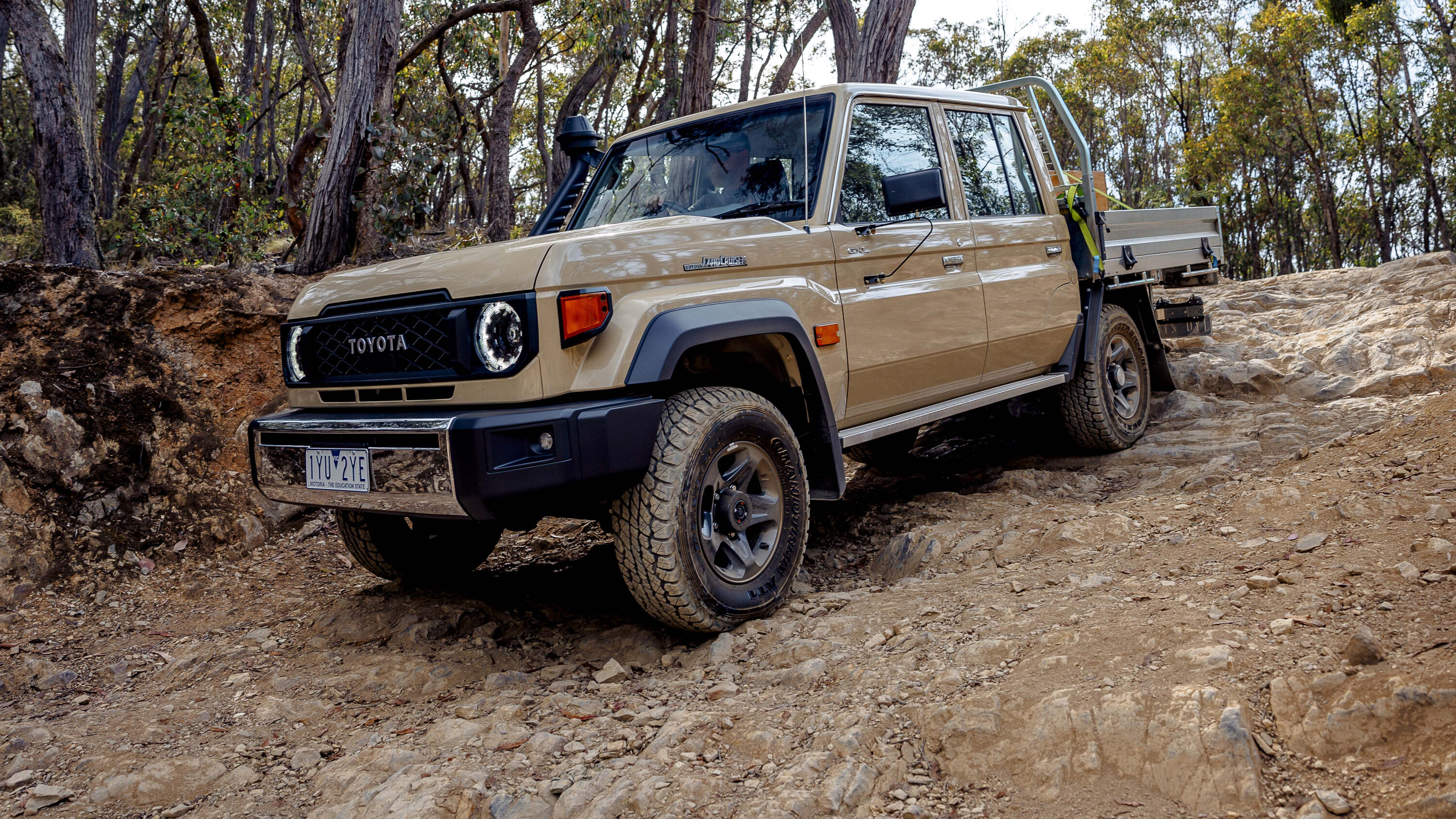
It retains a basic commercial body mounted on a heavy duty chassis, with live axles at each end suspended by coil springs under the front and load-lugging leaf springs at the back.
The front sheet-metal has copped a minor update with a blockier style and reverting back to traditional round headlights, albeit with LED halo rings, but the look remains unmistakably 70 Series. There’s even a nod to the old 40 Series in the new grille vent.
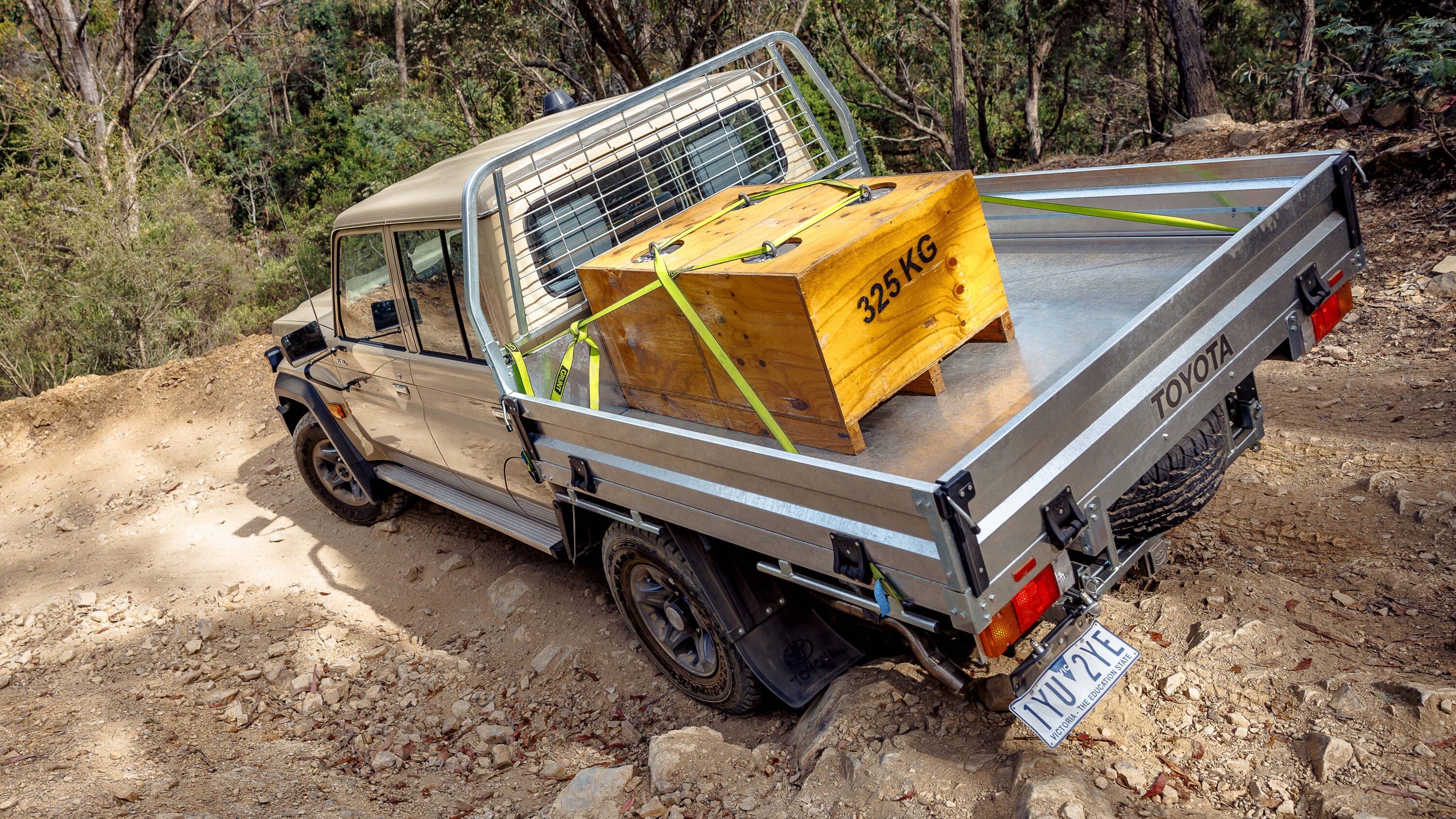
This engine and transmission are well proven from the Toyota Prado, HiLux and other models, but this is the first time they have been fitted to the 70 Series range. They join the existing 1VD-FTV V8 diesel and five-speed manual driveline combination; although, models fitted with that powertrain will be harder to source from your dealer.
There’s been plenty of consternation about a four-cylinder engine taking the place of a V8 in Toyota’s workhorse 4×4, but with more torque than the standard V8, a similar power figure, the promise of lower fuel consumption, and the improved driveability of an automatic transmission, this new powertrain will appeal to many buyers.
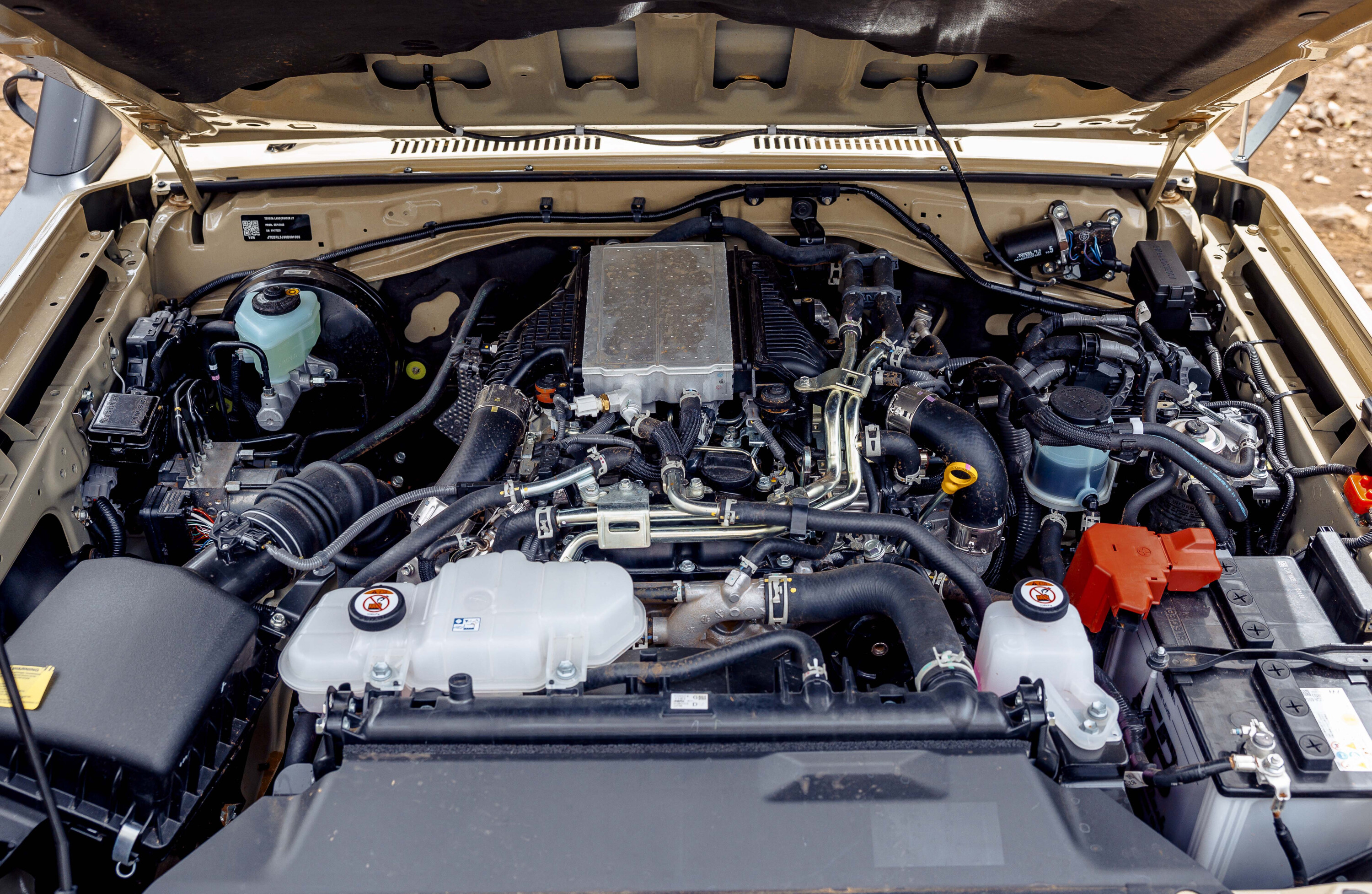
We heard rumours Toyota was testing such a powertrain in the 70 up to four years ago; and while the company was always tight-lipped on it, they have now confirmed there were four such equipped prototypes testing in Australia back then.
To test it for ourselves we took an LC79 GXL double cab with the 2.8/auto combination, loaded it up with 650kg on the tray and hit the tracks.
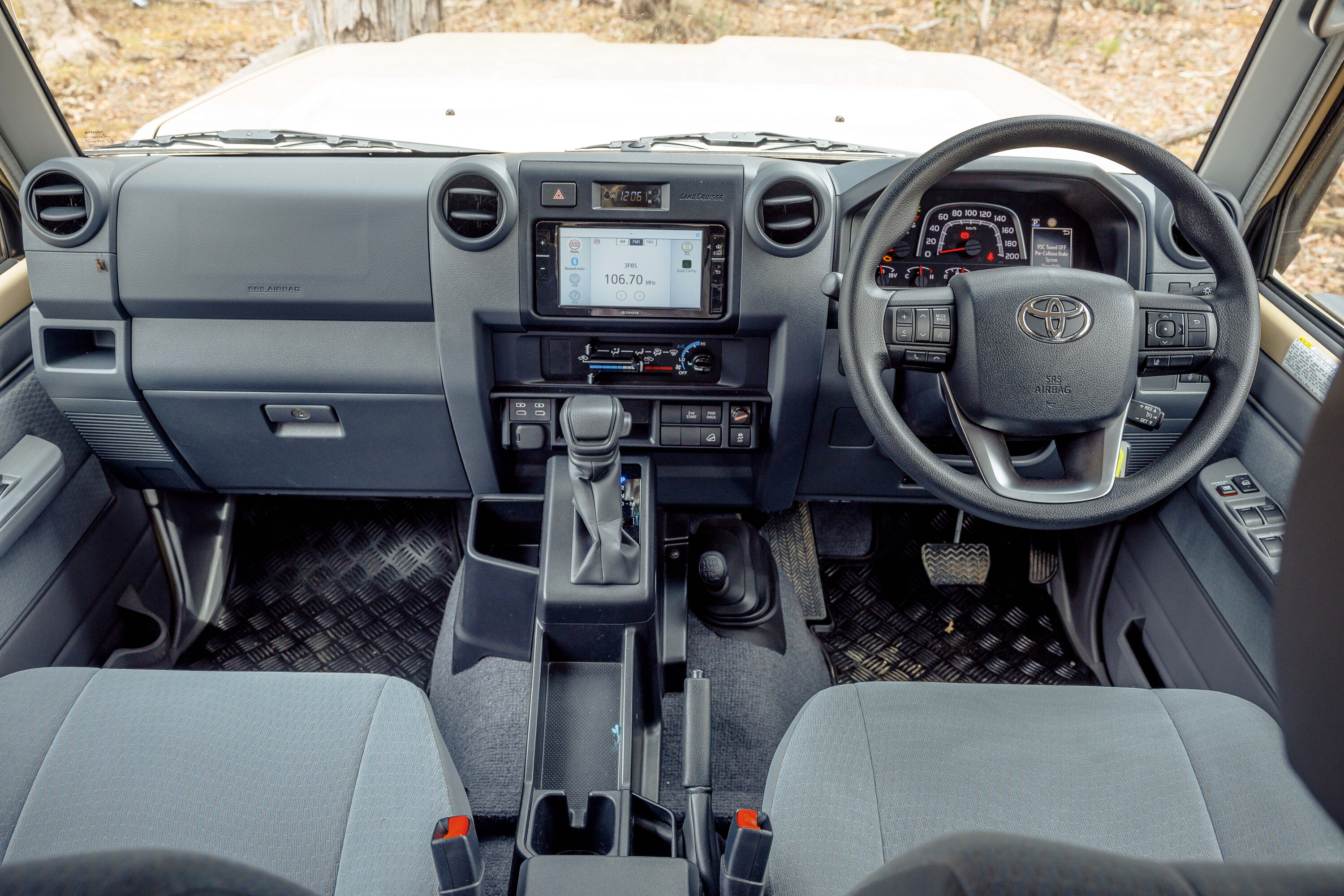
All grades and engines have a 3510kg GVM. You also need to take the weight of the tray off that payload as the LandCruiser doesn’t come with one; it’s extra and your payload will depend on what you put on the back, so we reckon our 650kg load was respectable considering we were heading for some steep off-road tracks.
We had a weekend with the Cruiser before we loaded it up and unladen it feels almost sprightly with the 1GD/auto combo, certainly more so than with the V8. The 2.8 gets on with the job and the auto transmission gives nothing to complain about.
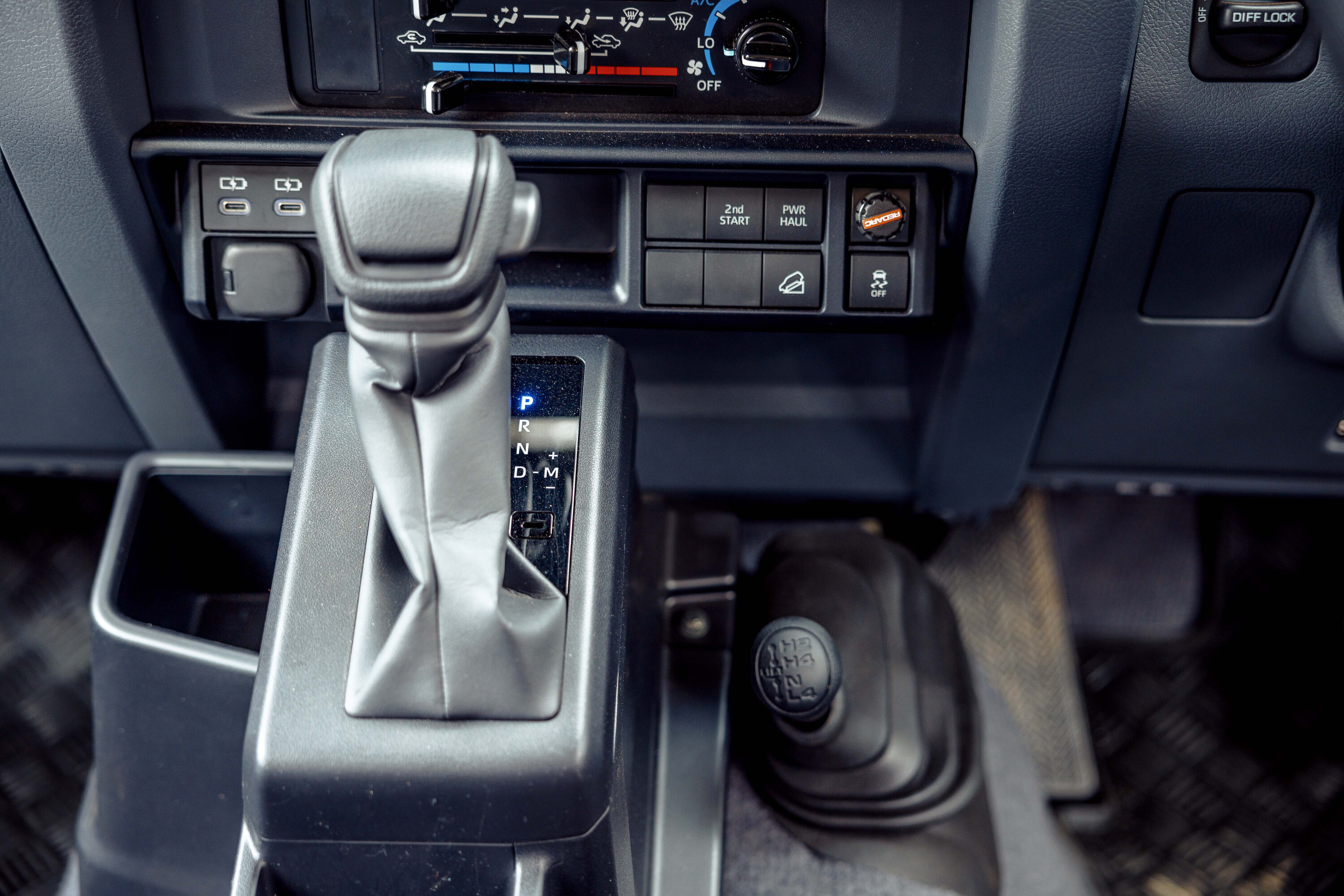
With the 650kg load on the back and out on the open road, the engine certainly feels the weight. It is less responsive and requires foot-to-the-floor application to maintain the 110km/h speed limit on hills. That said, the V8 was never much good in this regard and we feel the four-cylinder does a better job of it.
Our previous back-to-back testing with a 3100kg caravan behind each powertrain showed this to be the case.
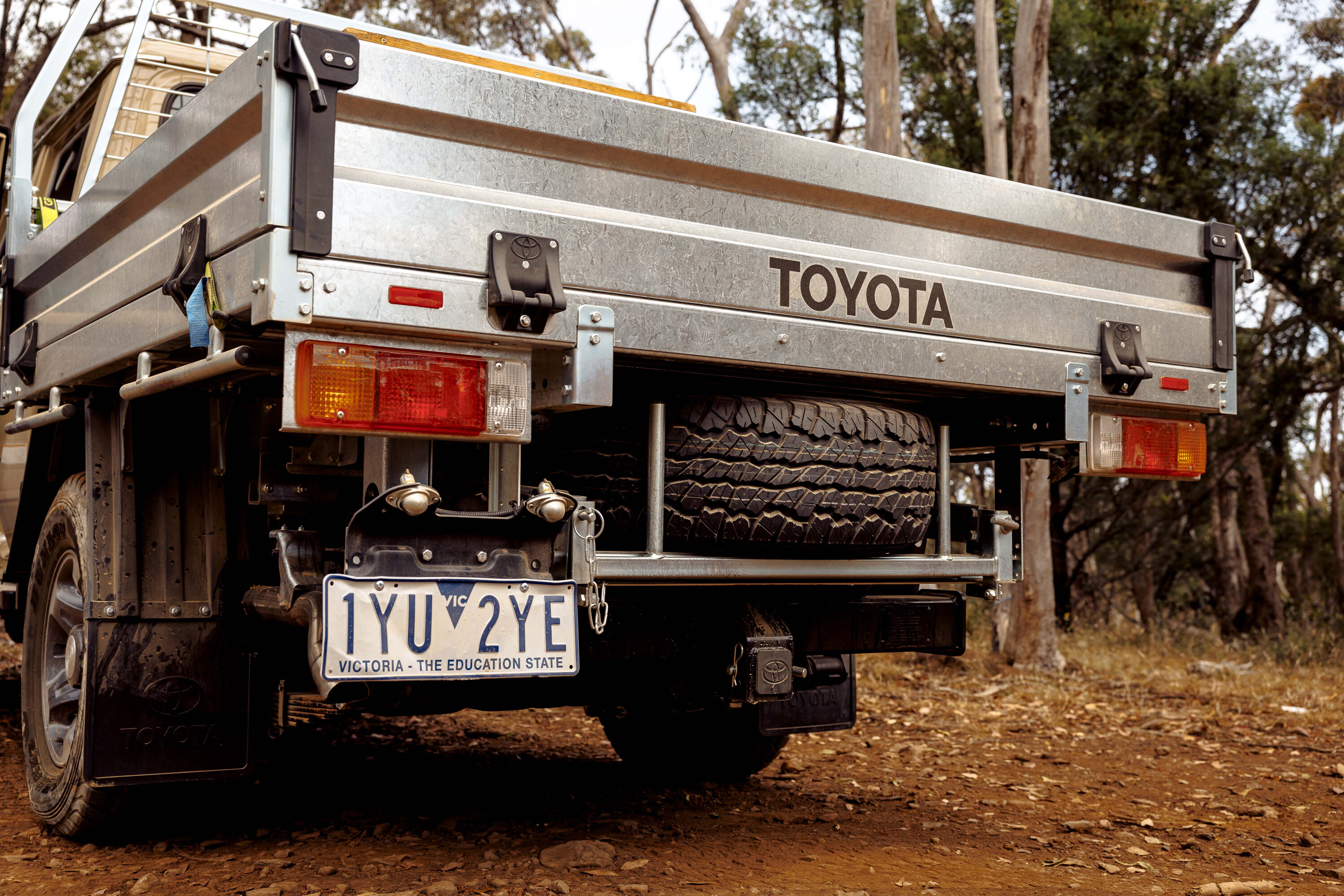
The rear suspension dropped considerably when the load was added in the tray, but this took some of the jitteriness out of the ride as the vehicle is sprung very stiffly. The ride quality was better with the weight on despite the bum-down, nose-up stance of the laden Cruiser. There was no noticeable lightness of the steering.
The old ball and nut steering box means the 79 has the turning circle of the Queen Mary (15m) but you soon get used to it and learn your limits.
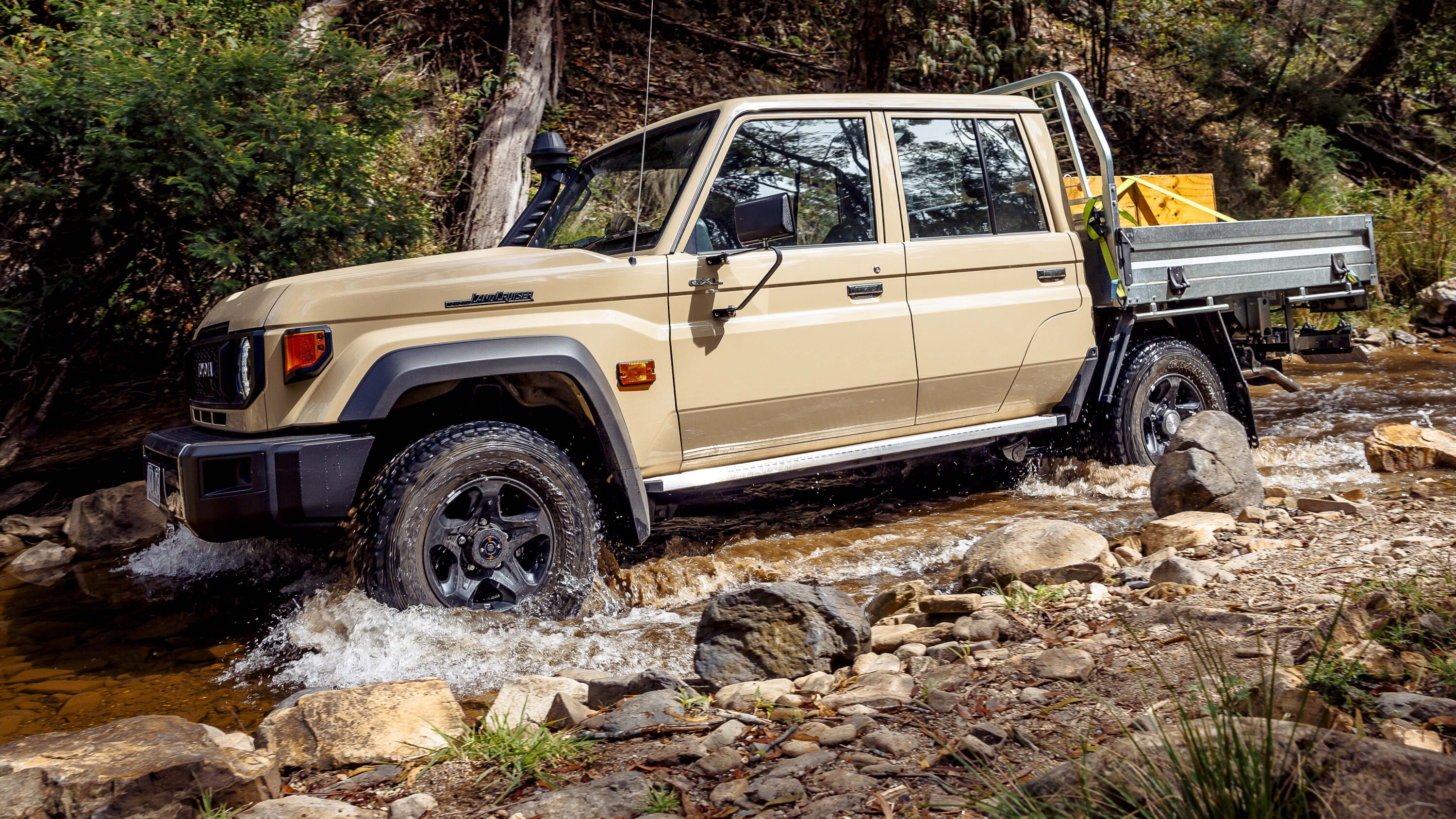
LandCruiser 70s with the 1GD/auto powertrain also get downhill assist control that automatically maintains a set speed and manages wheel slip on steep descents. The automatic gives this combo taller overall gearing than the V8 manual, so the electronic assistance comes in handy in steep country.
Less handy is the hill start assistance that holds the brake when you release it to aid hill starts, but is effectively redundant on a vehicle with an automatic transmission.
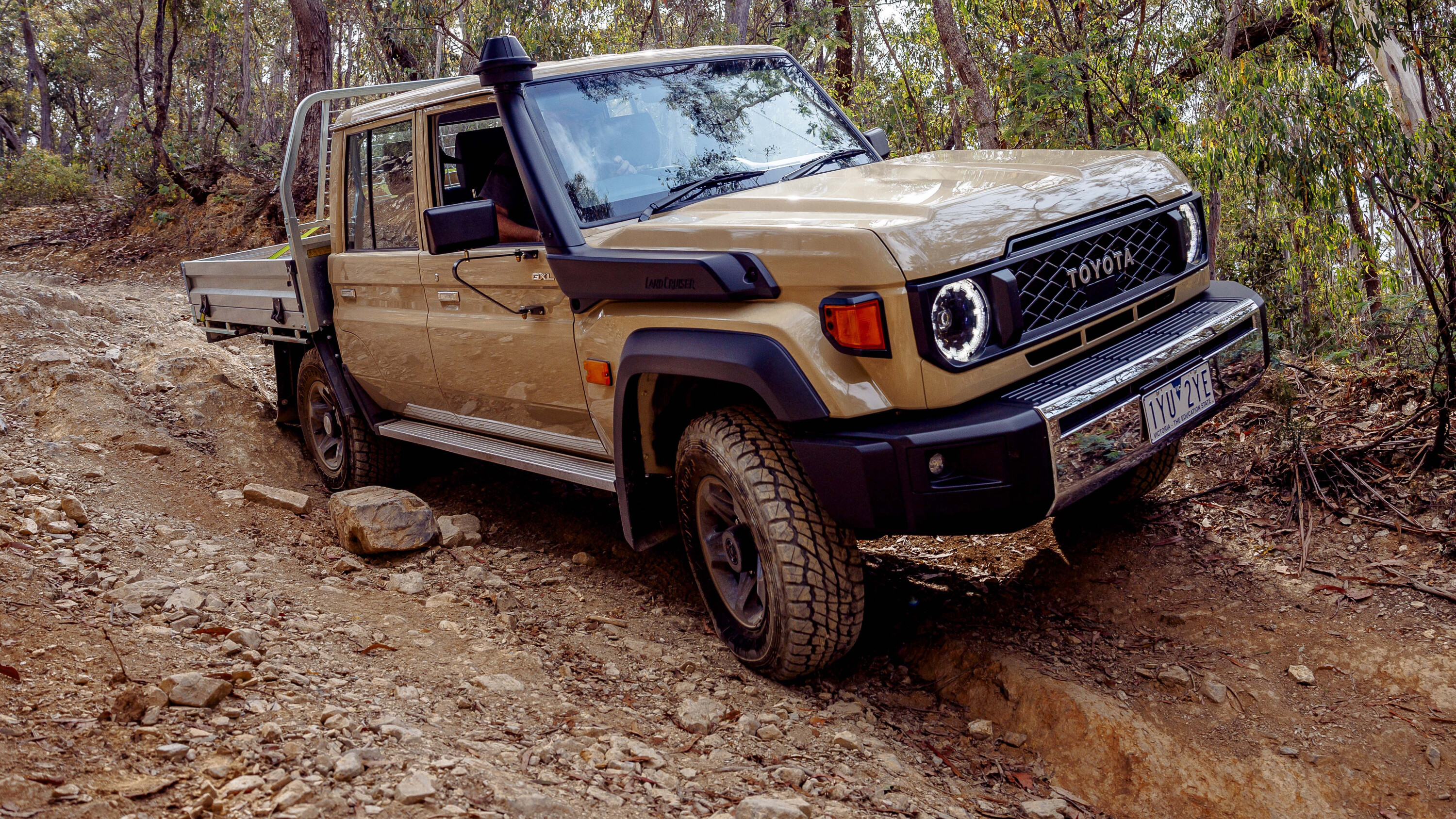
It’s still a relatively stiff setup and the chassis doesn’t give much flex so the 79 easily picks up wheels in uneven terrain. This is where the differential locks and ETC come in handy.
The auto transmission shifter has a tap-to-the-left gate for manual gear selection and low-range first gear was sufficient for the steep descents on this drive, with the occasional tap on the brakes to steady the ship.
The tall cabin with its large flat windows makes negotiating tracks relatively easy as it gives the driver plenty of visibility for wheel placement. Less accommodating is the location of the rear number plate which hangs low under the tray. This has always been a problem on these factory Toyota trays as the number plate scrapes the ground easily and we’ve lost a few over the years.
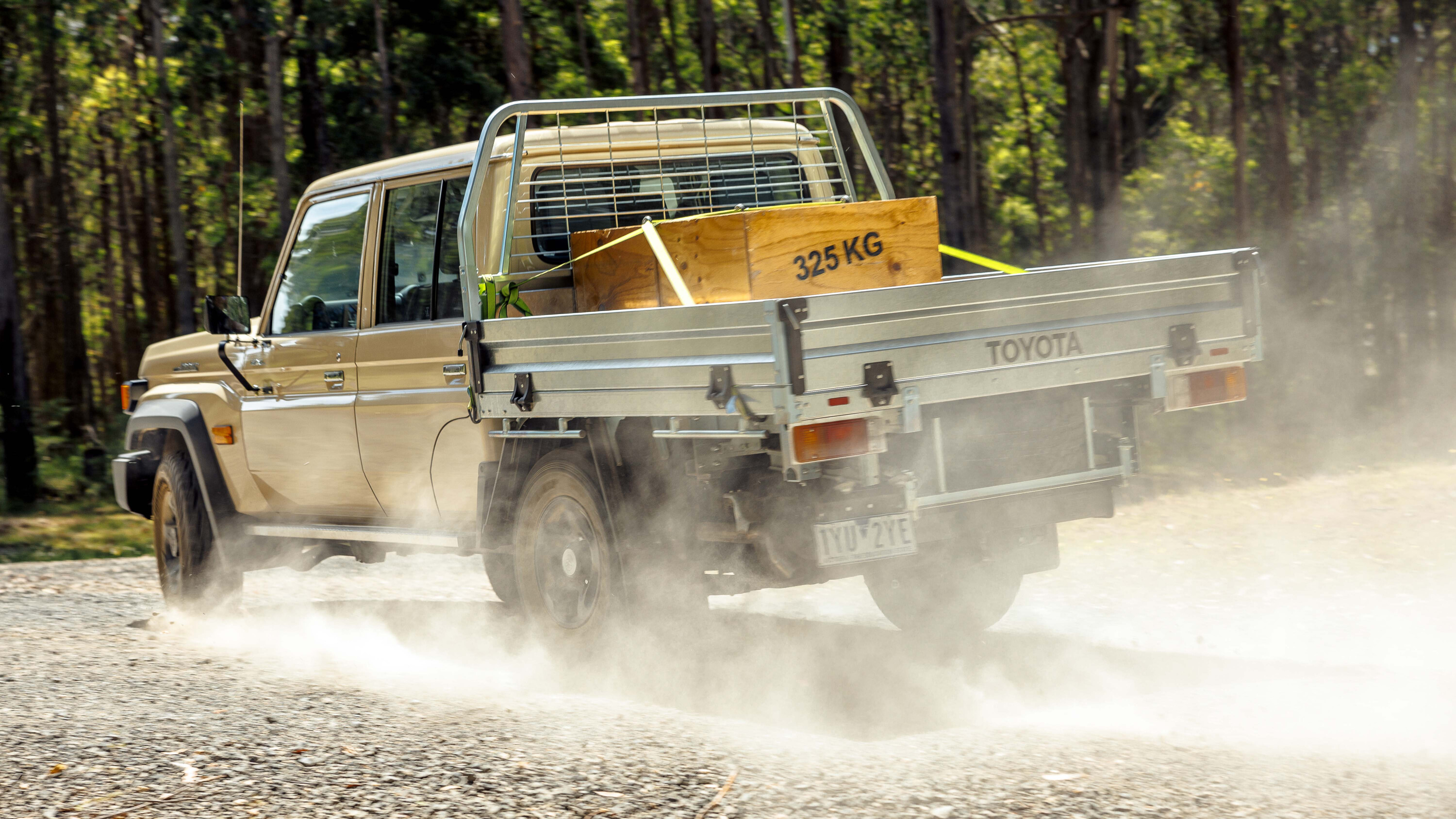
While we’re talking about the tray, the absence of any internal tie-down points makes securing loads harder than it should be; we had to run straps under the side boards and find somewhere on the frame to attach them.
The hooks on the straps we used were too narrow to grip around the external load rails, so securing our load wasn’t as easy as it could have been.
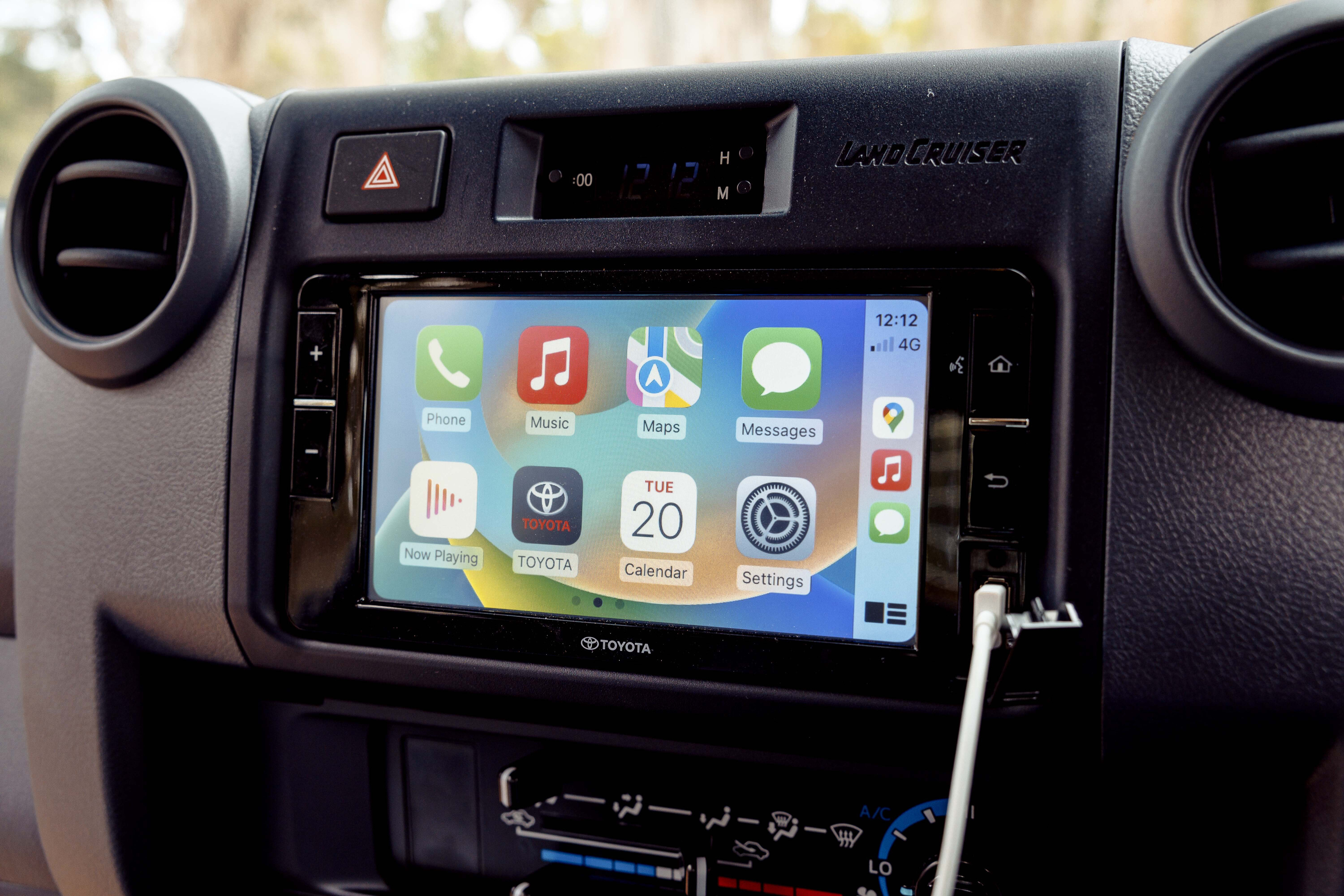
The 2.8 and auto made light work of climbing out of steep gorges in low range. It was keen to pick up a front wheel when climbing out of ruts, but the standard ETC did such a good job we didn’t need to engage the lockers.
Even in standard trim on the stock tyres, the LandCruiser is an excellent off-road workhorse and you can see why it’s relied upon by so many farmers and industries in the outback and the bush. There really is nothing else like it on the market … yet.
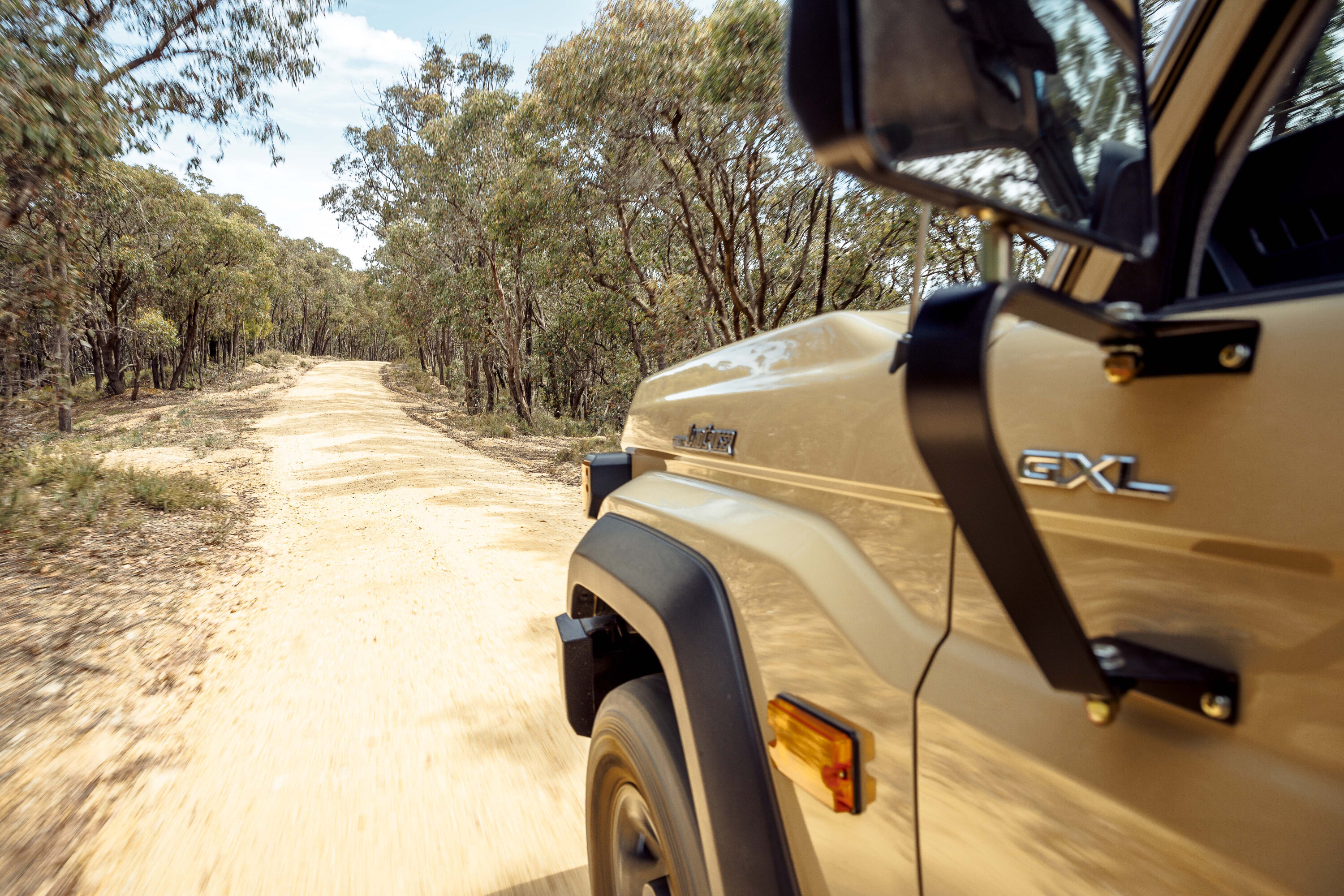
The GXL gets some concessions such as power windows and cloth seats, and there’s a new infotainment screen that is small by modern standards but it allows you to hook up your phone for Apple CarPlay and Android Auto.
The sound from it is shocking, as it still pumps out through a pair of paltry four-inch speakers mounted in the dash panel. It’s no wonder aftermarket sound-deadening kits and audio-system upgrades are big business for these Cruisers.
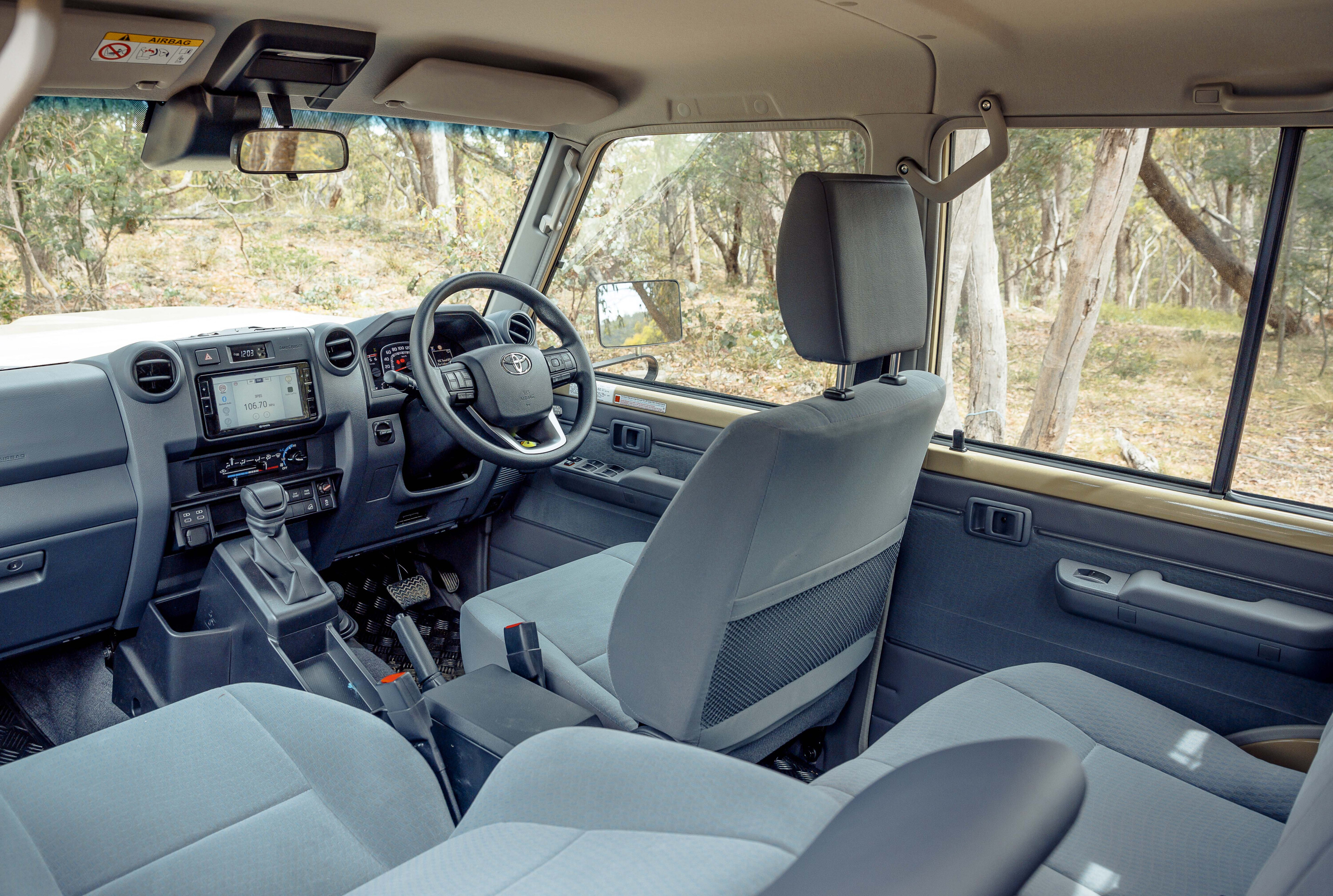
This is one of my favourite parts of the new 70 as I love the look, and having a digital speed readout in the 4.2-inch display is always a plus when driving in Victoria. Speed sign recognition in the same panel is also welcome.
The seats are slim but comfortable enough, but again you can see why many owners choose to fit aftermarket options. The rear seat has plenty of room for three passengers but adults will be shoulder-to-shoulder back there.
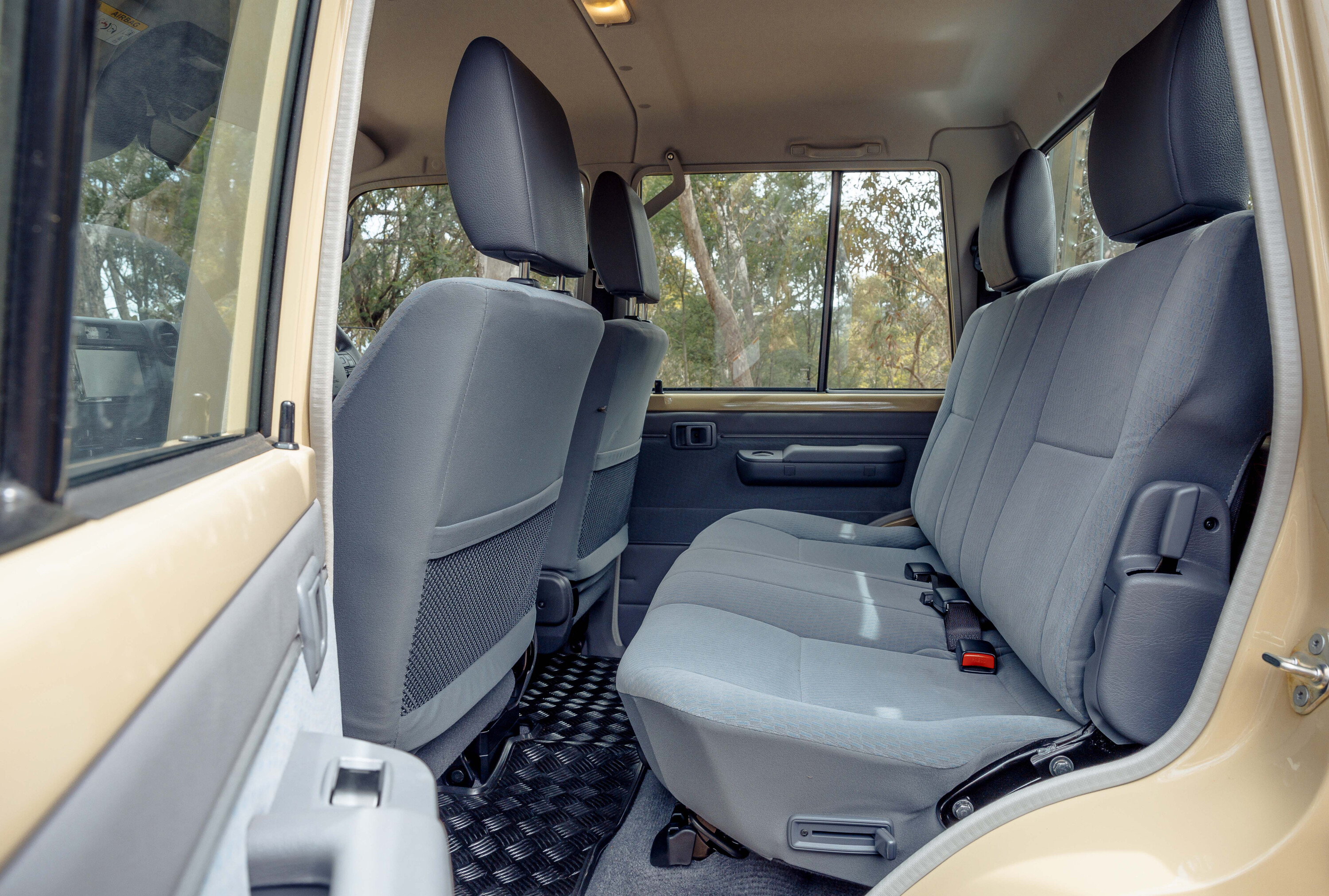
It’s small steps forward in terms of safety when compared to newer vehicles but when you consider Toyota is building on a 40-year-old platform, any advance is a step forward.
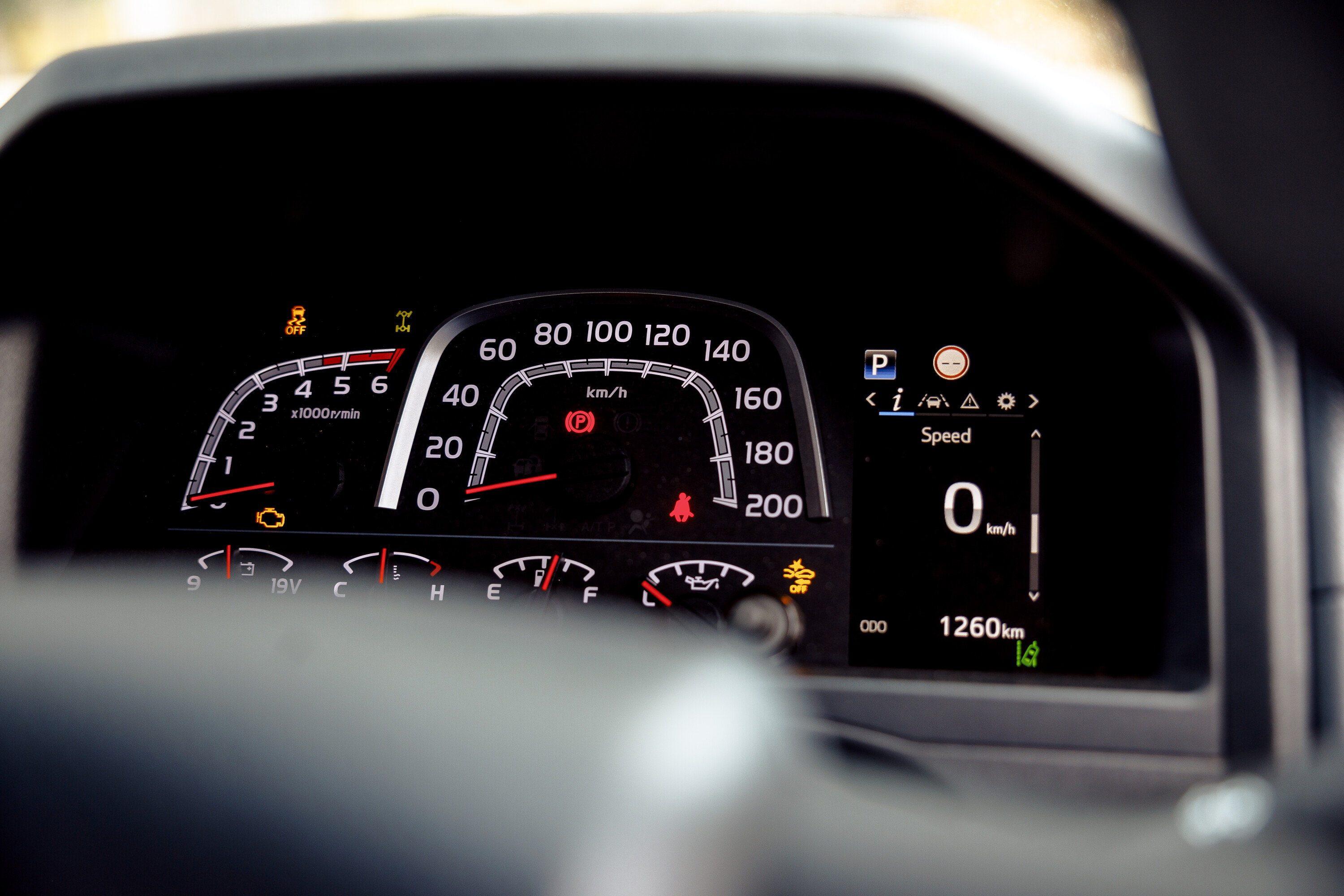
Likewise the introduction of the 1GD 2.8 engine is future proofing the iconic workhorse against possible changes to emissions regulations which might soon rule out the 1VD V8 engine from Australian sales, while at the same time introducing an automatic transmission to fill that hole in the market.
Of course, there will still be those who call out for an auto behind the V8, whereas I feel the best combo would be a six-speed manual behind the 2.8; everyone wants something different, which is why the 70 Series remains one of the most customised 4x4s on the market.
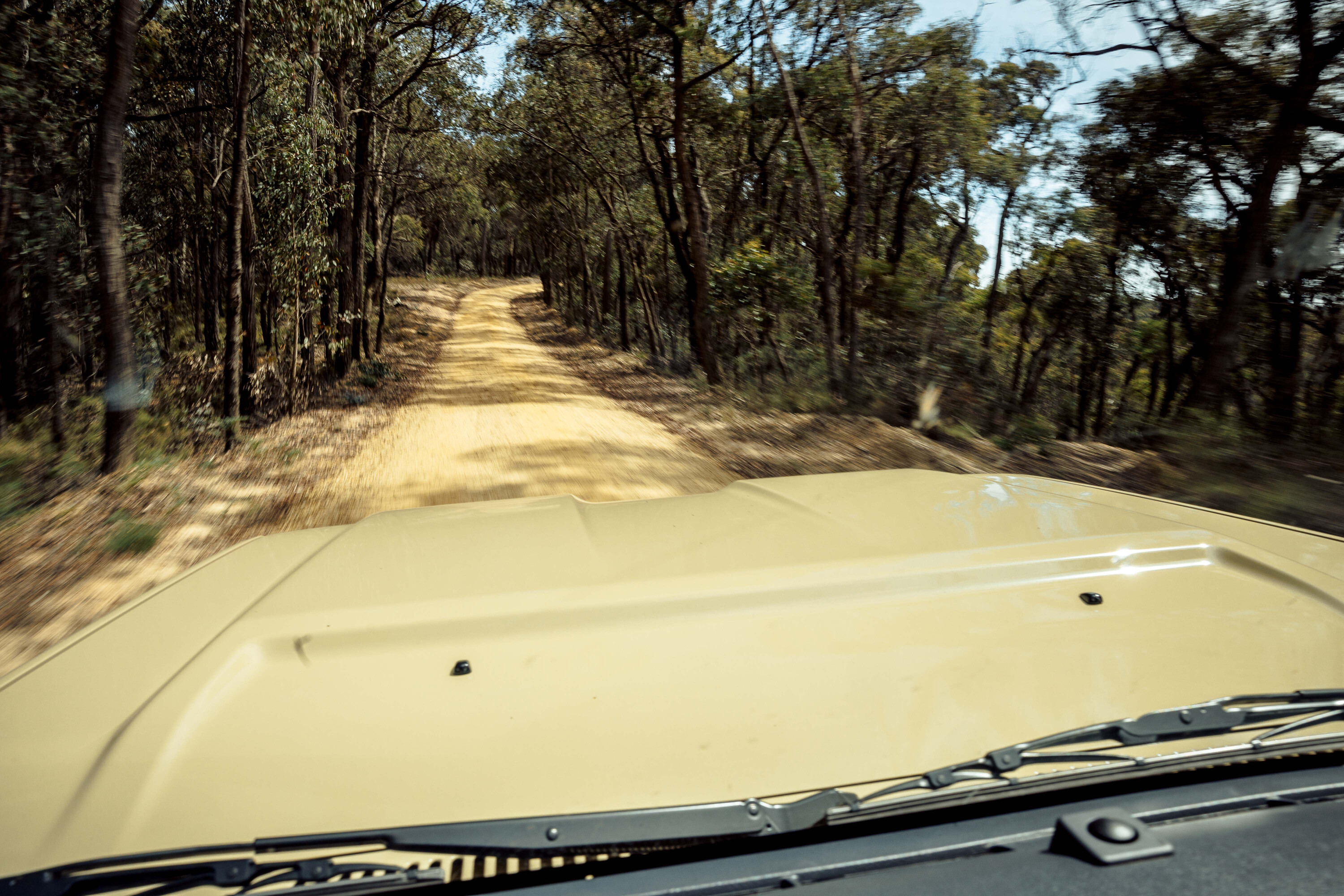
With this new drivetrain the 70 is a better-working truck suited to more industries and drivers which is what it was originally designed to be more than 40 years ago.
The 70 Series Cruiser, no matter what model you choose, remains a unique vehicle in the market and we should appreciate what has been done to keep it available to us. There is nothing else like the LC79; ever since Nissan stopped building its Patrol ute and Land Rover its Defender pick-up, the LC79 has been in a class of its own.
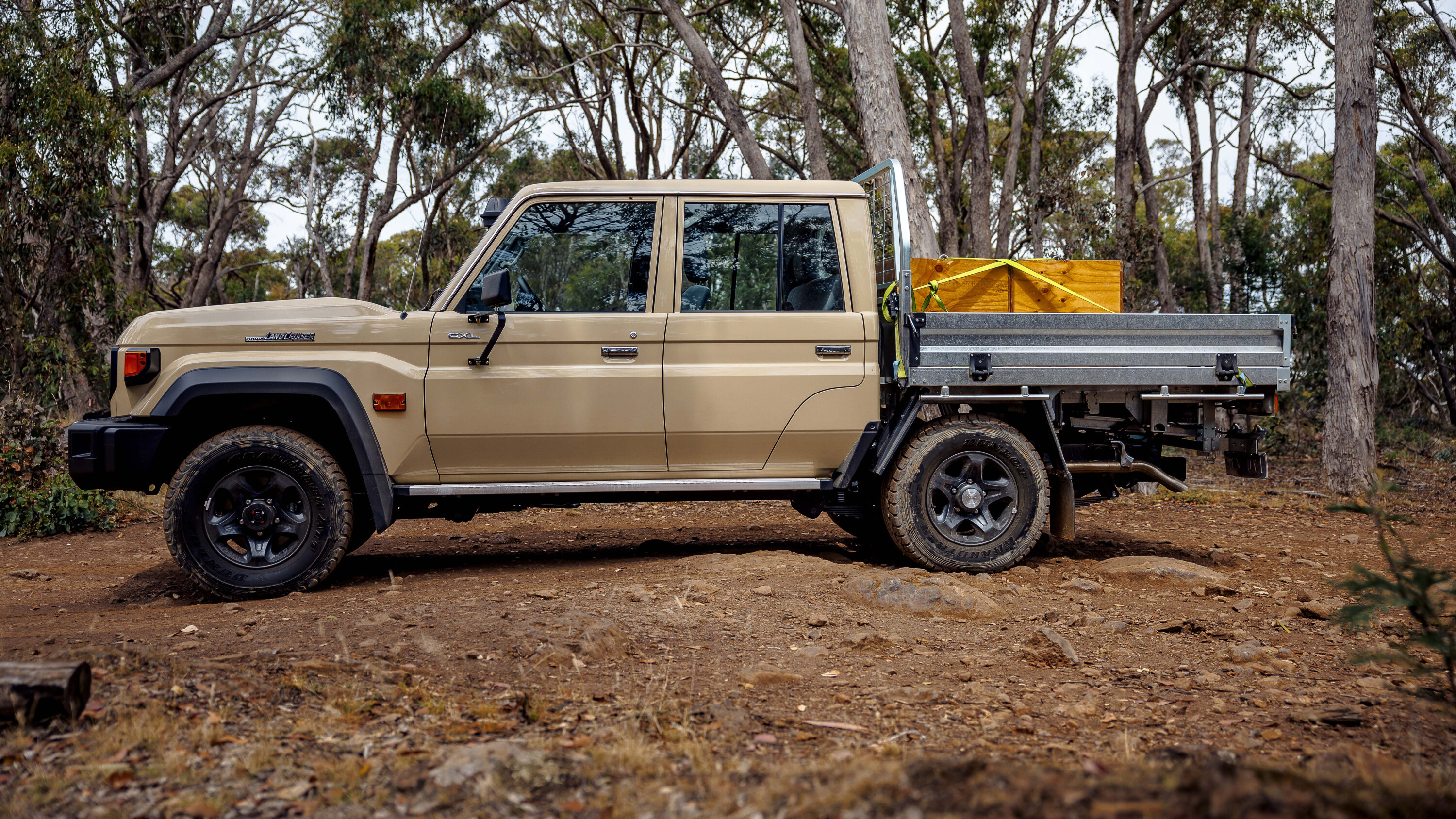
It’s made to carry loads over rough tracks all day, every day. Likewise, no midsize 4×4 ute can match the capabilities of the 70 when the going gets tough. It will be interesting to see how the Ineos Quartermaster compares to the 79 when it is released later this year but it has four decades of glacier-paced development to catch up on.
| 2024 LandCruiser GXL 79 Double Cab 2.8 specifications | |
|---|---|
| Price | $83,500 |
| Engine | Inline 4 diesel |
| Capacity | 2755cc |
| Max power | 150kW@3000-3400rpm |
| Max torque | 500Nm@1600-2800rpm |
| Transmission | 6-speed automatic |
| 4×4 system | Part-time 4WD, dual-range, front and rear lockers |
| Crawl ratio | 38.51:1 |
| Construction | 4 door ute body on ladder frame chassis |
| Front suspension | Live axle with radius arms and coil springs |
| Rear suspension | Live axle on leaf springs |
| Tyres | 265/70RR16 on alloys |
| Kerb weight | 2185kg |
| GVM | 3510kg |
| GCM | 7010kg |
| Towing capacity | 3500kg |
| Payload | 1325kg |
| Seats | 5 |
| Fuel tank | 130L |
| ADR fuel consumption | 9.6L/100km combined |
| On-test fuel consumption | 14.01L/100k |
Sharing plenty in common with the all-new 2024 Toyota Prado 250 Series due in Australia within the next three months, the latest 4Runner is also heavily related to the Tacoma ute – with all three models sharing the brand’s TNGA-F platform also common to the full-size LandCruiser 300, Tacoma and Sequoia.
The latest Tacoma is a preview for the all-new HiLux, due in Australia within the next 24 months. Some elements from the 4Runner revealed this week could eventually reach the Fortuner SUV sold in Australia as the HiLux and Fortuner are tipped to switch to the TNGA-F platform in next-generation form.
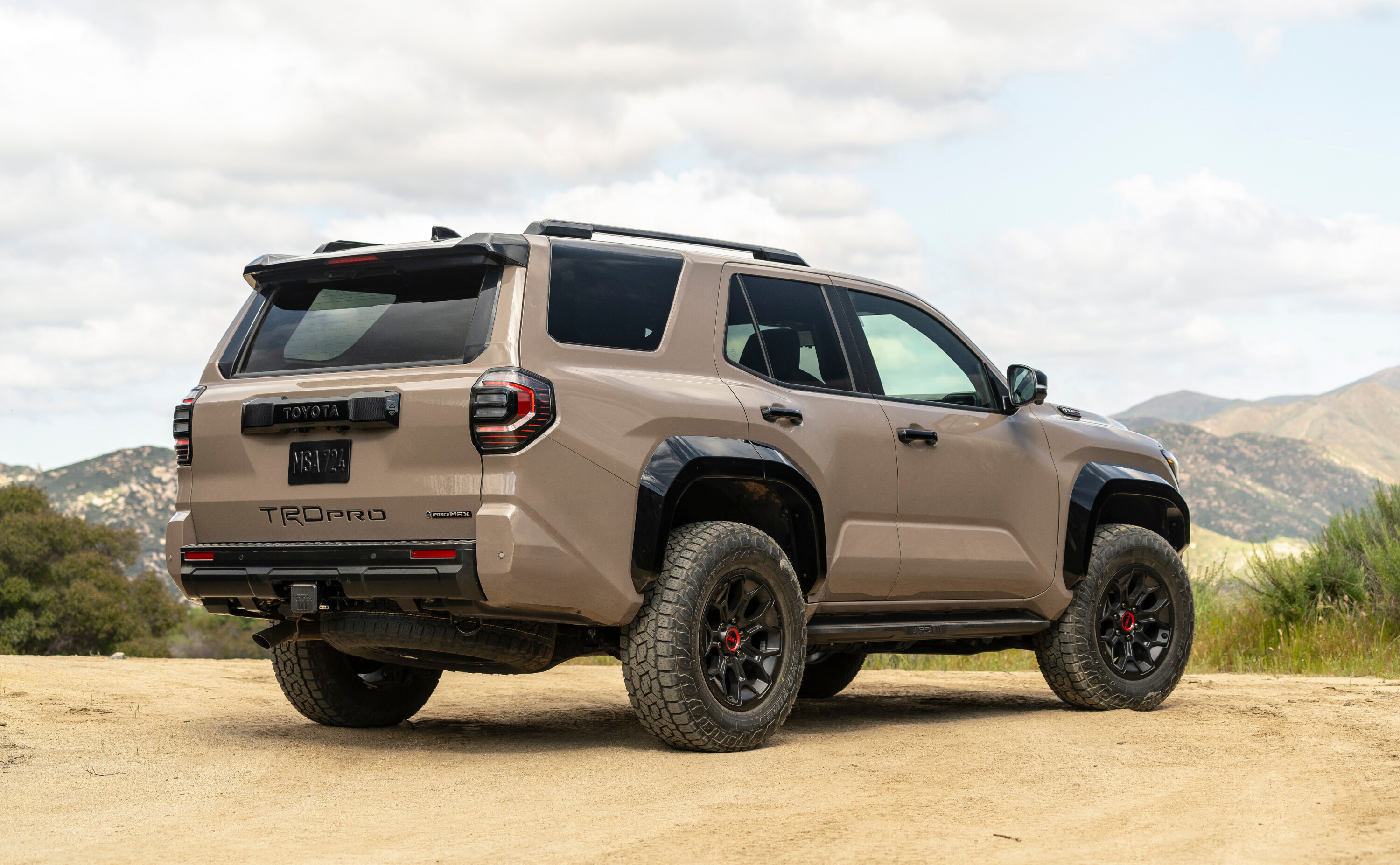
“Toyota Australia is continually studying the market for new opportunities to offer exciting new products to Australian customers,” said a brand spokesperson
“At this stage however, we have no announcements to make on the Toyota 4Runner for the Australian market.”
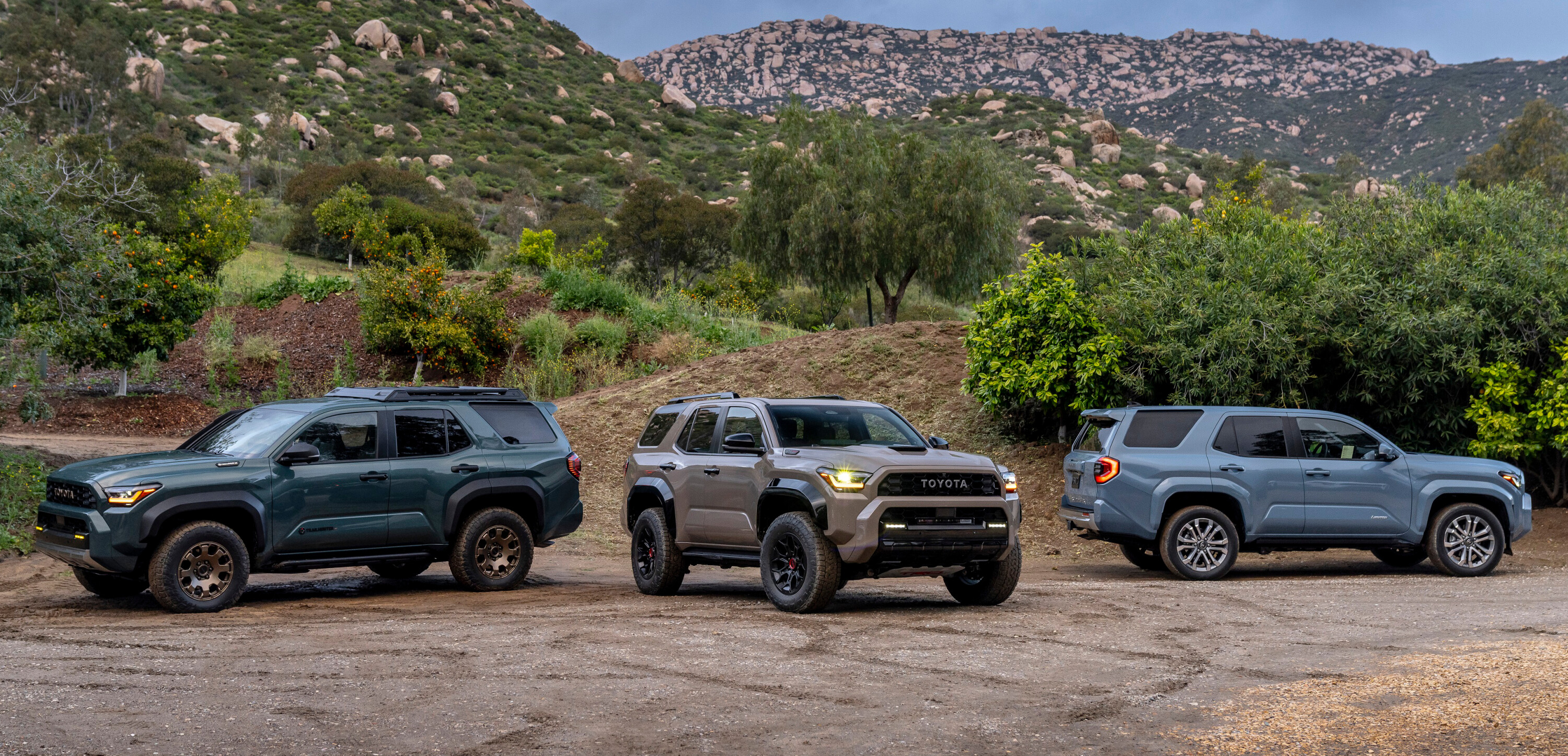
Now in sixth-generation form, the 4Runner adopts the same 2850mm wheelbase as the Prado, LandCruiser 300, Lexus GX and Lexus LX – a dimension considered ideal for off-roading that originates back to the LandCruiser 80 Series.
This is 61mm more than before, while length and width are up 119mm and 51mm to 4950mm and 1976mm, respectively.
The 4Runner has a 32-degree departure angle (-1), a 24-degree approach angle (-2), and a ground clearance up to 233mm (-11mm).
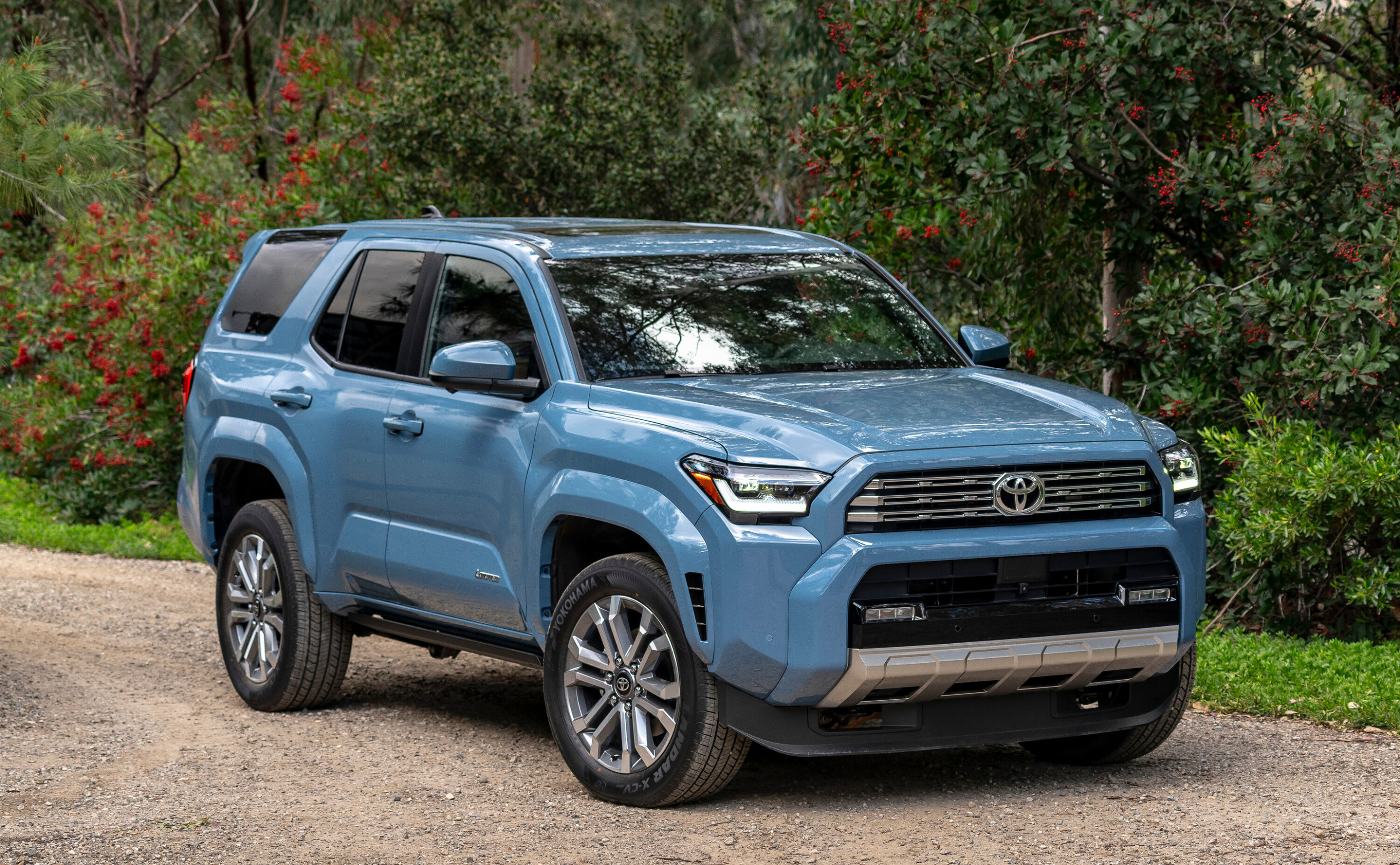
Paired to an eight-speed automatic transmission, base models will have a non-hybrid ‘I-Force’ version with 207kW and 430Nm – an improvement over the 201kW/376Nm 4.0-litre naturally-aspirated V6 and five-speed automatic in the old 4Runner.
Flagship models upgrade to the hybridised ‘I-Force Max’ setup with an electric motor sandwiched between engine and transmission and a 1.87kWh nickel-metal hydride battery pack for a 246kW and 630Nm total system output – making it the most powerful 4Runner ever.
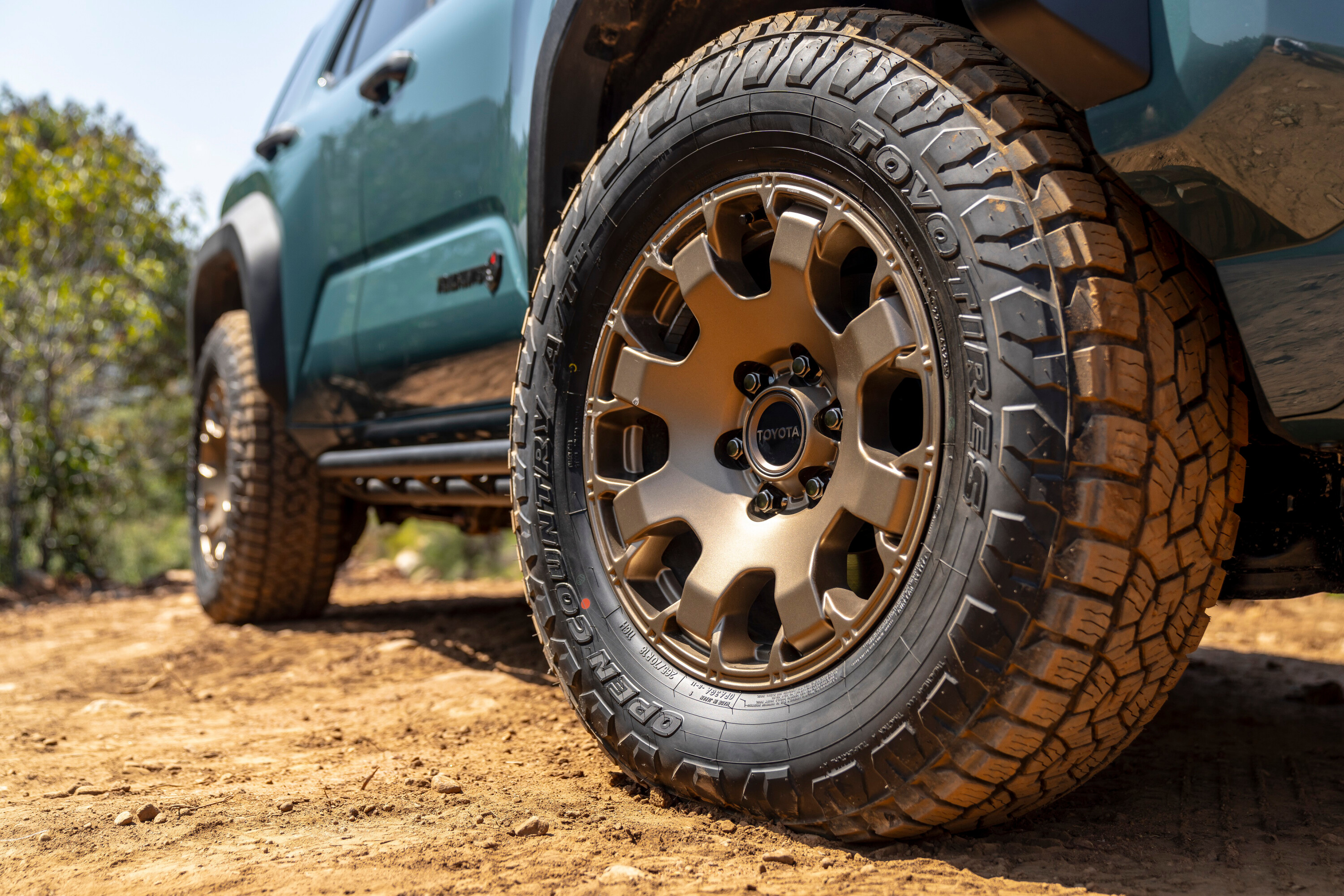
Four-wheel-drive models include Multi-Terrain Select, Crawl Control, a locking rear and centre differential, downhill assist control, active traction control, and an automatic limited-slip differential.
Off-road-focused variants are the TRD Sport, TRD Pro and Trailhunter, with the latter model featuring parts developed with Australian accessory supplier ARB, such as Old Man Emu forged shocks with rear external piggybank remote reservoirs and a unique roof rack.
The Trailhunter also includes 33-inch Toyo Open Country all-terrain tyres, rock rails, high-strength steel skid plates, bronze exterior highlights, an LED light bar, and colour-selectable RIGID LED fog lamps.
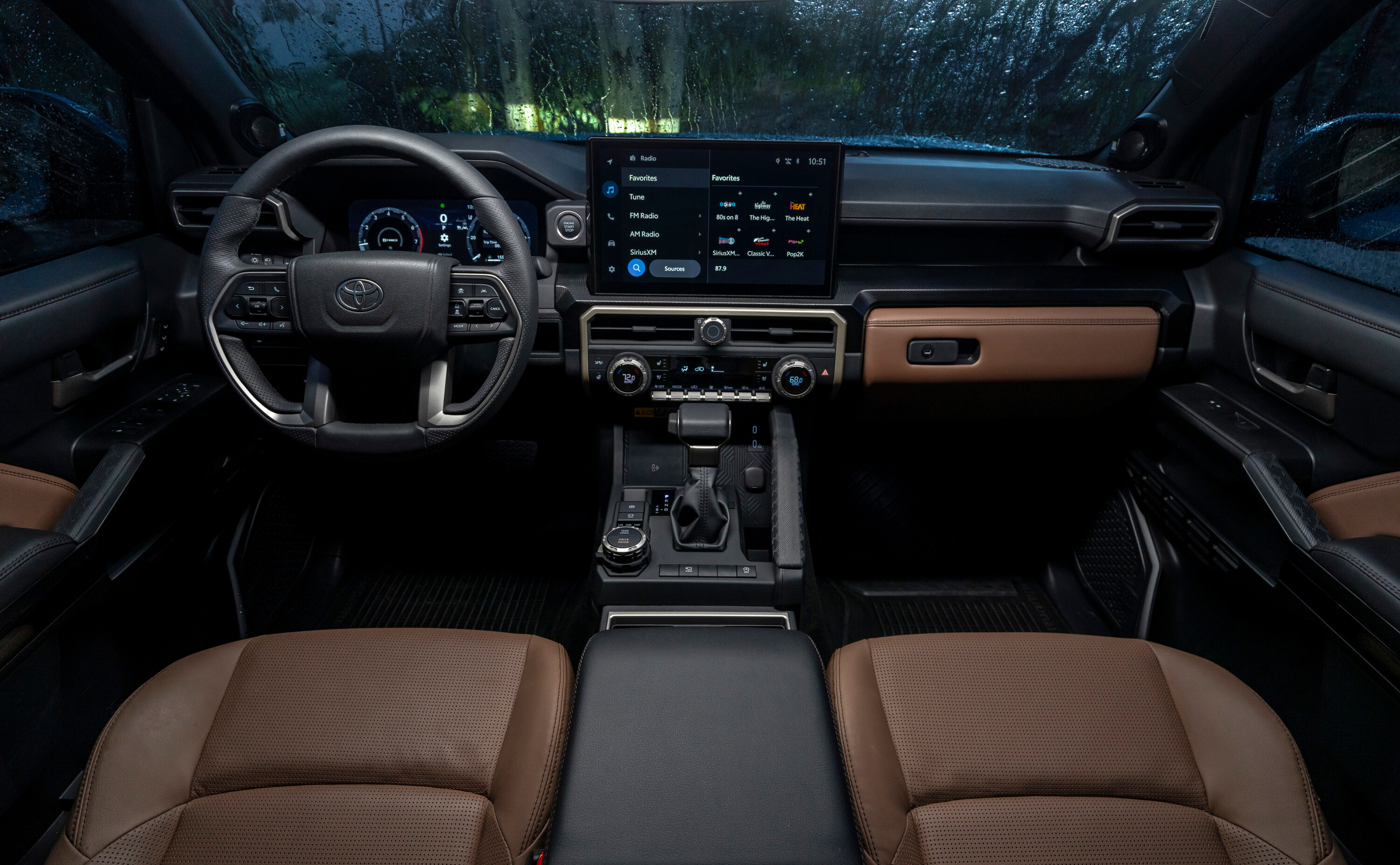
There’s also an improved active safety suite with enhanced autonomous emergency braking detection, lane-keep assist, full-speed adaptive cruise control, traffic sign recognition, and emergency stopping for inattentive or non-responsive drivers.
The 2025 Toyota 4Runner will be built at the Tahara, Japan factory alongside the Prado, LandCruiser and Lexus GX. It is due to arrive in North America between September and November.
This advanced lithium battery has been designed to meet the increasing demands of emerging applications and safety requirements in the 4×4 and recreational markets. The Invicta Xero range [↗️] includes noteworthy upgrades while still utilising tried-and-tested technology that users trust.
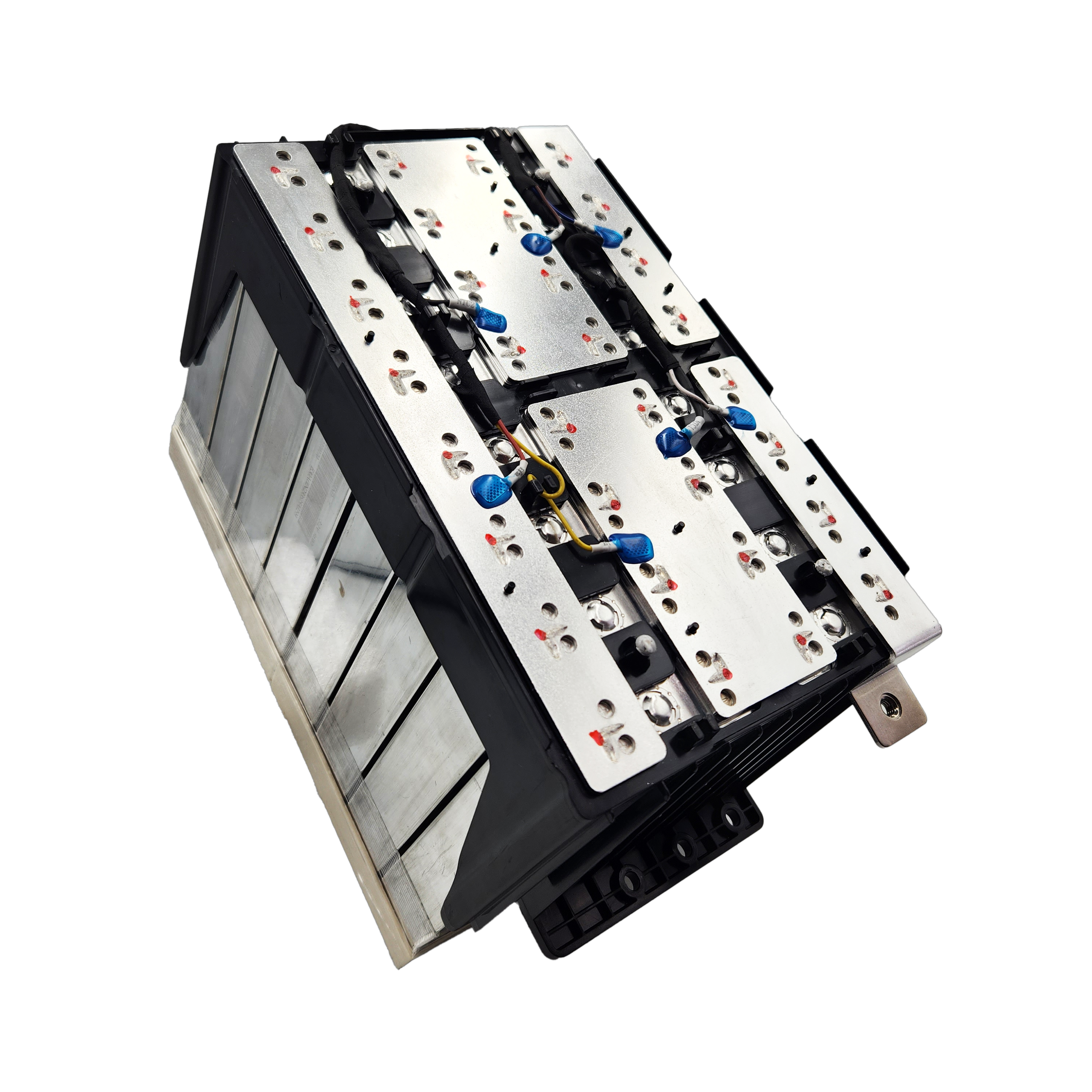
Upgrades include an improved IP67 waterproof rating; IEC 62619 safety certification; high-performance BMS; and communications via CAN bus and Bluetooth connectivity. The battery continues to use Invicta’s prismatic cells and is backed by a seven-year full replacement warranty and national customer support. You can even secure the Invicta Xero via the four detachable mounting feet using a screwdriver, a real space saver for installations.
“We are proud to introduce the Invicta Lithium Xero [↗️], a product that embodies our commitment to pushing the boundaries of what is possible in energy storage,” said Greg Roberts, Managing Director of Sealed Performance Batteries (SPB). “This battery is the future of lithium energy storage. Its advanced features and game-changing capabilities will make it a leader in the market.”
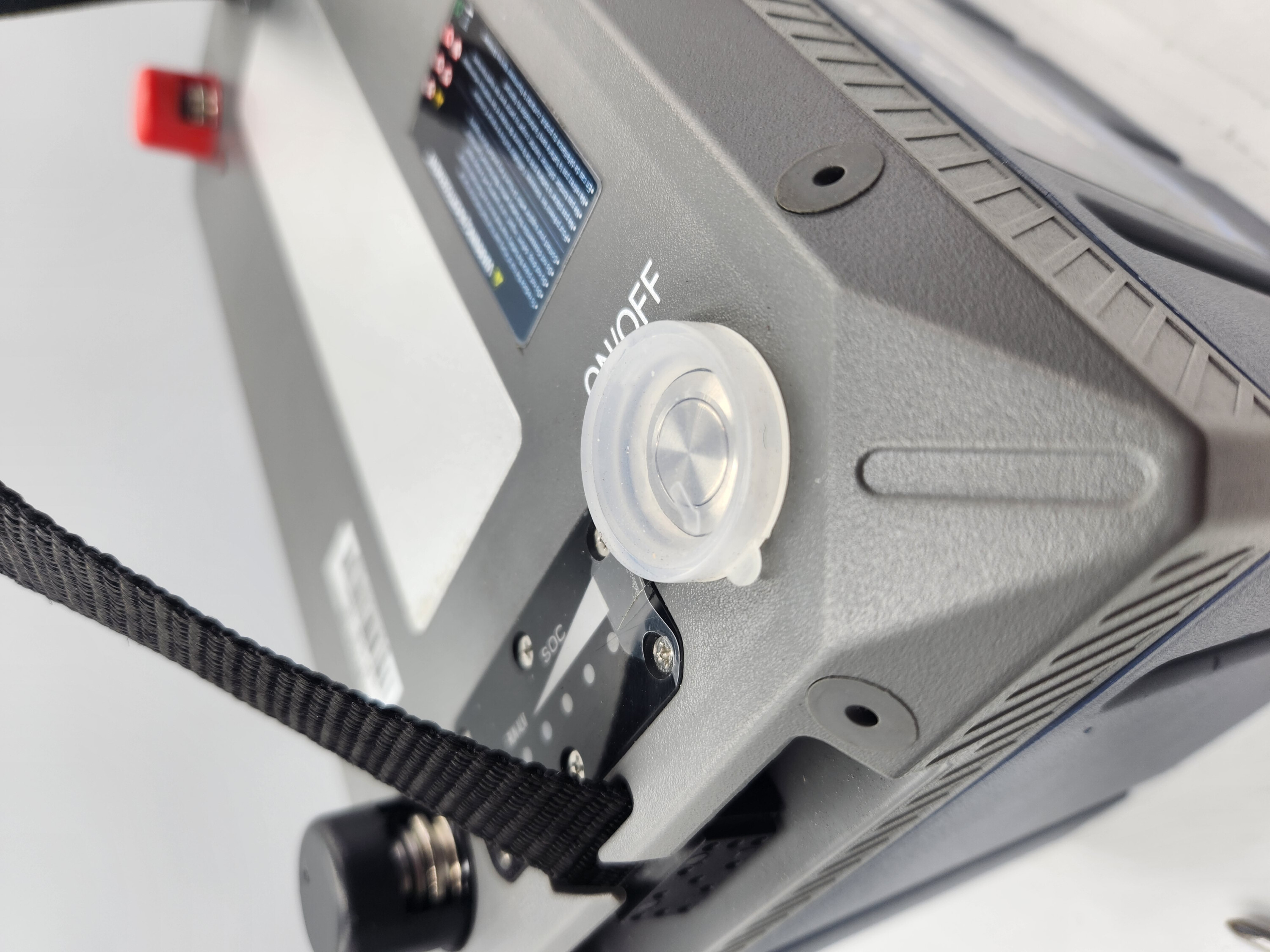
The CAN bus addition is one of the more advanced features of the Invicta Xero. It can connect to any number of devices via a CAN link to communicate directly to the BMS. This is a superior option to a shunt as it provides accurate diagnostic data to improve the application’s performance. You can also connect to the BMS via Bluetooth to monitor the essential information of the battery.
The Invicta Lithium Xero features a high-performance BMS that allows for a wider breadth of customisation compared to other lithium batteries. The BMS is engineered for optimal charging and discharging processes and boasts a cycle life of more than 3000 cycles at 100 per cent depth of discharge (DoD), including a maximum pulse discharge of 500A and a maximum continuous discharge of 150A – enough to run most 2000W inverters. You can series the Invicta Xero batteries up to four (48V 120Ah), parallel up to 16 (12V 1920Ah), or even four series and four parallel (48V 480Ah).
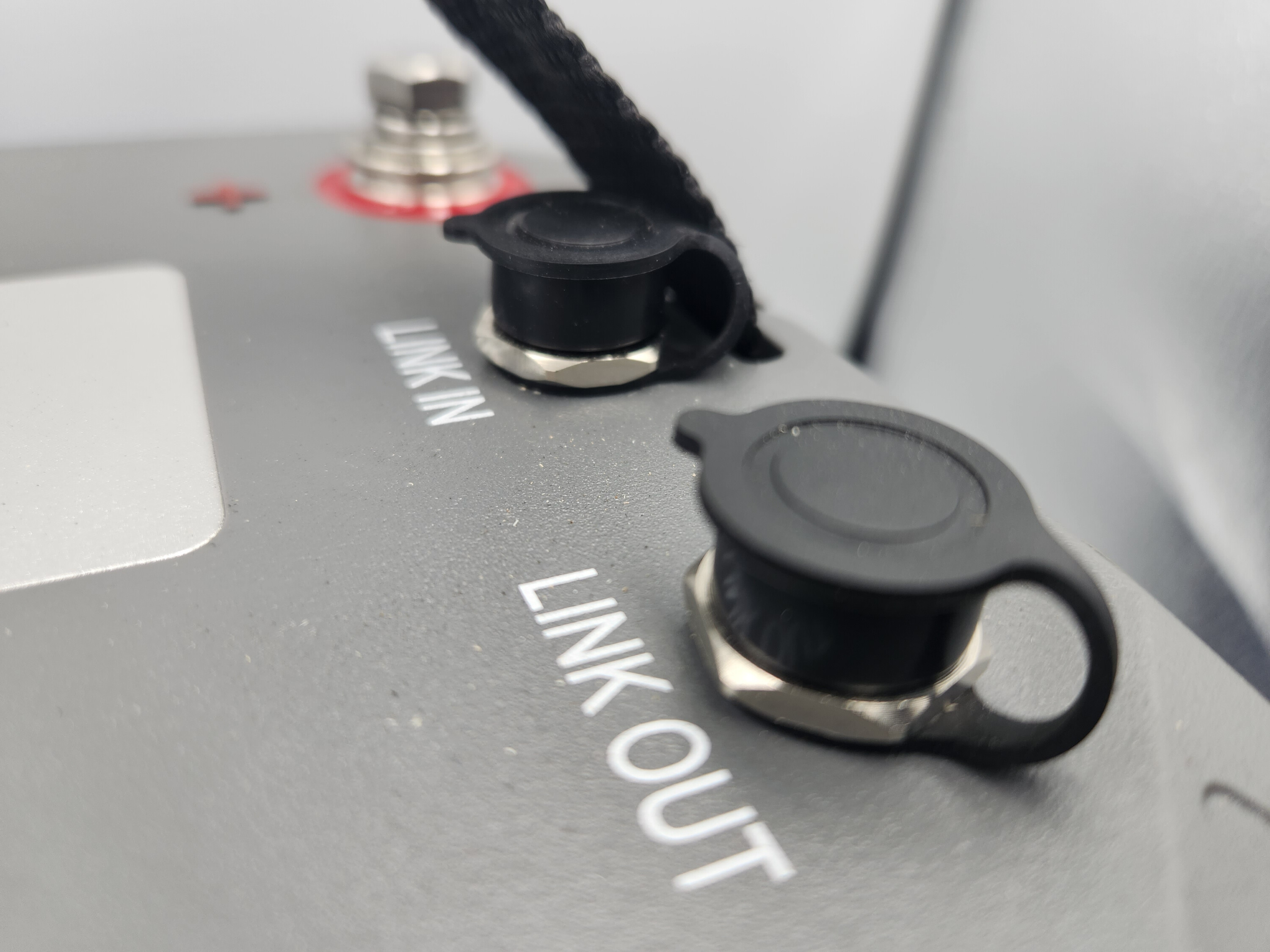
“We believe the Invicta Lithium Xero will redefine how people think about battery reliability, durability, performance, and safety,” said Ryan Hamond, Director of SBP. “Building on the already successful platform of the original Invicta deep-cycle batteries, the Invicta Lithium Xero [↗️] hosts a range of additional innovative features that will cater for applications that are using equally advanced technology. Realistically, if you want to be future-ready, then the Invicta Xero is the battery for you.”
Nissan Australia has worked with aftermarket supplier Directed Technologies to develop a revised dashboard for the Patrol, which will be fitted when the vehicles arrive on local shores.
Headlining the changes is the addition of a larger and higher-resolution 10.1-inch infotainment system with support for wireless Apple CarPlay and Android Auto – a must-have feature for many new-car buyers.
Most vehicles sold in Australia are fitted with smartphone mirroring technology, including the latest version of the 40-year-old Toyota LandCruiser 70 Series.
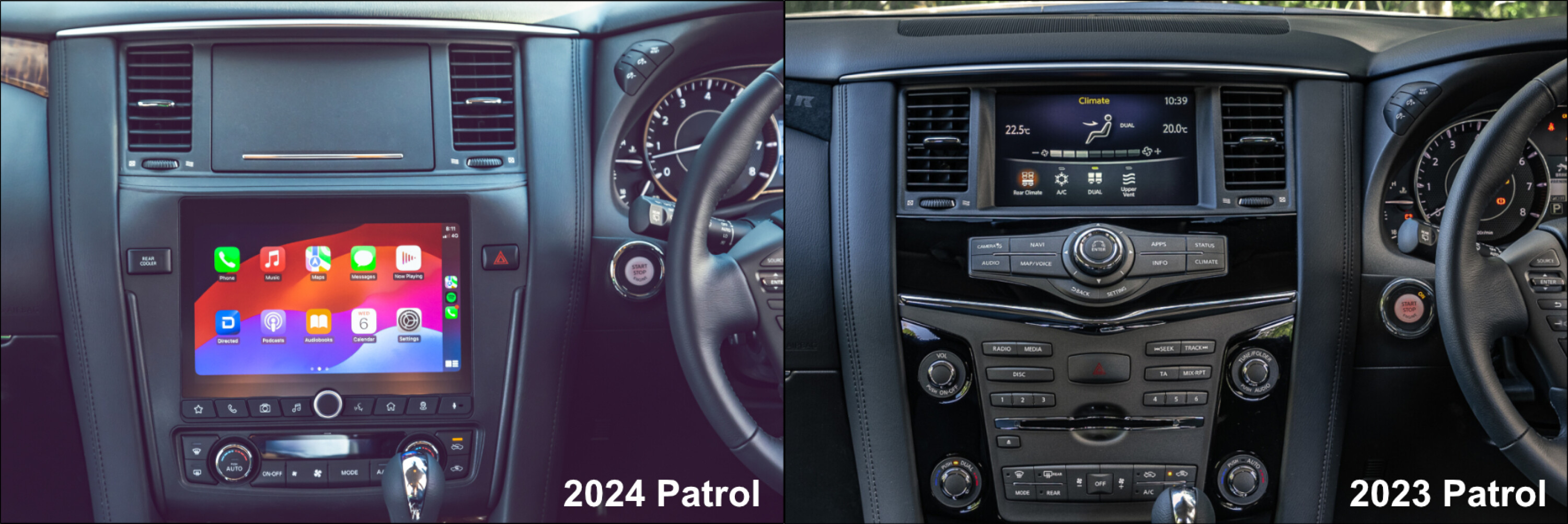
Left-hand-drive versions of the Patrol have been offered with a revised interior since late 2020, including a 12.3-inch widescreen infotainment system, a 7-inch semi-digital instrument cluster, and an updated centre stack.
However, these updates were not made available to our market due to a lack of further investment in the right-hand-drive Patrol at a factory level – leading Nissan Australia to introduce long-overdue improvements with help from an aftermarket supplier.
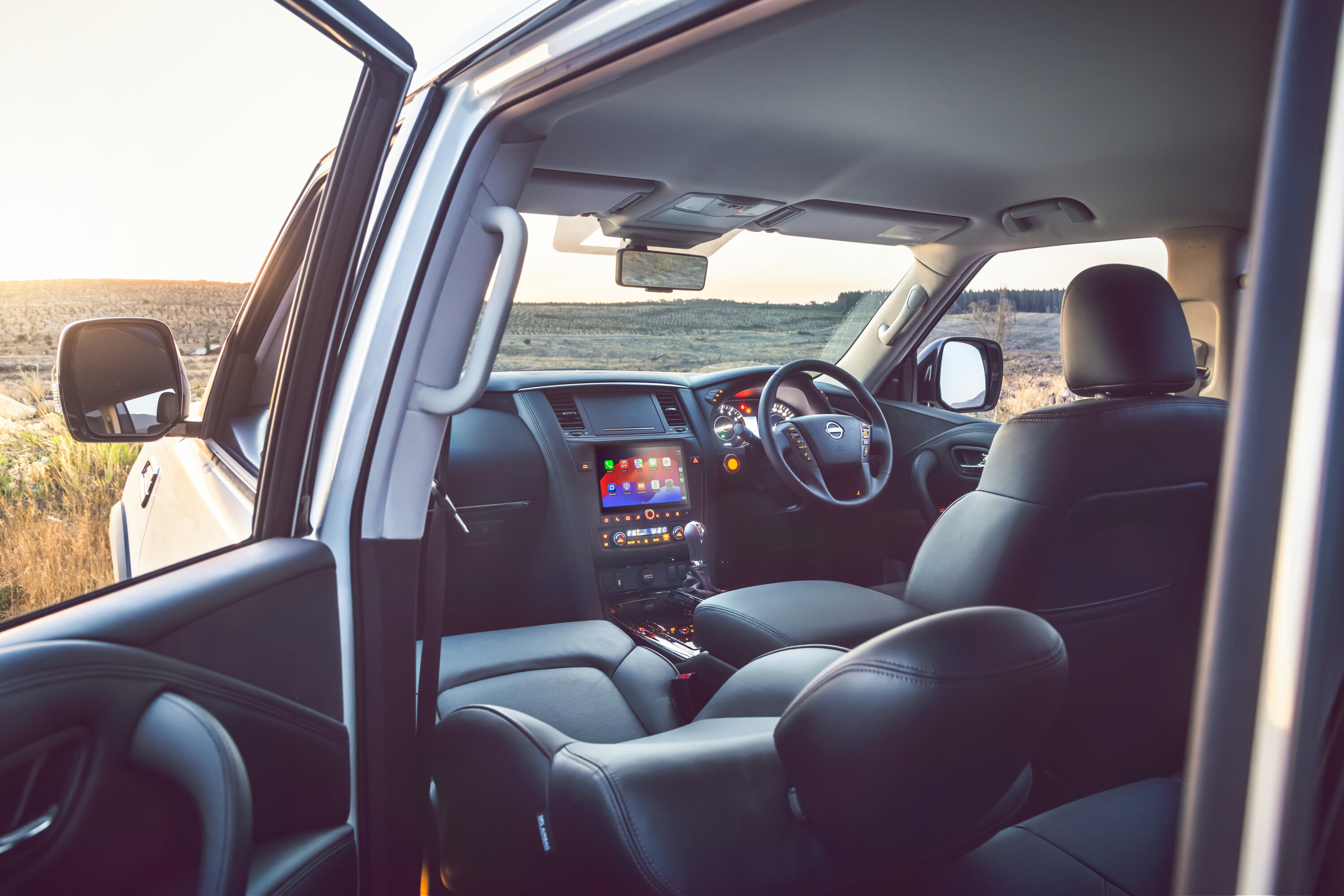
New Patrol vehicles will include a one-month free subscription to the off-road map service.
There are also revamped air-conditioning controls, less woodgrain accents for the Ti and Ti-L, a USB-C charge port, and a 15-watt wireless phone ‘charge pocket’ for all variants.
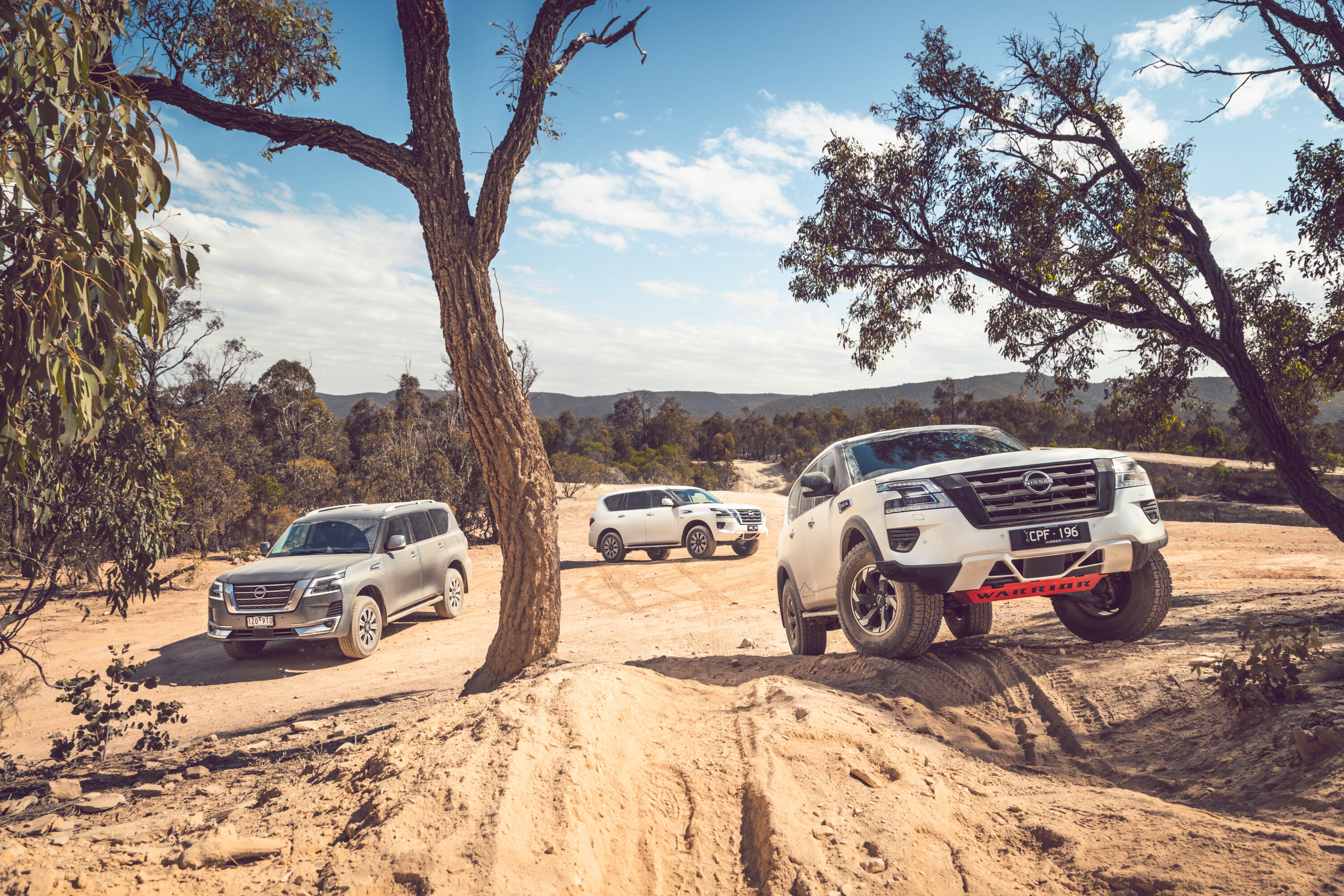
Due to incompatibility with the new infotainment system, the Patrol Ti-L’s 13-speaker Bose audio system has been replaced with a six-speaker Infinity by Harman audio system – a brand familiar to rival brands such as Hyundai and Kia.
Ti and Warrior models continue with an unbranded six-speaker audio system.
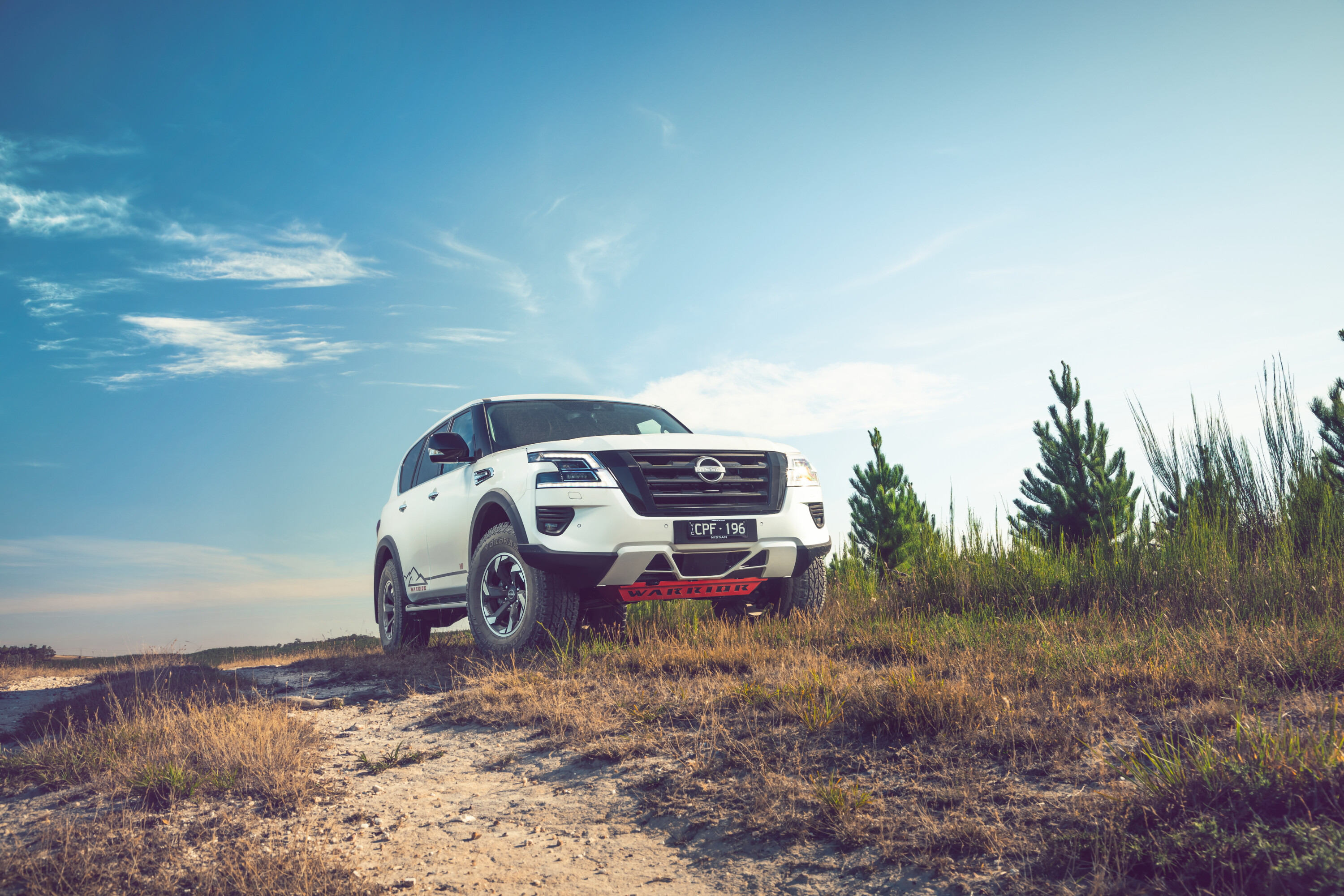
Nissan has added some features to the Patrol Ti and Warrior that were previously exclusive to the top-of-the-range Ti-L, including a digital rear-view mirror and a first-row centre console cool box.
Prices for the updated 2024 Nissan Patrol have increased $3000 across the line-up, which now spans between $87,900 and $104,160 before on-road costs.
All variants continue to be powered by a 298kW/560Nm 5.6-litre naturally-aspirated petrol V8, with an on-demand four-wheel-drive system and a 3.5-tonne braked towing capacity.
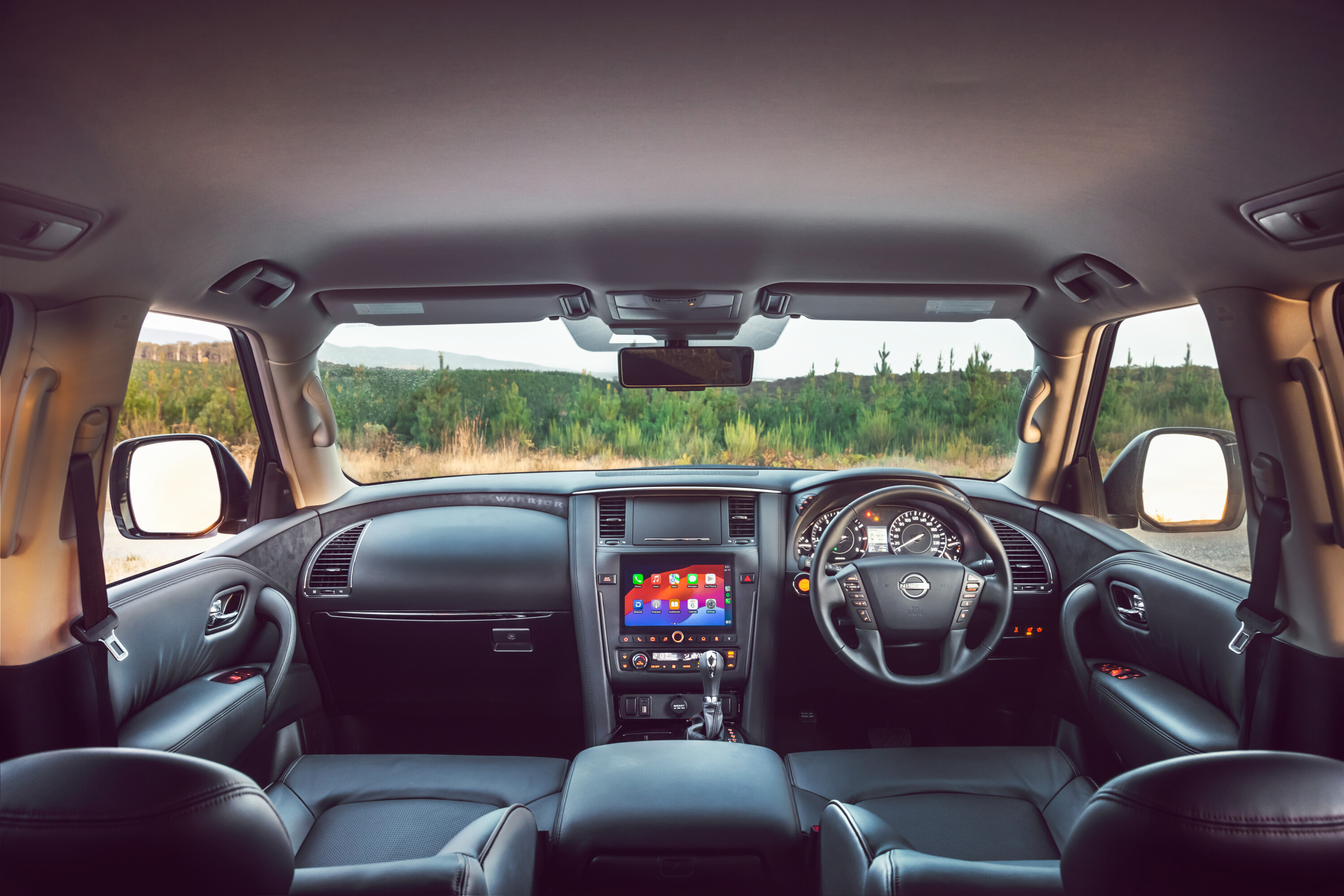
| Model | Pricing | Change |
|---|---|---|
| Patrol Ti | $87,900 | up $3000 |
| Patrol Ti-L | $100,600 | up $3000 |
| Patrol Warrior | $104,160 | up $3000 |
| Prices exclude on-road costs.u00a0 | ||
| 2024 Nissan Patrol Ti features | |
|---|---|
| 10.1-inch touchscreen infotainment system (new) | Six-speaker audio system |
| Wireless Apple CarPlay and Android Auto (new) | Front and rear parking sensors |
| Built-in iGo satellite-navigation (new) | Keyless entry and push-button start |
| Hema 4×4 off-road maps (new) | LED headlights, tail-lights, DRLs, and front fog lamps |
| 15-watt wireless phone charge pocket (new) | Leather-accented upholstery |
| DAB+ digital radio (new) | 10-way power-adjustable driveru2019s seatu00a0 |
| Digital rear-view mirror (new) | Eight-way power-adjustable passenger seat |
| Front-row centre console cool box (new) | Power-folding heated side mirrors |
| USB-A and USB-C charge ports (new) | Tyre pressure monitoring |
| 18-inch alloy wheels | Autonomous emergency braking |
| On-demand four-wheel-drive system | Lane-keep assist |
| Hill descent control | Lane departure warningu00a0 |
| Hydraulic body motion control suspension | Blind-spot monitoring with braking |
| Rear limited shift differential | Rear cross-traffic alert |
| Eight seats | Adaptive cruise control |
| In addition to Ti | |
|---|---|
| Six-speaker Infinity audio system (new, replaces 13-speaker Bose audio system) | Two-position memory function (driveru2019s seat, side mirrors and steering wheel column) |
| Seven seats (down from eight) | Heated and ventilated front seats |
| Unique front bumper | Power tilt and slide sunroof |
| Puddle lamps | Privacy glass |
| Electric tailgate | Roof rails |
| Power-adjustable steering wheel column | |
| In addition to Ti | |
|---|---|
| 50-millimetre lift (+29mm suspension, +21mm wheel and tyre package) | Bespoke towbar with two recovery points |
| 40-millimetre wider track | Bi-modal side exit exhaust |
| Premcar-tuned suspension | Black exterior trim |
| 120-kilogram gross vehicle mass upgrade | Warrior exterior decals and badging |
| Unique 18-inch alloy wheels | High-gloss black trim (replaces woodgrain) |
| Yokohama G015 295/70 all-terrain tyres | Alcantara door and dash inlay with Warrior badging |
| Warrior-branded front bumper assembly and bash plate | |
These photos of the upcoming Ford Ranger ‘PHEV’ in a Bunnings carpark were posted to the Next Gen Ranger Owners Australia Facebook group.
With prices and model specifications yet to be confirmed, the PHEV Ranger in the photos resembles a Wildtrak-like trim specification, with blacked-out wheels – largely matching the official images published in September 2023.
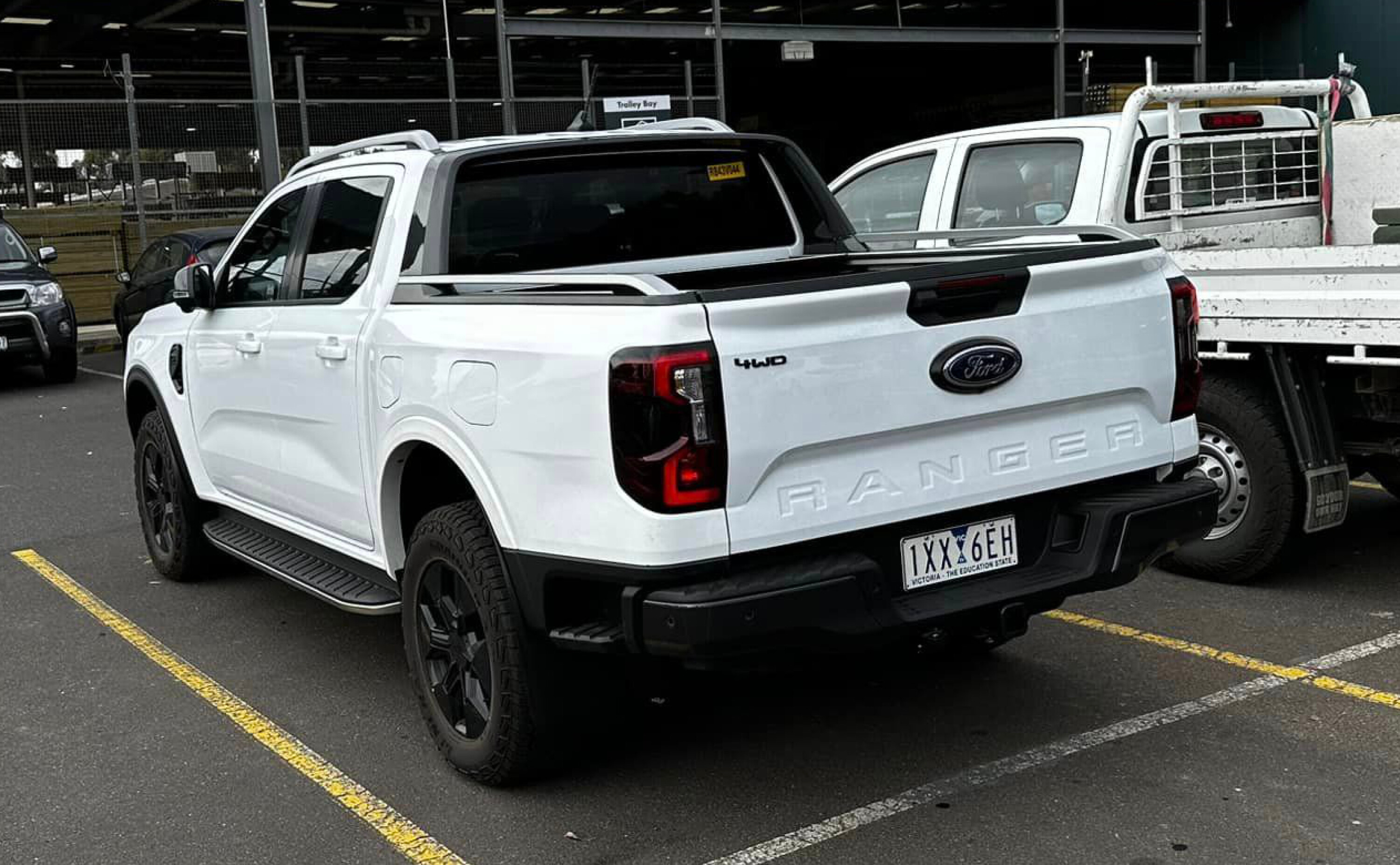
Catherine King, Minister for Infrastructure, Transport, Regional Development and Local Government said in February 2024: “I’ve also had the opportunity to be driven on the [Ford] test track down near Geelong of the new Ford Ranger… It’s a hybrid vehicle, and what that allows you to do is for those smaller jobs you’re going in between, so if you’re a tradie, in between those you use electric if you’re not going very far.”
Ms King’s department, amongst others, has been involved in devising the New Vehicle Efficiency Standard for 2025.
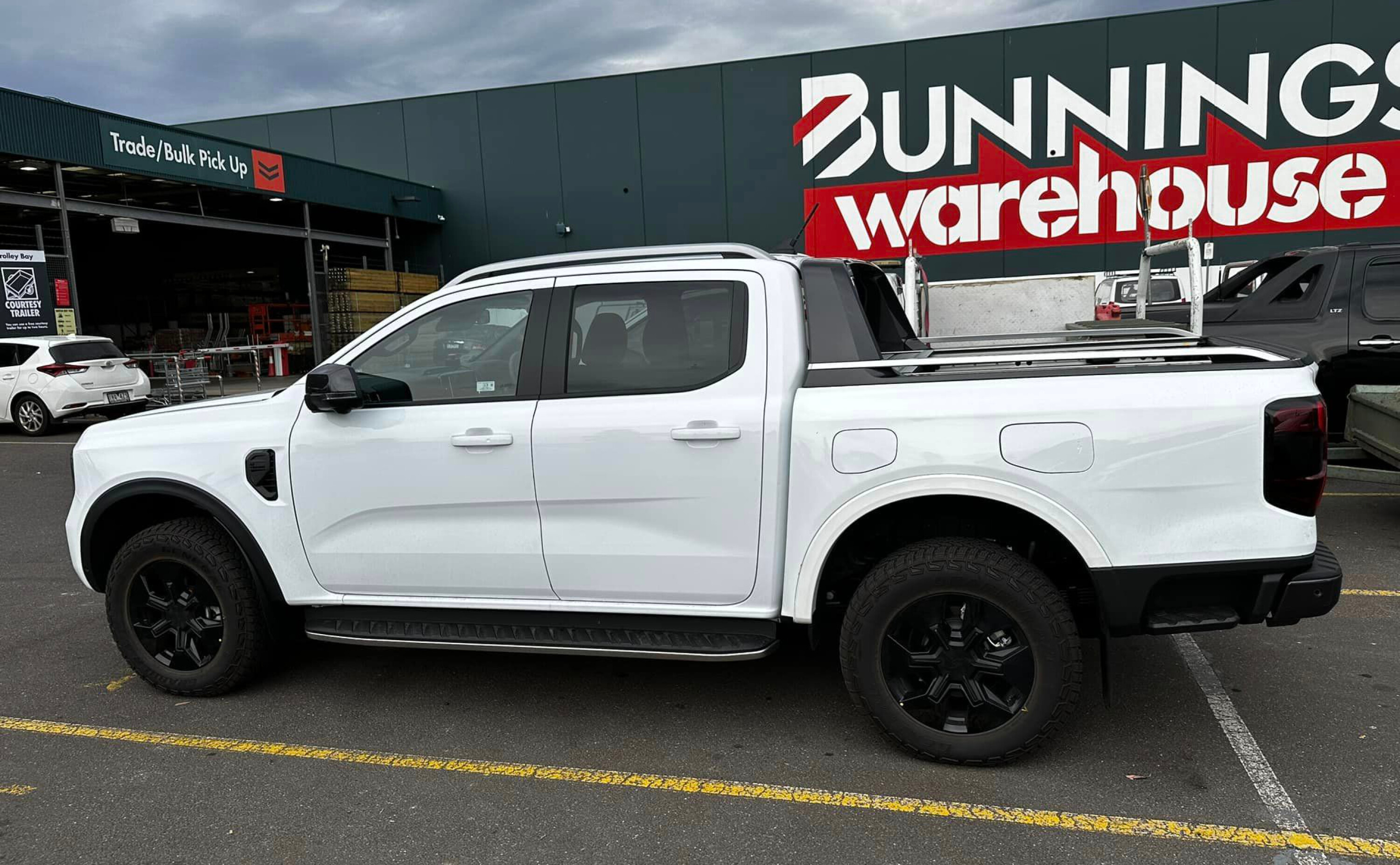
Specific power and torque figures still to be detailed, but there are some known figures we can work with. The 2.3-litre Ecoboost four-cylinder petrol, for example, makes 222kW/452Nm in the Volkswagen Amarok which was co-developed with Ranger.
A driving range of 45km in full-electric mode is expected, and the Ranger’s 3500kg towing capacity is retained for the PHEV models.
The Ranger PHEV also features “Pro Power Onboard”, allowing it to power tools and act as a driveable generator, with three dedicated 240V / 10A power outlets fitted (two in the tray, one in the cabin).
The Ranger PHEV will be manufactured in South Africa, meaning that some models may incur a 5 percent import tariff.
Pricing and variants that will offer PHEV technology are yet to be announced by Ford.
Did Ram turbo the HEMI? Not the case, my V8-loving friends. We’ll get into a host of other upgrades, but the big news is that 2025 marks the end of a multi-decade run for the HEMI-powered 1500. The question is, have they buggered things up?
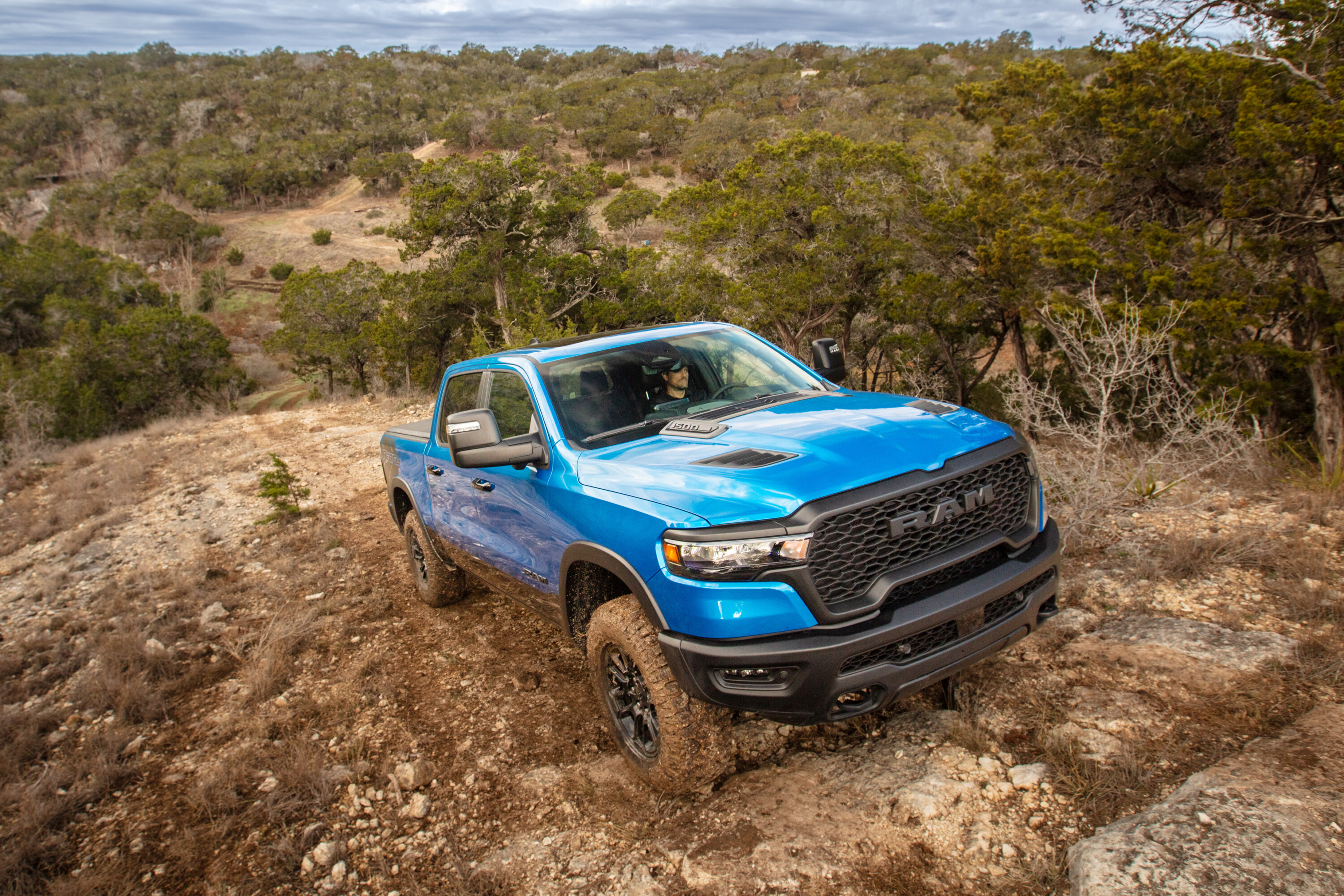
Scoff if we will, but this pint-sized mill out-produces the 5.7 by a stretch, churning out 313kW and 638Nm versus the HEMI’s 295kW/558Nm respectively. But curious minds want to know how they did it.
Tapping the latest in technology and engineering practices, they started with a forged crank and connecting rods, which are mated to cast 10.4:1 compression cast-aluminium pistons wrapped with DLC (diamond-like carbon) coated rings. Main bearing caps are cross-bolted (vertically and laterally) to a deep-skirt cast aluminium block, and cylinders are plasma spray-bored to minimise friction.
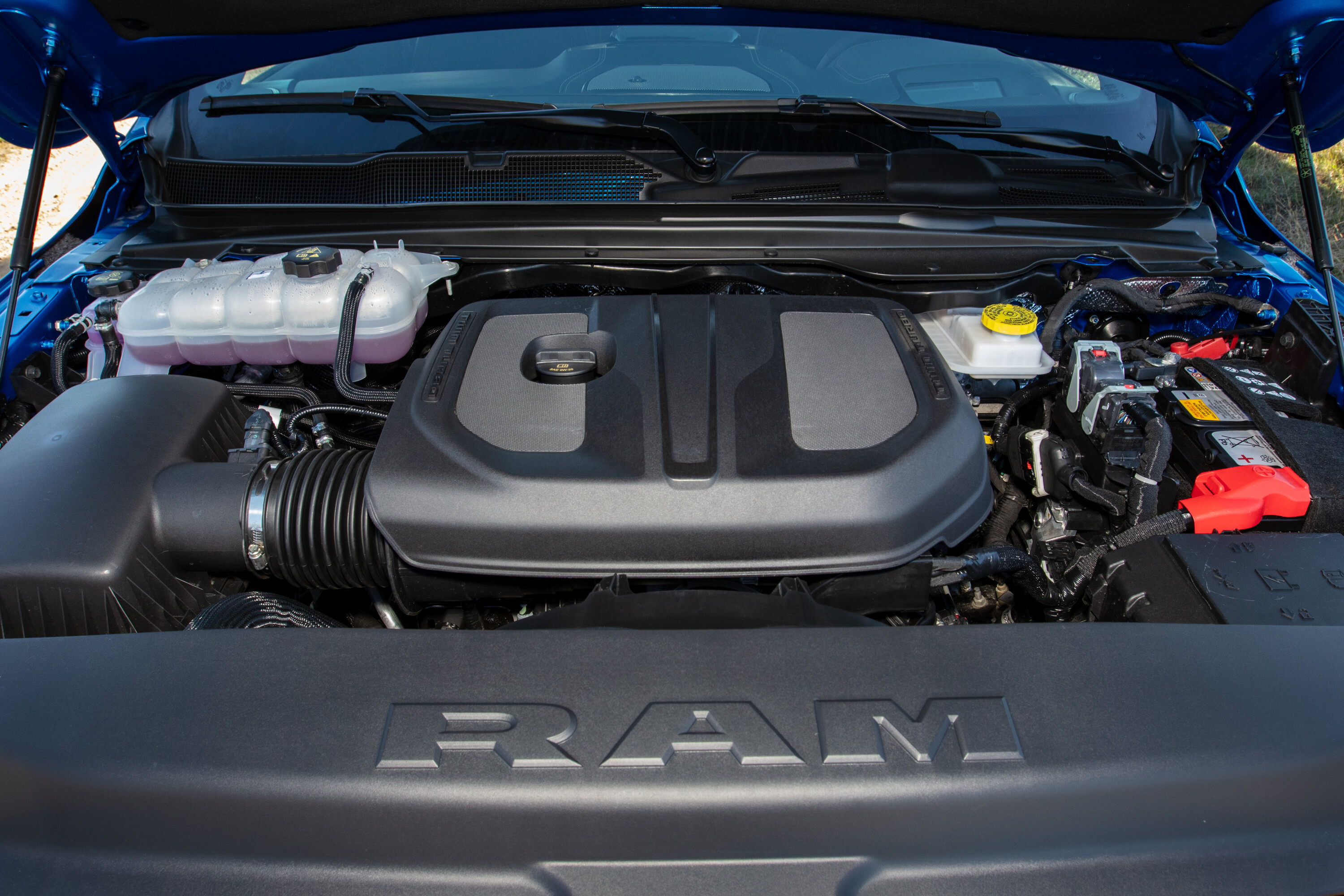
An aluminium head supports hydroformed tubular cams that independently manage four valves per cylinder. Aspiration is via twin turbos and a common rail direct-injection system primed by a high-pressure pump that generates up to 350 bar. Output numbers are impressive, but more impressive is its smooth and balanced run-up from idle to the 5800 rpm redline.
For those who like to push the adrenaline envelope, the optional HO variant (Longhorn, Limited, and Tungsten models only) generates a G-inducing 403kW and 706Nm. Both powerplants are backed by the venerable TorqueFlite 850RE eight-speed automatic and Borg-Warner transfer case, which offers on-demand or full-time four-wheel drive depending on model.
An electronic locker is standard on Rebel and available on all models, and all I-6 versions have 3.92:1 gearing. The Pentastar 3.6-litre V6 eTorque mild hybrid is the baseline engine, and while I’m a fan of the Pentastar, if I’m buying a full-size truck I’d opt for the performance and grunt of the more powerful mill.
| Pentastar 3.6-litre eTorque V6u00a0 | Hurricane twin-turbo 3.0-litre I-6 | Hurricane HO | |
|---|---|---|---|
| Power | 227kW | 313kW | 403kW |
| Torque | 365Nm | 638Nm | 706Nm |
| Payload | 1043kg | 866kg | 621kg |
| Towing | 3675kg | 5245kgu00a0 | 4870kg |
The Tradesman is a work truck and appointed accordingly, but the Tungsten and Limited up the ante when it comes to luxury and technology. Premium models include a 14.5-inch high-resolution Uconnect 5 command centre with multi-screen capability. A new 10.25-inch passenger-side LCD allows the co-pilot to manage navigation, entertainment, and monitor exterior cameras.
The instrument cluster has also been enlarged to 12.3-inches, and steering wheel thumb controls allow you to toggle through a dozen screen options. All are interconnected via an advanced Atlantis electrical architecture, which boasts higher operating speeds and enhanced memory capacity.
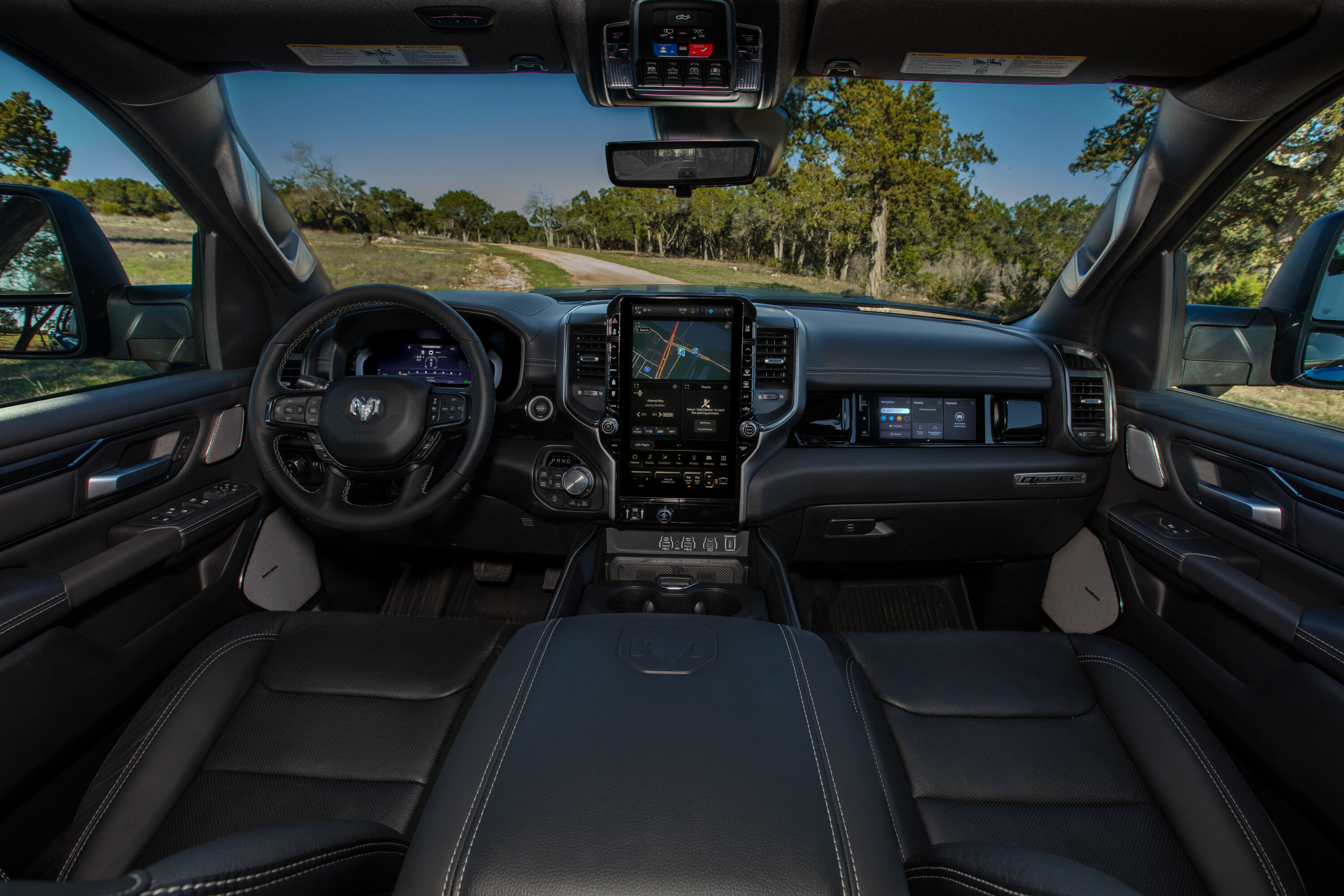
At the front of the console is a dual-station wireless phone charger, and a heads-up display on the windscreen offers five data zones. If you want to rupture an eardrum, crank up the bazillion-Watt (1228), 23-speaker Klipsch audio system. Add 24-position adjustable seats, back massager, power lumbar support, hand-stitched leather, and multi-zone climate control, and you’re all set for a trailside nap.
Although we take cutting-edge safety features for granted, Ram is introducing more advanced autonomous driving systems: Active Driving Assist and Hands-free Driving Assist (Level 2). On select sections of highway it utilises radar, 360-degree cameras, and lane-centering to literally drive itself. But if you reach back to swat your rugrats, the annoying drowsy driver alarm will bring your attention back to the road. Fun fact. I trust a computer to land a 747 at night in low-viz conditions, but taking control of my vehicle on a highway filled with knuckleheads? No thanks. Besides, I actually like the ‘driving’ part of driving.
The 1.8kW inverter makes charging devices or running power tools a breeze. I also like the fold-back rear seat, which provides flat, door-to-door storage. Optional Ram Boxes on the bed rails are great for stashing tools or fishing gear, but I’d wager they could also hold a case of coldies. Lastly is the multi-function tailgate. It opens like a standard gate or ambulance style, features power open and close, and has key fob remote operation.
In my opinion, its happy place is Baja-style high-speed desert roads. Multiple drive modes, a nimble suspension, and rear e-locker remain intact, and the camera system allows you to view oncoming obstacles when they disappear under the end of the bonnet. In short, it retains the off-road capability we’ve come to appreciate from the Rebel.
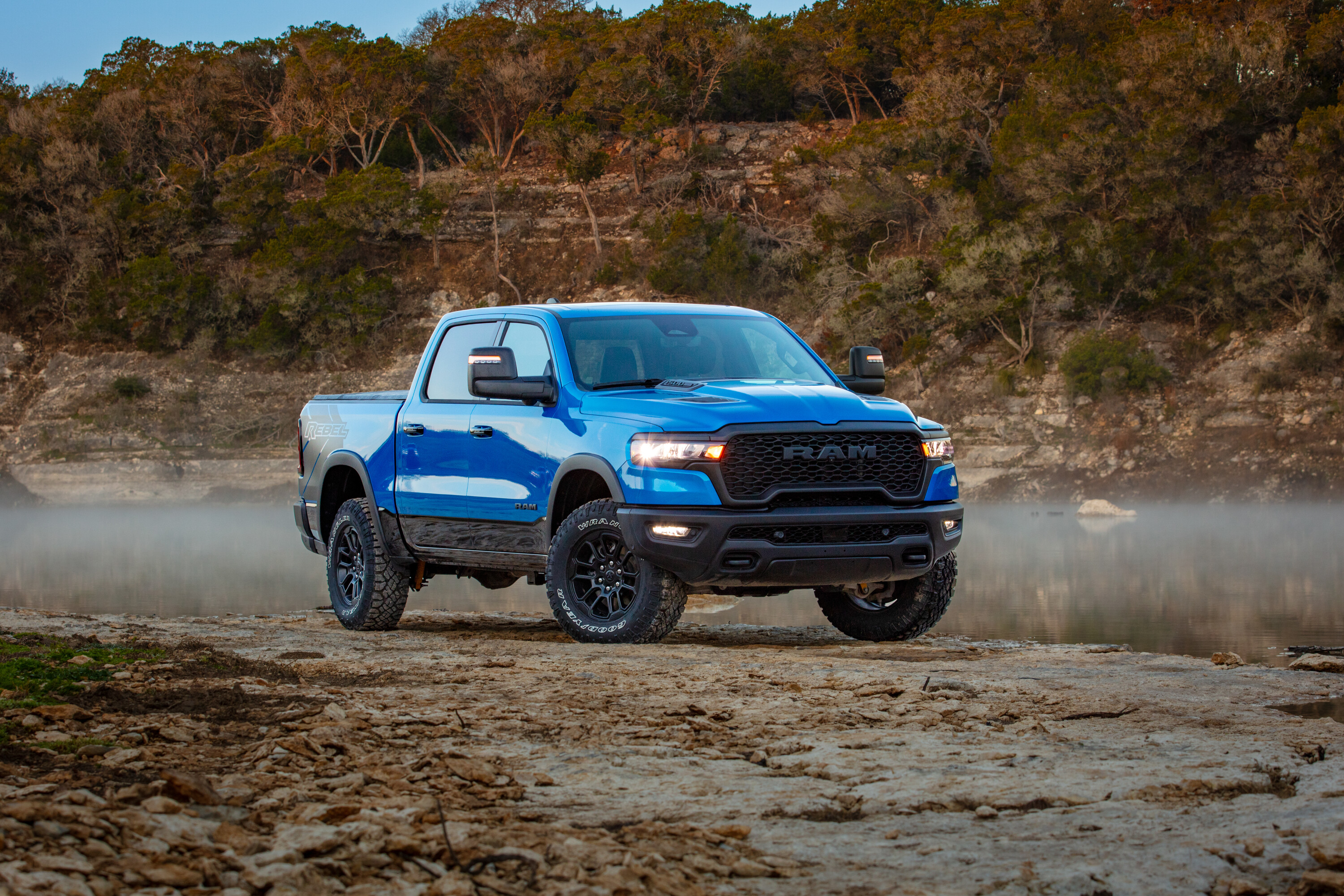
The most notable change from the HEMI is the Hurricane’s quieter notes and smoother transition through the power curve. Interestingly, with the sunset of the TRX and its fire-breathing 523kW Hellcat mill, the Rebel steps in as the brand’s primary dirt offering. But rumour has it that Ram will be releasing the RHO in 2025 (Rebel High Output?), which is said to be incorporating the TRX’s suspension.
The Hurricane 3.0 is no slouch on the tarmac, pulling off the line with purpose when you squeeze the skinny pedal. On twisting two-lane roads, the 1500 displayed predictable tracking and reasonable body roll during aggressive constant-radius turns, an example of well-balanced front and rear damping.
I’d rate yaw damping at 0.5 – how quickly the vehicle returns to a neutral position during emergency lane change scenarios – settling after one full cycle. The Tungsten, with its low-profile tyres and stance, excelled over the Rebel in this genre but both are simply fun to drive. Turbo lag is almost a thing of the past, and the Hurricane will spin the speedo well past the legal limit at a nearly linear rate.
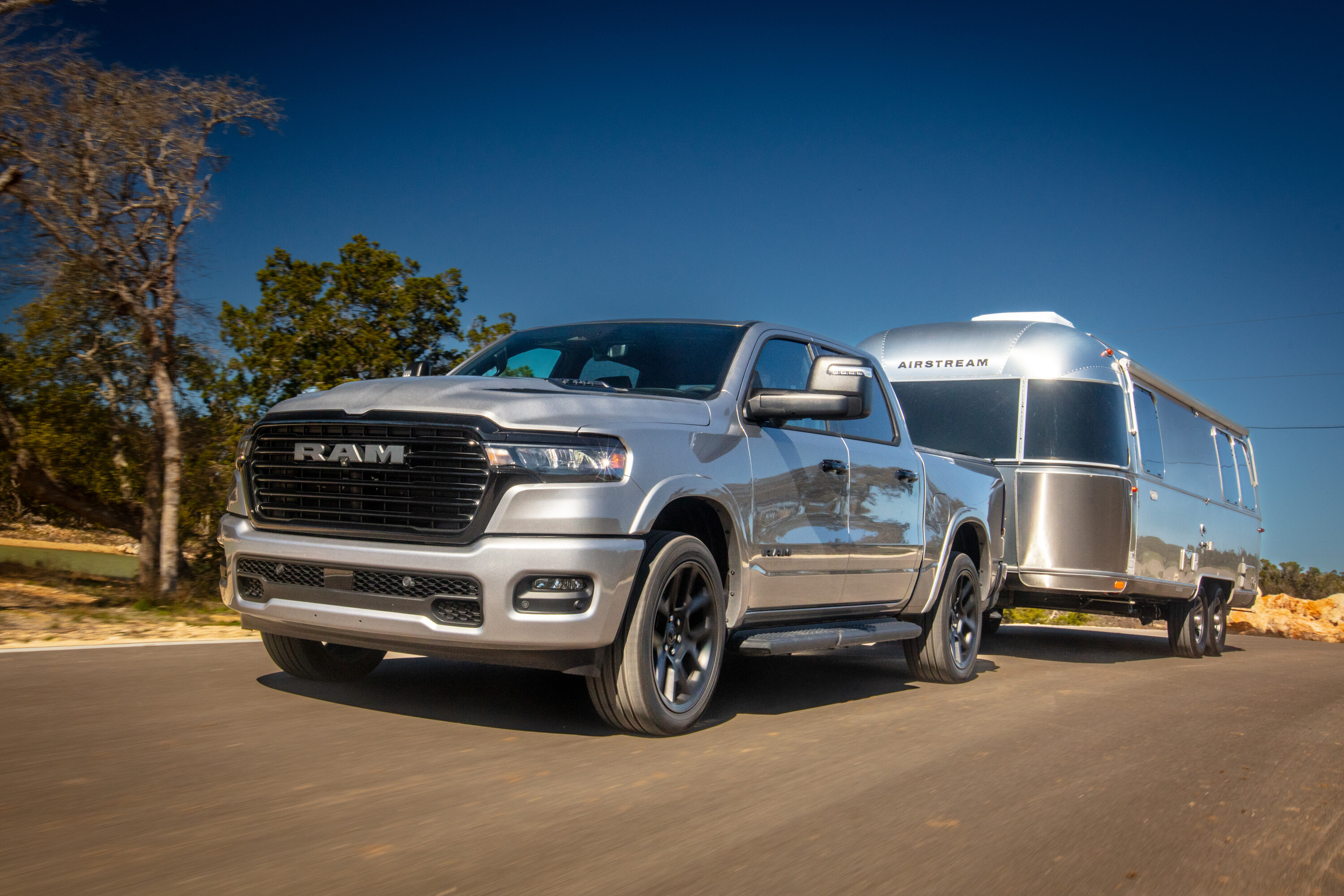
We hooked up a 2800kg Airstream trailer to a Limited for a drive through a mix of country roads and 100km/h highway. Towing capacities range from 3675kg Pentastar to 5245kg with the standard 3.0 Hurricane (the HO drops to 4870kg). My personal tow rig is a ’99 Dodge Ram 2500 with a Cummins 5.9-litre. I love that truck and am chagrined to say the Hurricane-powered 1500 would leave my old 24-valve in the rearview mirror.
Whether braking hard, carving turns or accelerating, I could definitely feel the load, but never was the tail wagging the dog. Although I don’t have issues backing up or navigating tight corners (I spent a decade driving a truck for UPS), the Auto Hitch Assist, which guides the receiver to the ball, is super handy. And, when you activate a turn signal the rear side camera view is displayed on the centre LCD. A 100-litre fuel cell is standard, but the optional 125-litre unit will extend your range by 200km (or so) on the highway – EPA fuel economy estimates are forthcoming.
Although they (and their low-profile tyres) reduce road noise and rolling resistance, enhance fuel economy, and are great in most conditions, when in soft mud, snow or sand there is no substitute for airing down and increasing the tyre’s footprint. On the flipside, big-wheel packages accommodate massive 380mm twin-piston disc brakes, one of the many factors that contribute to the 1500’s solid road manners and towing stability.
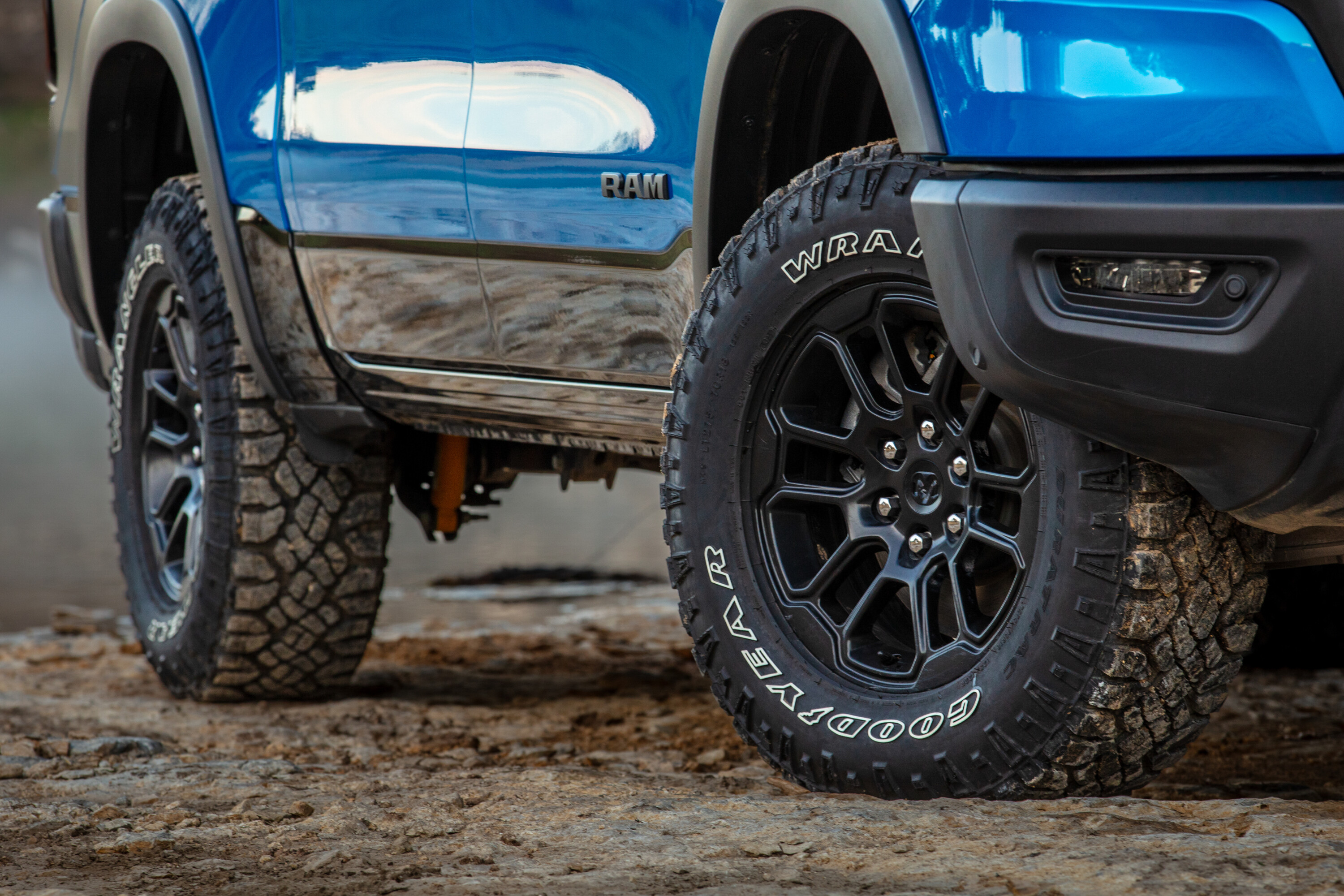
Another beef is the lack of a console shifter… and manual cogs. Call me old school, but a truck with the sportiness of the Rebel deserves a proper shifter. A few other grievances include the HO requiring 91-octane fuel, and there’s no replacing the guttural tone of a good ol’ HEMI (RIP).
In addition to the RHO, 2025 will reveal the first fully electric 1500, the REV, along with the extended-range Ramcharger, in which a Pentastar 3.6-litre gas mill will generate juice to power a pair of electric drive motors.
Interestingly, a form of this technology has been around for more than a century, but predominantly used by railroads. Maybe I’ll borrow one for my next trek to the Arctic, but I have no doubt I’m going to miss the sweet rumble of a HEMI V8 under the hood.
We were west of the main north-south track through the Karlamilyi National Park, formerly known as Rudall River NP, and while the main track has challenges of its own it is generally much better than the side tracks leading to the many waterholes and points of interest that dot this huge park.
Surrounded by dry but vegetated desert country, typical of inland Australia, the Rudall River rises in the very west of the park where Three Sisters Hills acts as a natural barrier to the Little Sandy Desert.
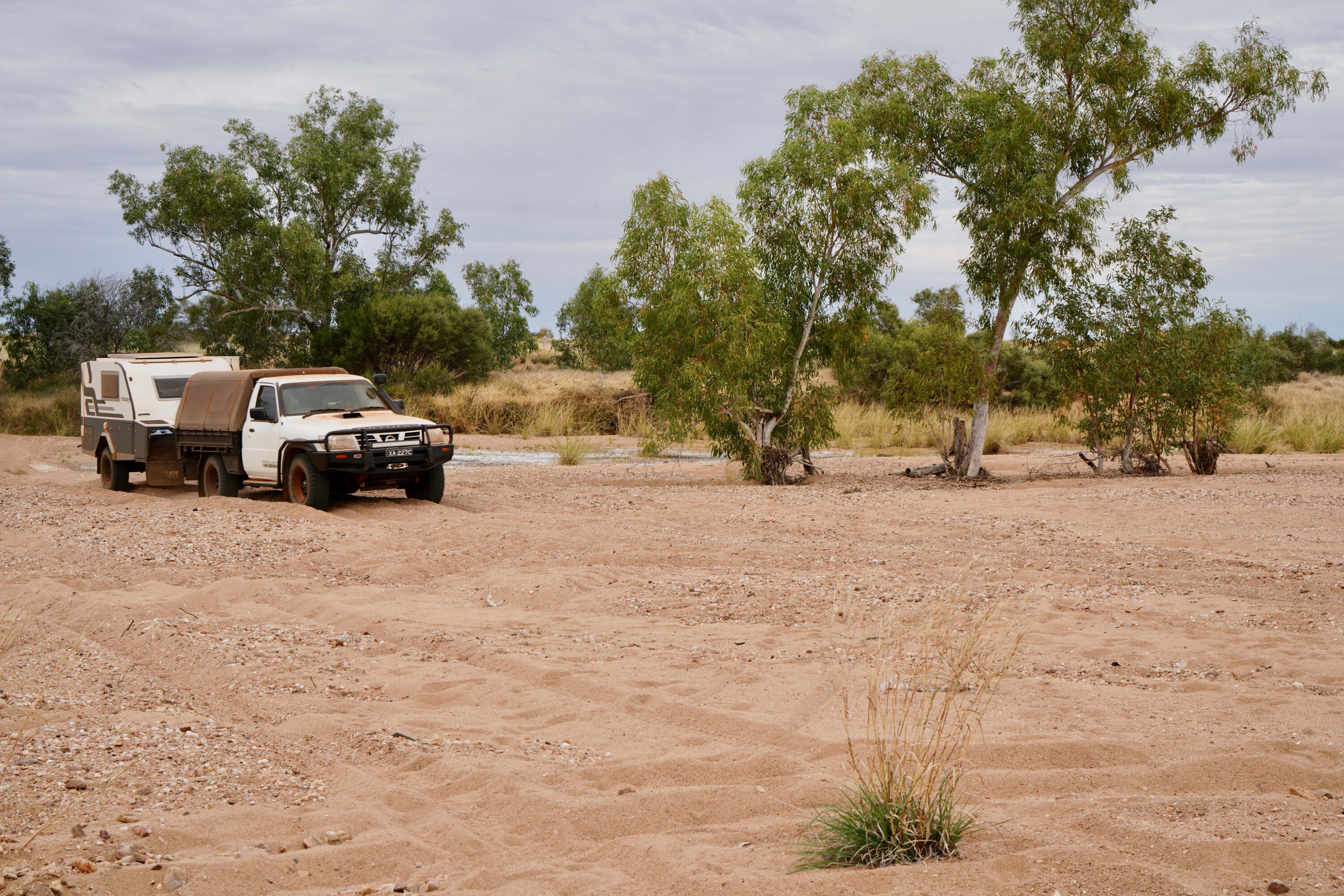
The river doesn’t always make it to Lake Dora, its flow dictated by the annual Wet season rains
Sweeping in a great arc, once it leaves the rocky hills and sheer red bluffs of the Fingoon Range further east, it wanders north-east amongst the dunes of the Great Sandy Desert to finally ooze, after 240km or so of torturous meanderings, into the shallow ephemeral Lake Dora.
The river doesn’t always make it to Lake Dora, its flow dictated by the annual Wet season rains which can hardly be called reliable.
Even so, the river has a number of permanent and semi-permanent waterholes along its course and these make the area an oasis for bird and animal life, as well as for the early inhabitants of the region and for today’s adventurous travellers.
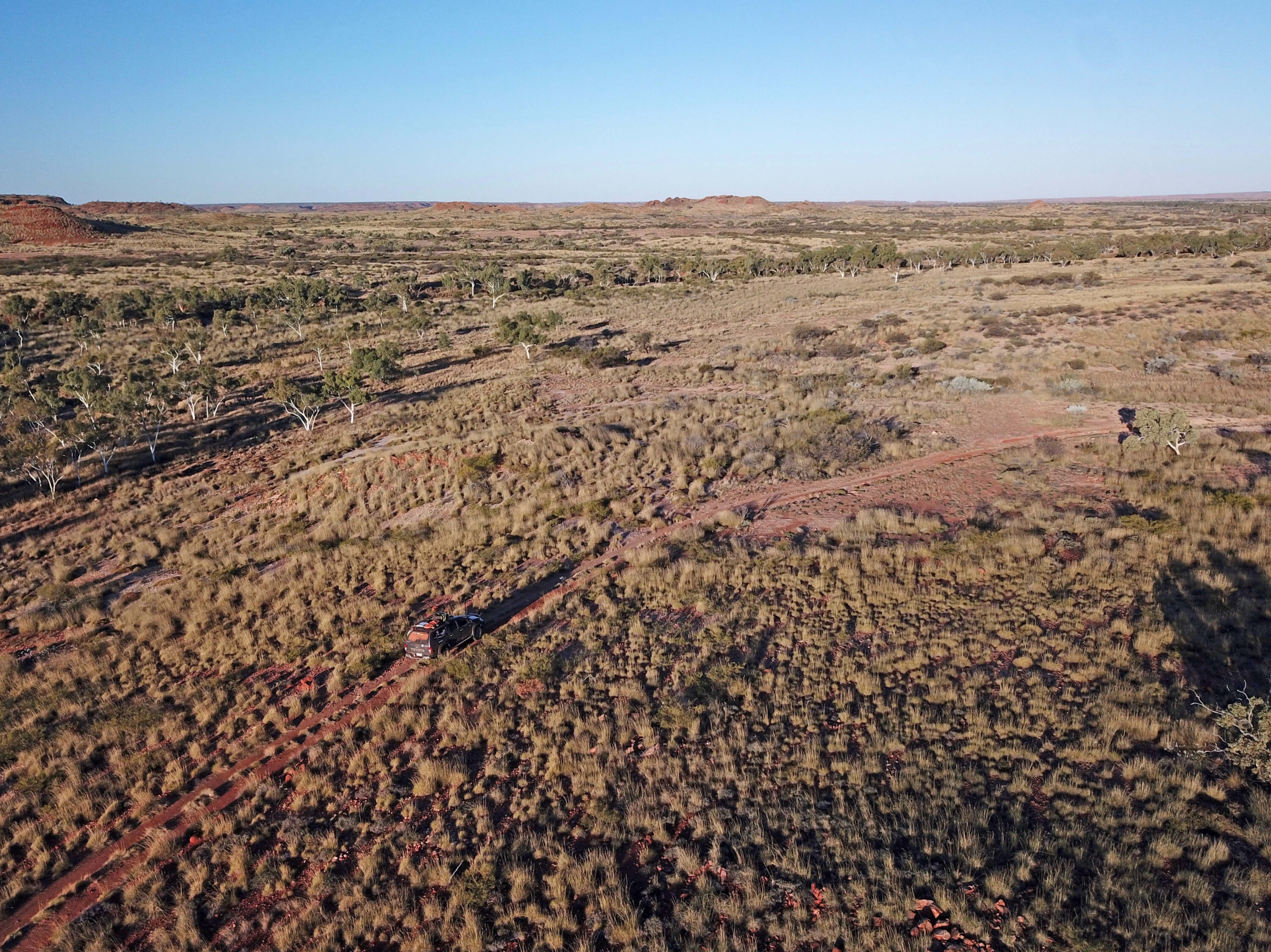
The track then swung north-west paralleling the creek until we descended the low hill to the much more creatively named Tjingkulatjatjarra Pool, a native name that remains unpronounceable to me.
The small camping area at the pool’s northern end is a cracker, ideal for one or two camps, but sadly it was already occupied when we arrived, so after a bit of a yarn to the occupants and a few photos we turned around and headed back to our camp situated on the low stoney rise just up from the main crossing of the Karlamilyi River.
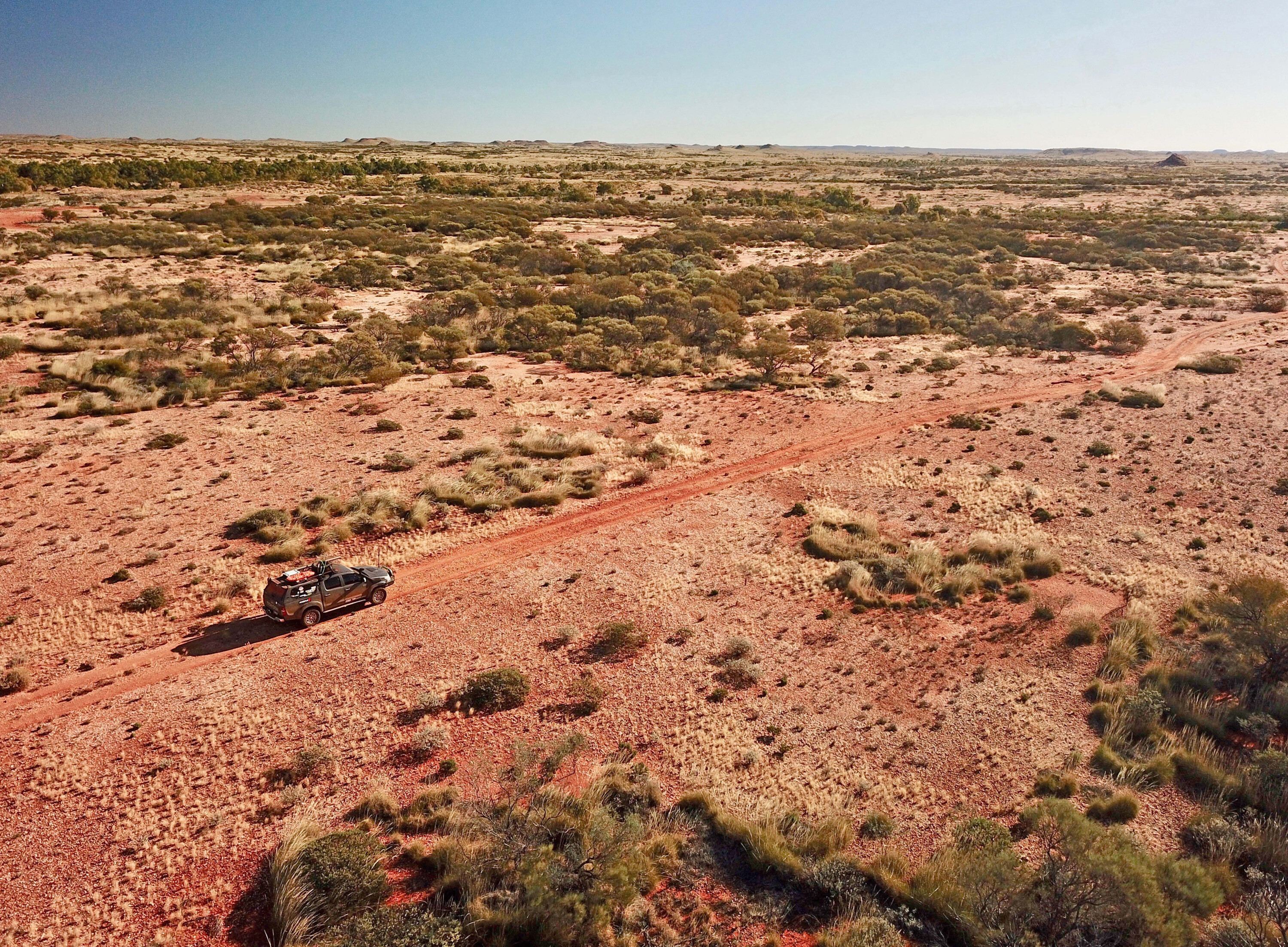
There are two communities in the park – Parnngurr, previously known as Cotton Creek because of the name of the nearby stream and located near the southern boundary of the reserve, and Punmu, in the north-east of the park on the edge of Lake Dora. Both communities have limited shop and fuel facilities.
The river was named by the European explorer Frank Hann in 1897 after the surveyor William F. Rudall, whom Hann met in the area while he was prospecting, and Rudall was searching for men missing from the Calvert Expedition.
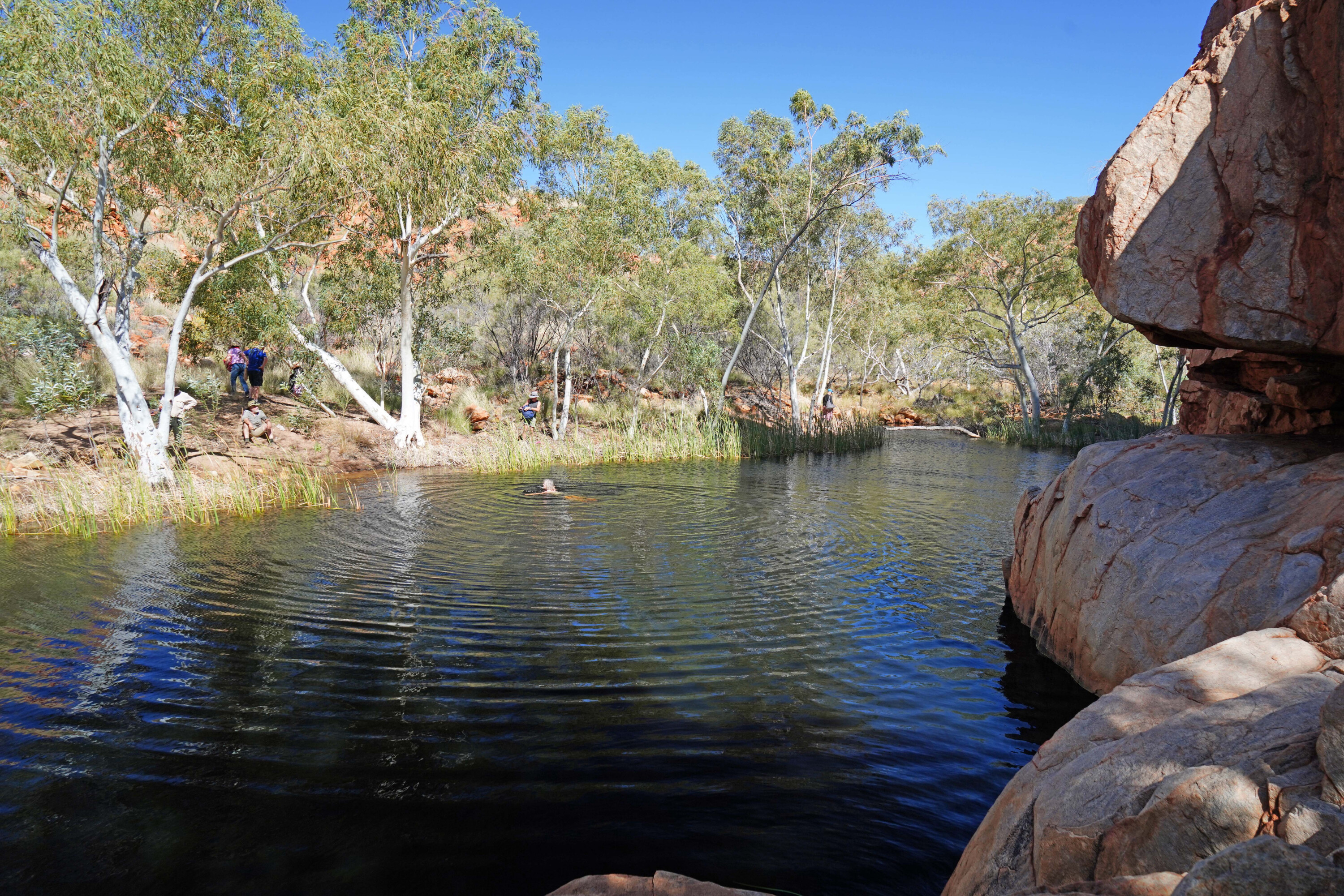
They probably weren’t the first Europeans in the area though as a gold strike at Nullagine 10 years earlier had brought many wandering gold seekers into the area just to the west of what was to become Karlamilyi NP.
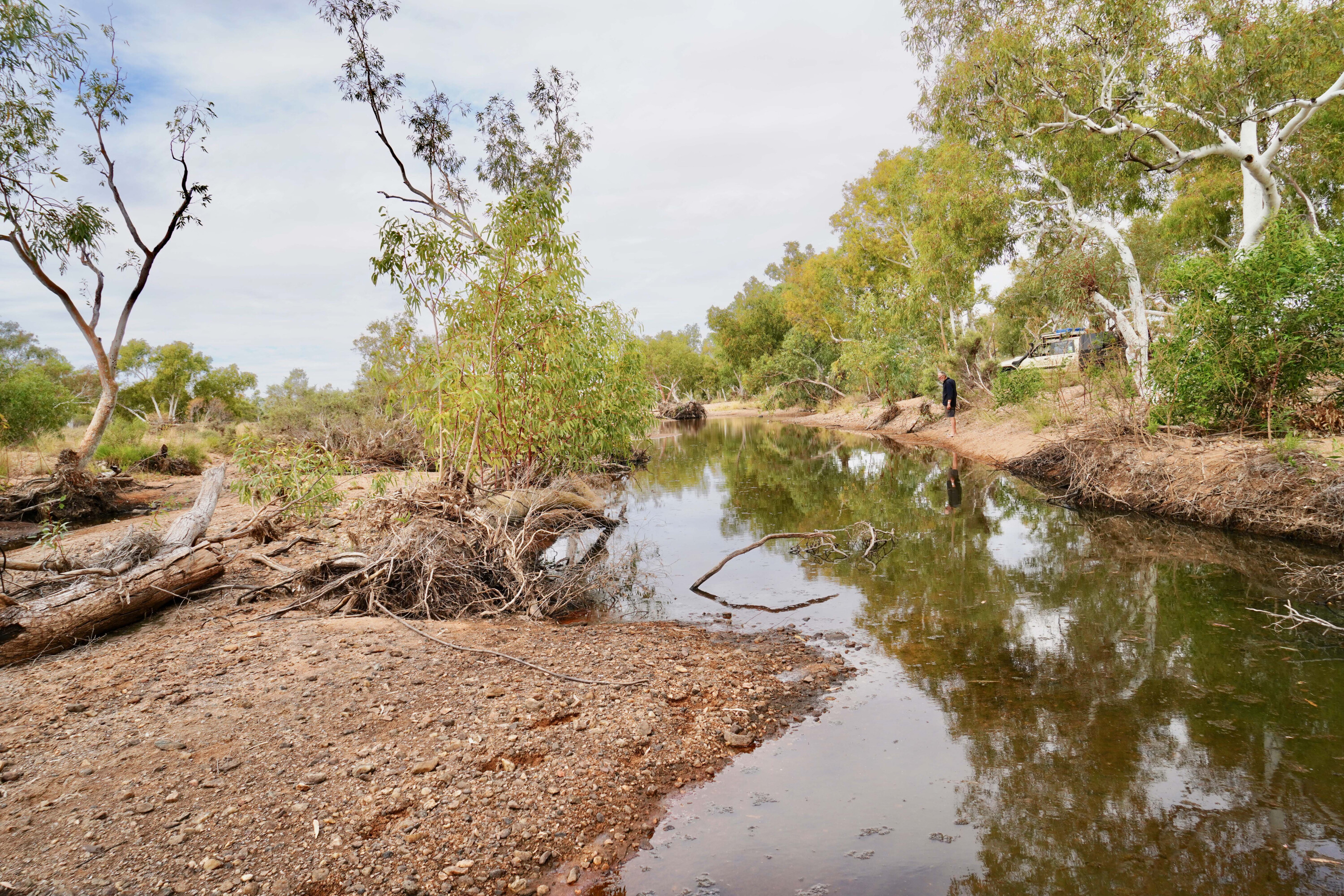
His report concluded, “… I may say I am of the opinion that gold does not exist in the locality.”
In the 1920s Talbot was out again in the desert country, this time looking for oil for the Freney Kimberley Oil Company. By the 1950s other companies had begun searching for oil and gas deposits, some of which included the area now covered by the national park.
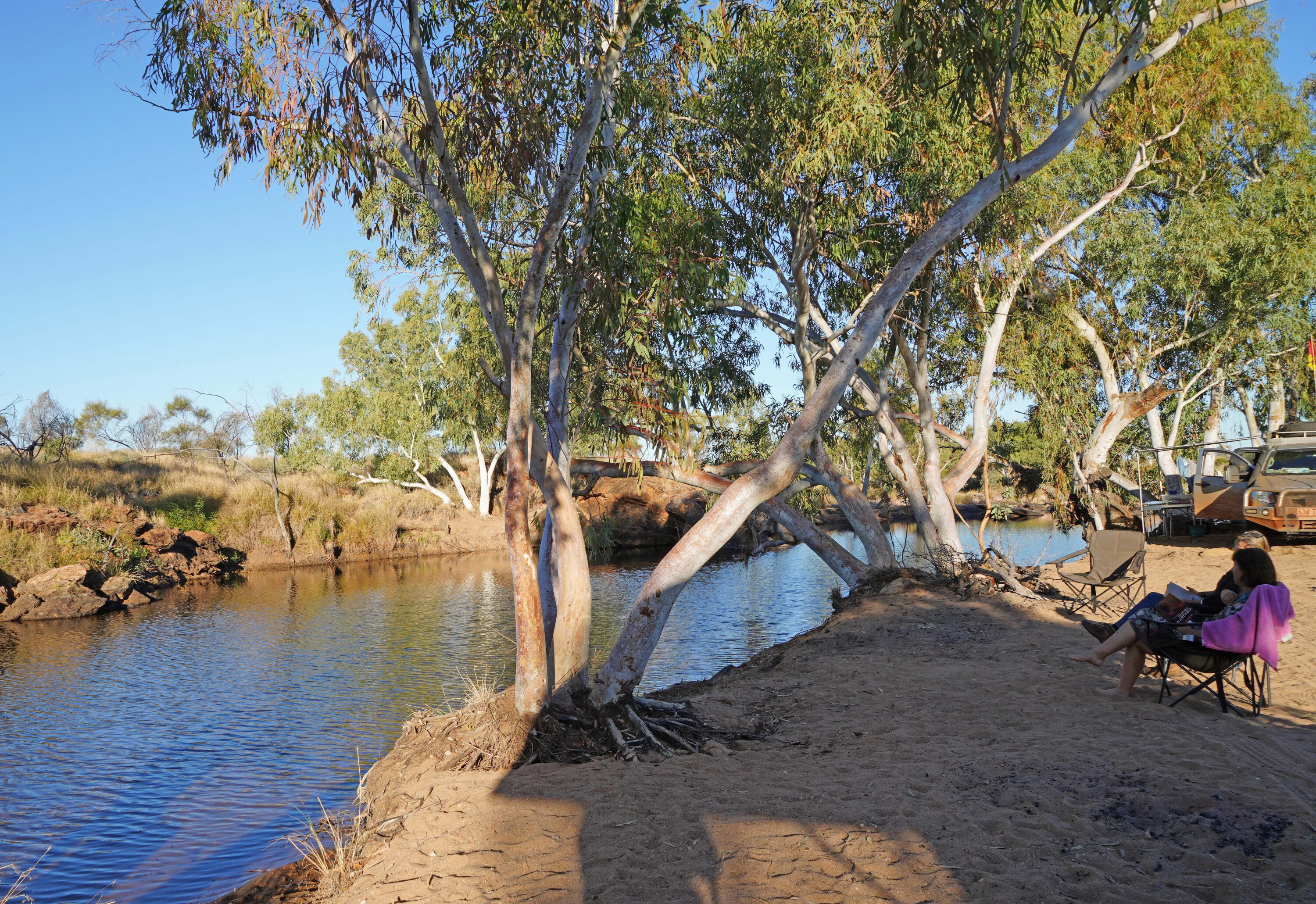
Just a couple of years later WAPET (West Australian Petroleum Pty. Ltd.) constructed the Wapet Road (or Kitson Track) between the coast and the Canning Stock Route. These routes pass to the south and north of the park respectively and offer the easiest access to it, with the main north-south track through the park linking the two.
This improved access led to a surge in mineral exploration and in 1972 Newmont discovered the mammoth gold and copper deposit at Telfer. Other discoveries followed.
The national park was initially proclaimed in 1978 but its northern boundary was changed when uranium was discovered in the 1980s, but no mining of that deposit has yet taken place. The park’s name was changed to Karlamilyi NP in 2008 and it remains the biggest national park in Western Australia.
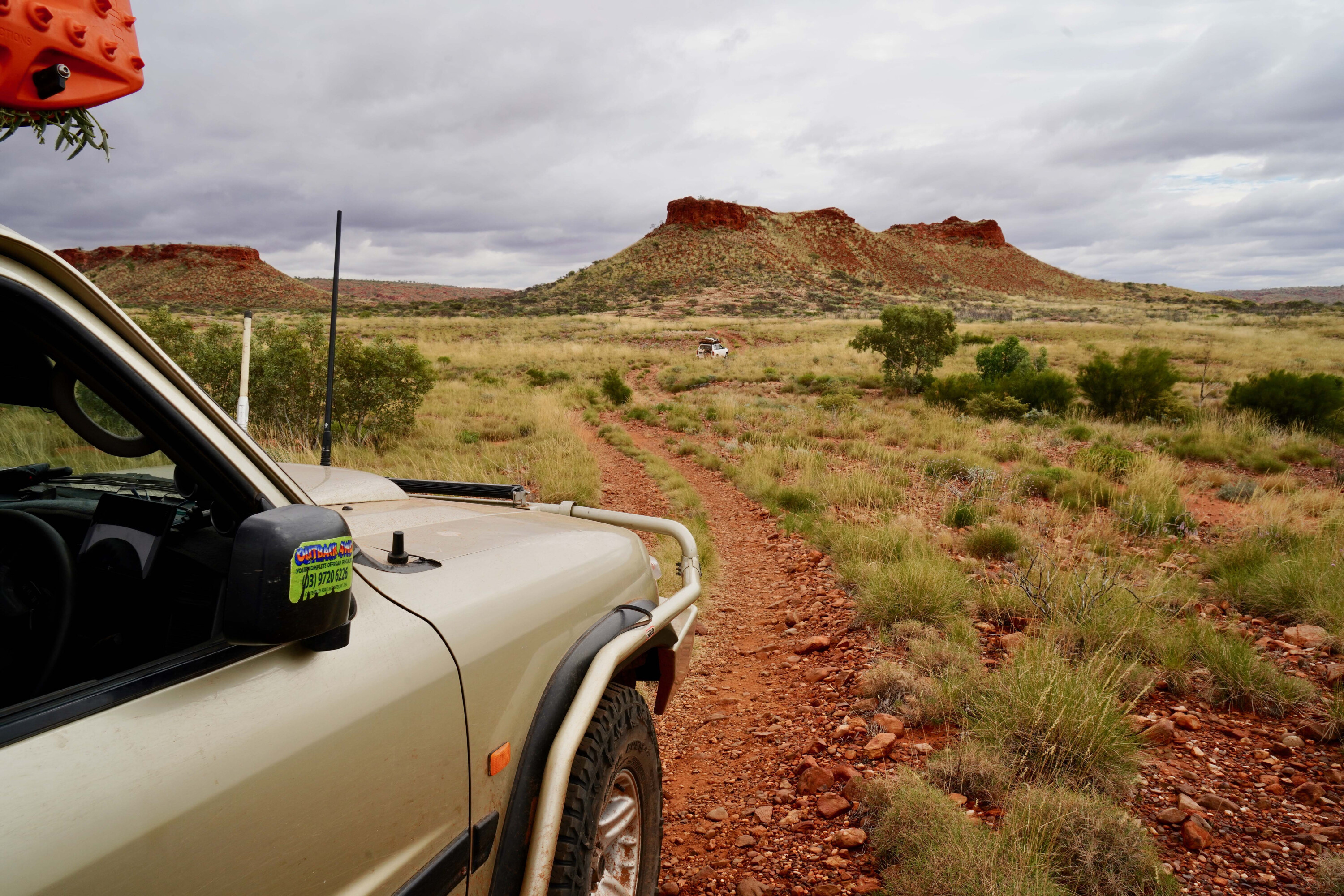
It’s a tidy, friendly community and well worth visiting. From there we headed west and turned north on the main access road to the park, stopping for the night at the southern boundary amongst a stand of delightful white gums. This camp used to be even better when the bore with its hand pump delivered cool clear water, and it is a shame that it has now fallen into disuse.
From there our party, all towing campers, wandered northwards and crossed the wide sandy bed of the Rudall River without any hassle. Knowing that the track west was a bit slow with vehicles towing campers we set up camp on the low hill just north of the crossing and while we went westward, others in our group explored eastward to Kalkan Kalkan Soak.
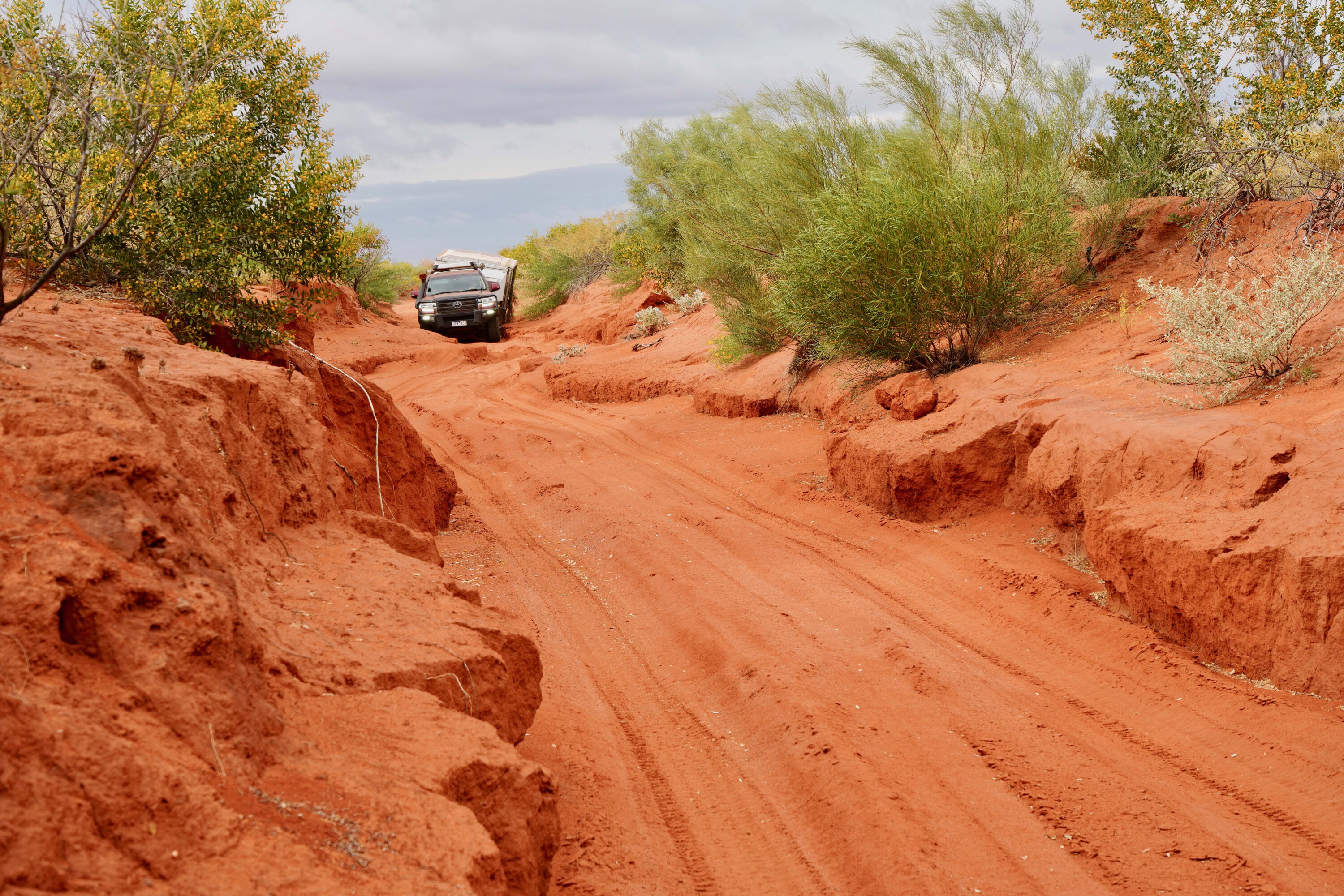
On both recent trips we spent some time repairing broken equipment; testimony of the rough tracks and challenges you have when coming to Karlamilyi from the east. After a couple of nights at our hill camp, we wandered north again along the main track, which at one point became the bed of a sheer-sided sandy creek bed, which meant engaging low range for a short while.
Our second camp was on a small claypan opposite the line of bluffs about 2km south of the track to Desert Queens Baths (DQB). It’s a spectacular spot with the red cliffs illuminated by the setting sun. Then, as the light fades and the stars begin to make their presence felt, the cliffs stand out in a dark, etched silhouette as the moon rises in the east.
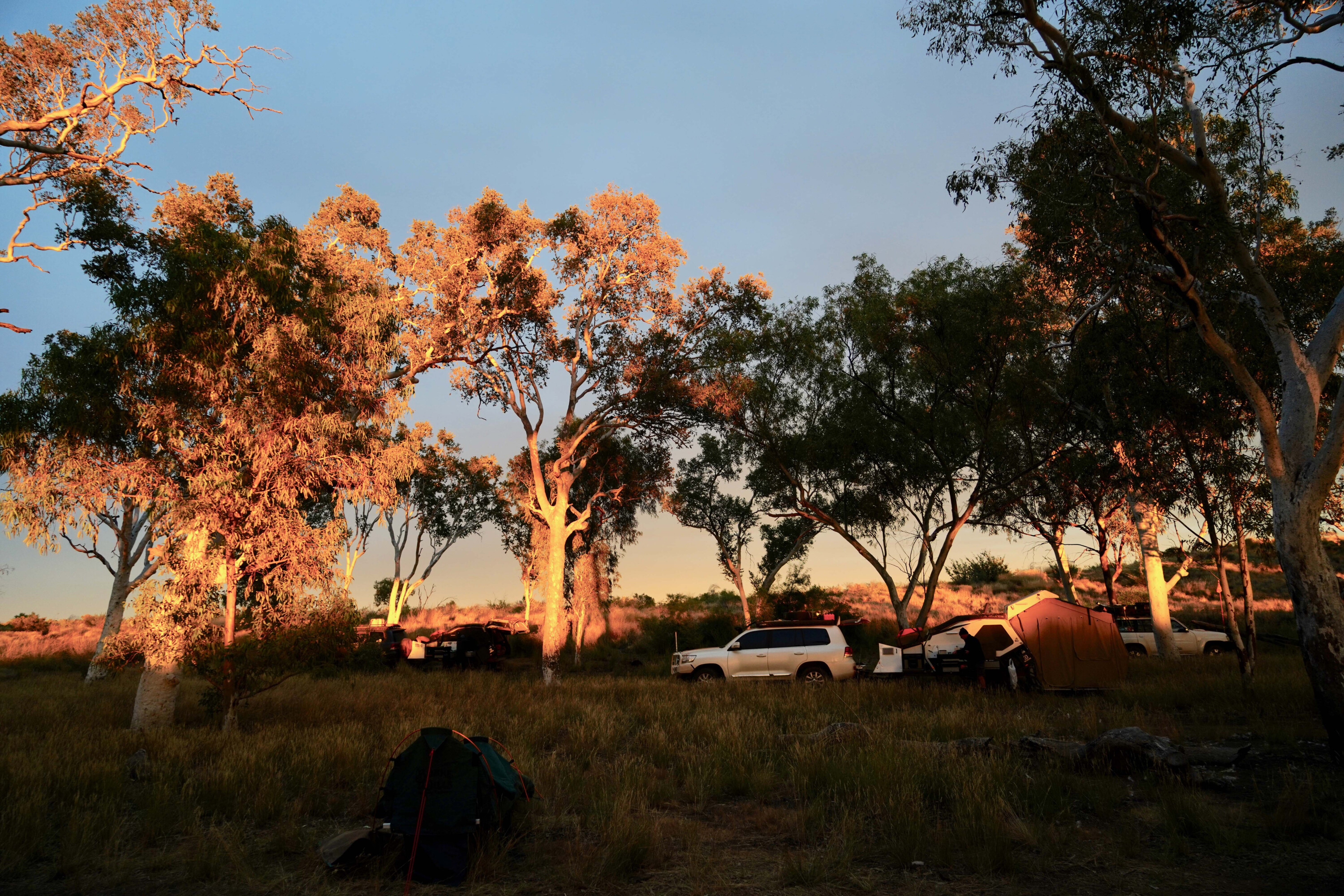
As it was, on our first recent visit in 2022 the place was crowded with four camps and six vehicles, while on our second visit in 2023 there were two camps, both a big difference to my first visit in the early 1990s when we saw nobody in the whole park.
The track winds across sharp-edge creeks and among some bluffs with Compton Pinnacle being a stand out landmark. Just before you get to the carparks at DQB there is a track junction, the right-hand one taking you a few hundred metres to a couple of small parking areas below the red rocks of the rugged range.
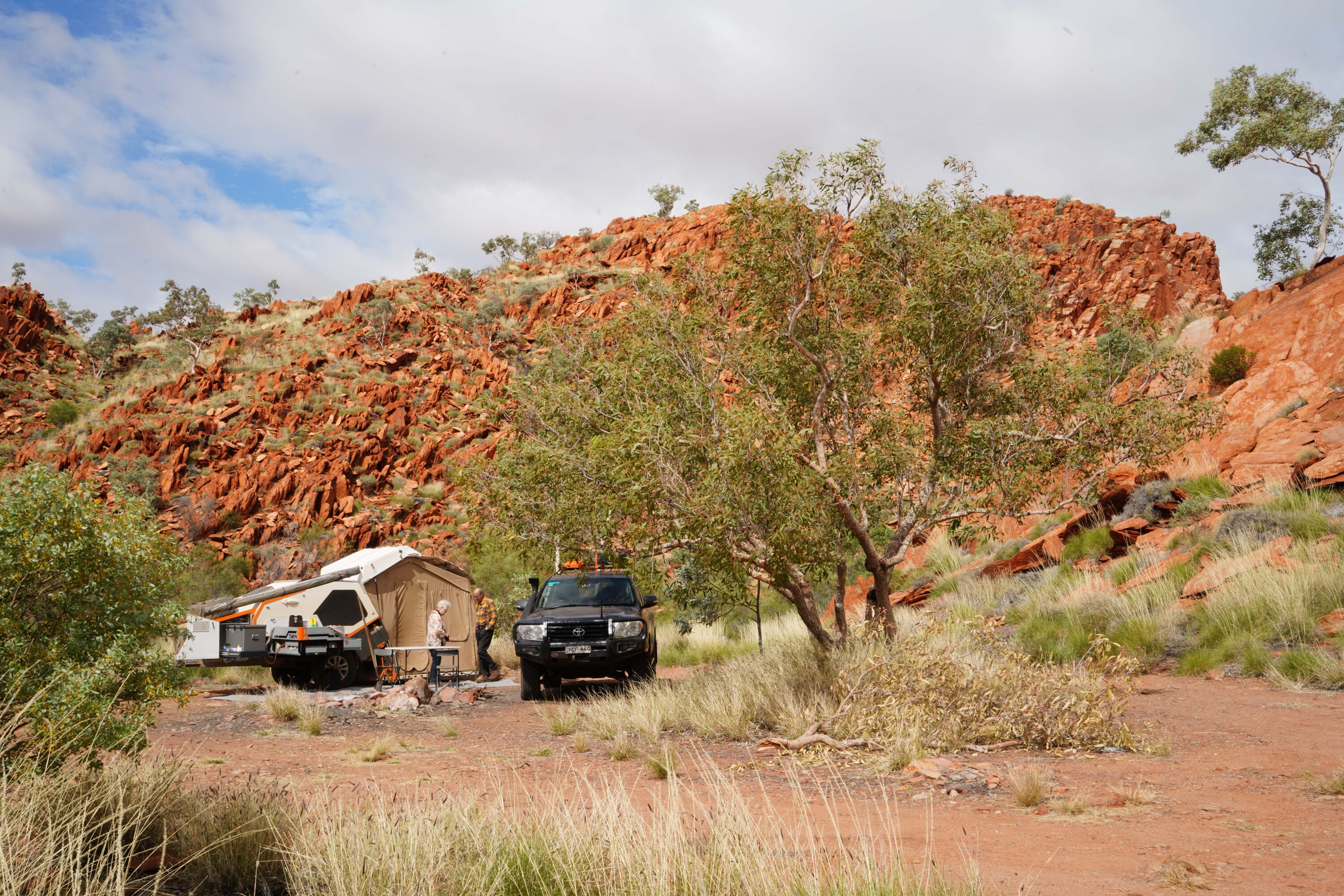
From here you can wander deep into the gorge following the waterway to a series of pools that will take you ever deeper into the range. Rather surprisingly, this permanent water isn’t on the Rudall River itself, but a tributary of the Rooney Creek which meets with the main river some distance east.
While I have looked for Aboriginal rock art on the bluffs around these sources of permanent water I haven’t had much luck, even though I had surmised there had to be some. And later, back home, I found a photograph in a dust-covered report that detailed some faint petroglyphs above the main pool.
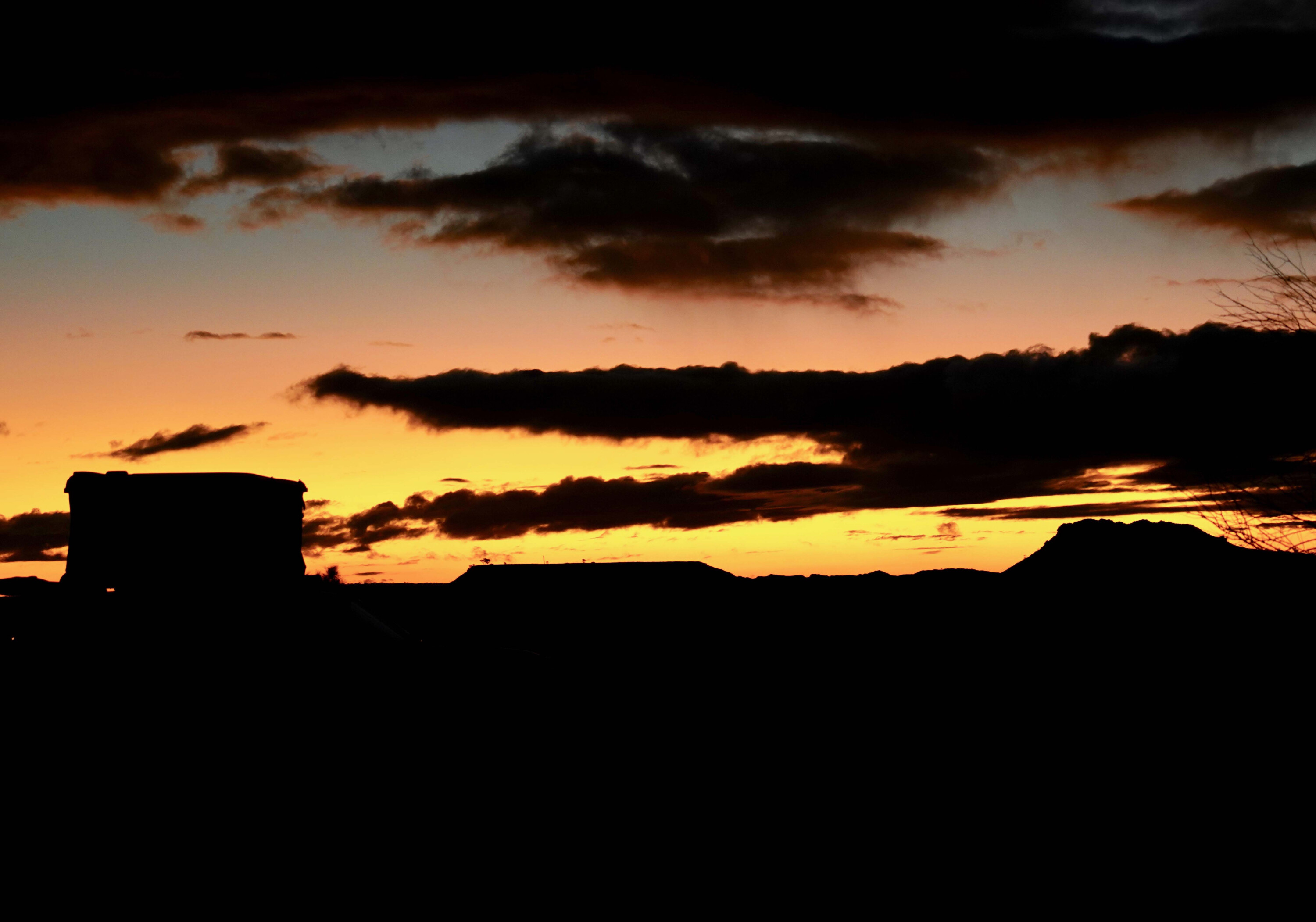
Don’t try and drive up to the mouth of the cave, but rather stop at the small parking bay and walk the couple of hundred metres to the cave itself; inside you’ll find some Aboriginal art, seemingly having been touched up rather recently, a procedure that was often followed to keep the art fresh and the spirit world working in your favour.
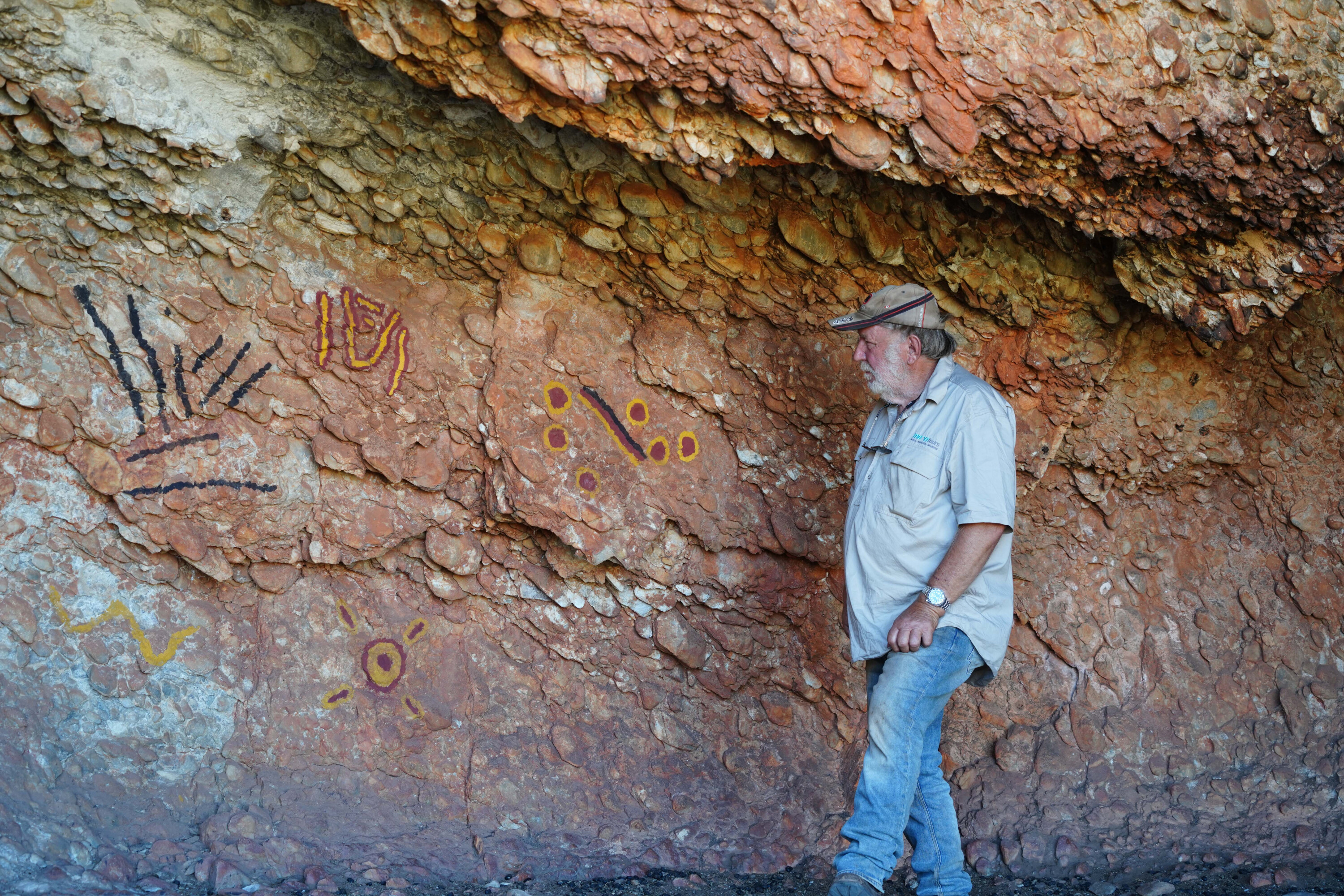
After enjoying the gorge and the reinvigorating water (yes, it was cold) we headed back to our camp for a few beers followed by a meal and a yarn around the campfire.
The next day we continued northwards out of the park , following some sandy creek beds, but more often than not on top of rocky gibber-strewn undulating hills. In 2022 we headed to the mining centre of Telfer, while last year we veered west and passed the Nifty Copper Mine to meet the blacktop at the mine haul road of Woodie Woodie, our adventure over for another year.
Karlamilyi NP: parks.dpaw.wa.gov.au/park/karlamilyi [↗️]
Punmu community: (08) 9176 9110
Parnngurr (Cotton Creek) community: (08) 9176 9009
Marble Bar Museum & Visitor centre: 0484 857576
Newman Visitor Centre: (08) 9175 2888
Karlamilyi National Park is accessible by four-wheel drive over rough and unmaintained roads. Access from Newman is via Walgun and Billinnooka along the Talawana Track to the park turnoff (approximately 300km). Access from Marble Bar is along Ripon Hills Road and Telfer Road to the northern park boundary.
There are no facilities in the park. Visitors need to be self-sufficient.
No dogs (or other pets) are allowed in this park.
Entry to Karlamilyi National Park is free.
Fuel and other supplies are available at Newman and Marble Bar. The Punmu and Parnngurr communities have limited fuel and other supplies.
Some folks like to drop a bunch of coin on their rigs for tax purposes, or maybe they just want to get it all done in one fell swoop, or maybe they just like spending money and want their rigs to look tough.
For Dylan Brechbuhl, building up his 2014 HiLux was a much slower process. It’s not that he didn’t have the money so much as he wanted to make sure he was investing the time and effort into the right places.
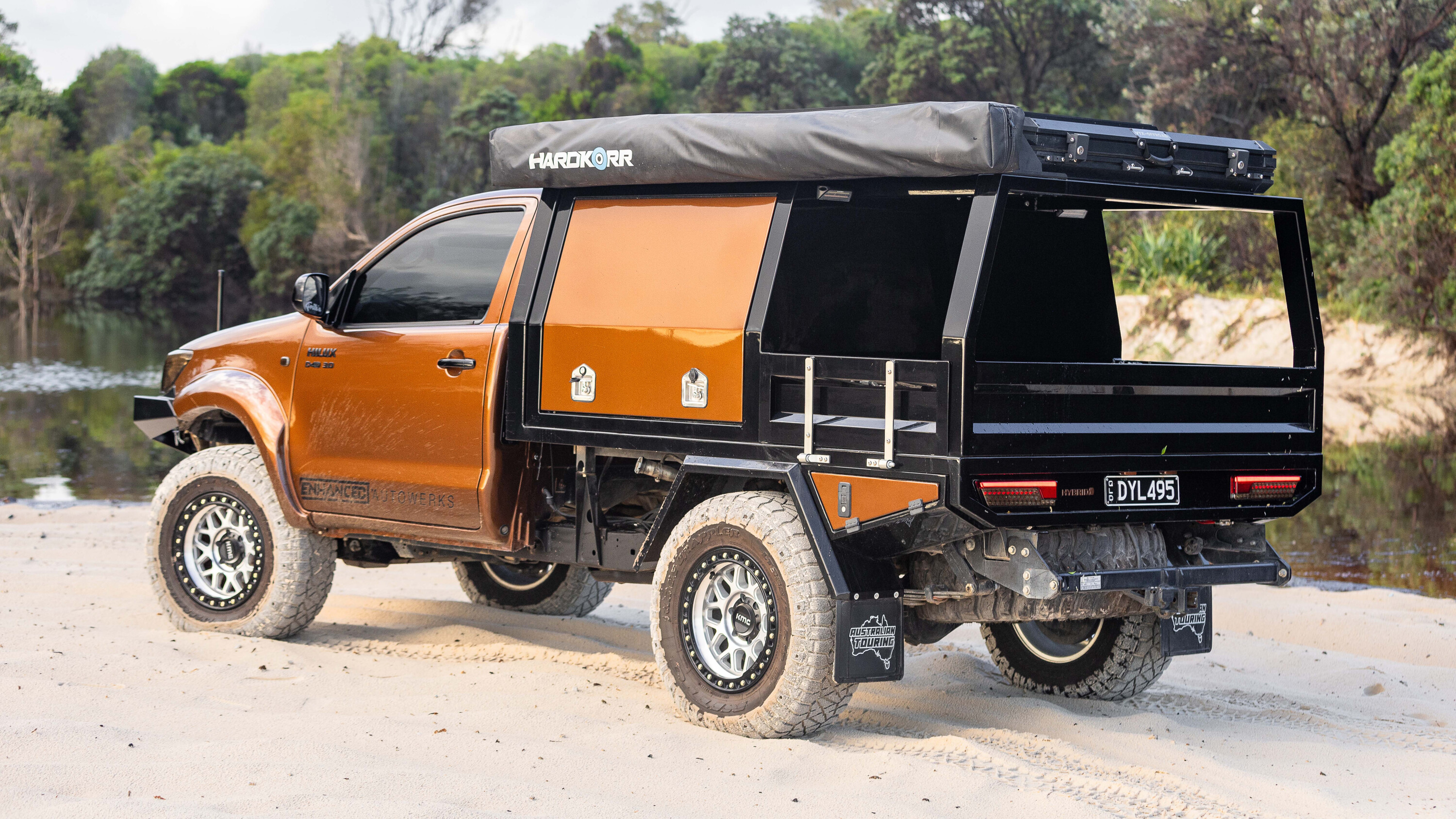
Which, let’s be honest, is arguably the smarter way of doing things – there’s no point in dropping several gorillas on 400A of lithium when all you’re powering is a couple of LEDs and a small fridge on the occasional overnighter.
Now that his Luxy is getting close to done (not that they ever really are, of course) he can sit back and be proud of what he’s created, with the help of a few good mates along the way.
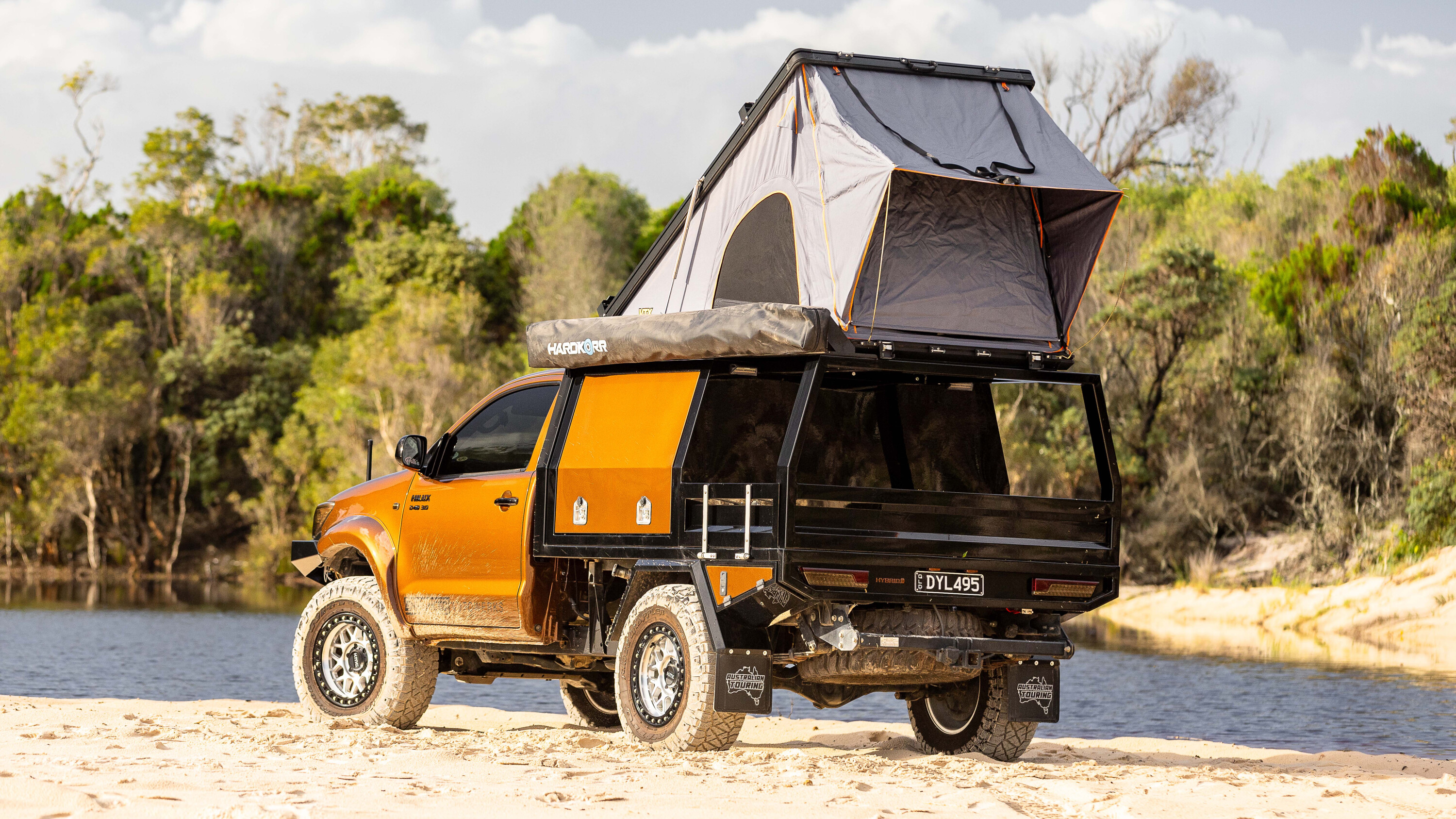
First, you actually get a useable tray (come on dual-cab people, you know that anything longer than one of your Grandpa’s stories about how he invented gravity won’t fit in your tray), plus the overall vehicle weight is lower so performance is increased; and once your ears are past an obstacle off-road you know there are no more panels to damage so you can punch it. It’s surprising there aren’t more of them out there.
Dylan first picked up his HiLux on cheese-cutter tyres and the standard white-on-white paint job as seen on job sites all over the world. It had lived the first 170k of its life as a Coca-Cola service vehicle, so the maintenance had been on point with no off-road work. Overall, it was in top condition.
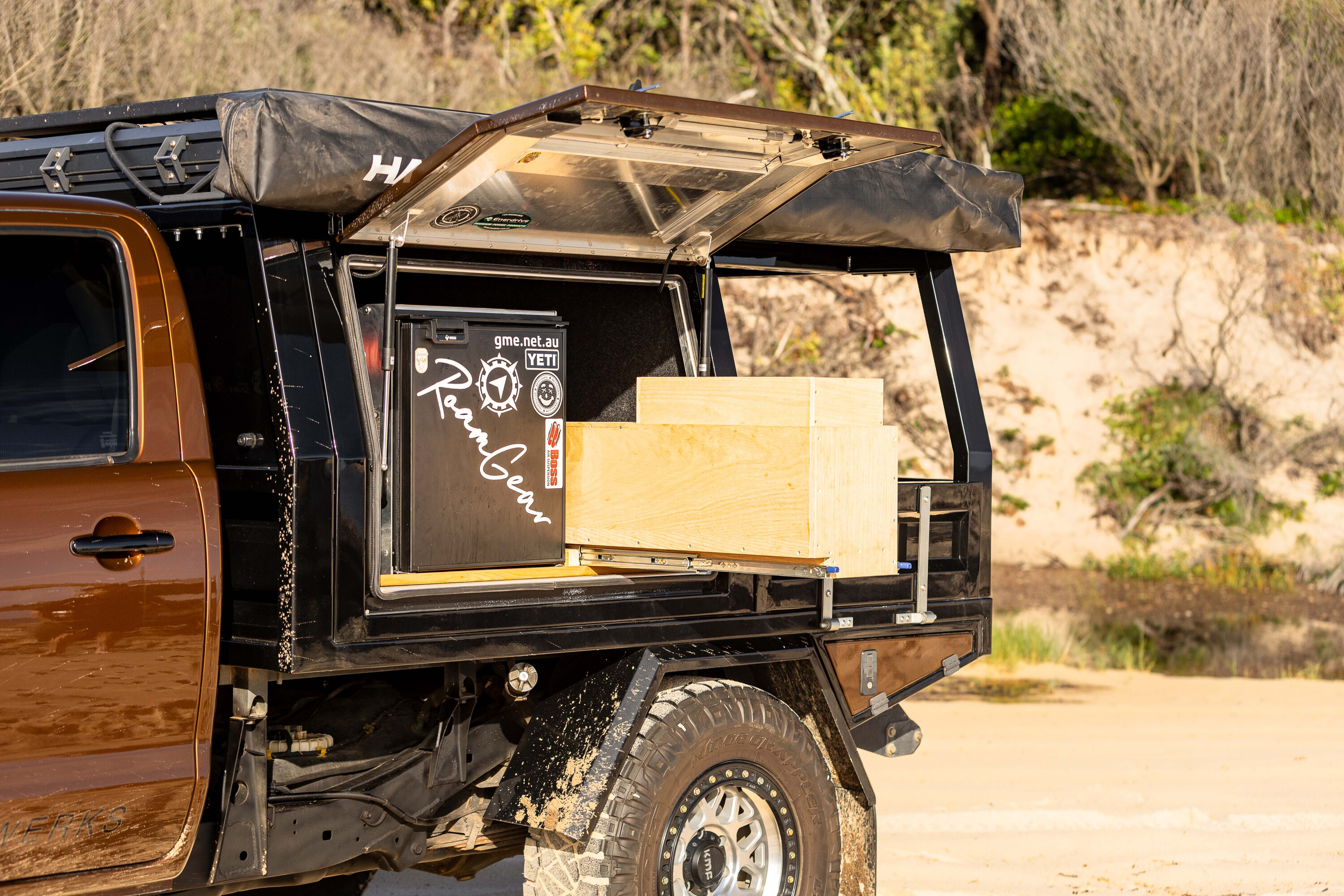
He’d wanted somewhere to store his tools during the week and load up with camping gear on the weekends; but he didn’t want to tow a trailer with him, so the enclosed canopy was ideal.
Unfortunately, the steel tray was heavier than a Dr Phil episode about obesity, so it was regretfully sold off, leaving Dylan a bunch of blank real estate that needed building on – but we’ll get to that in a sec…
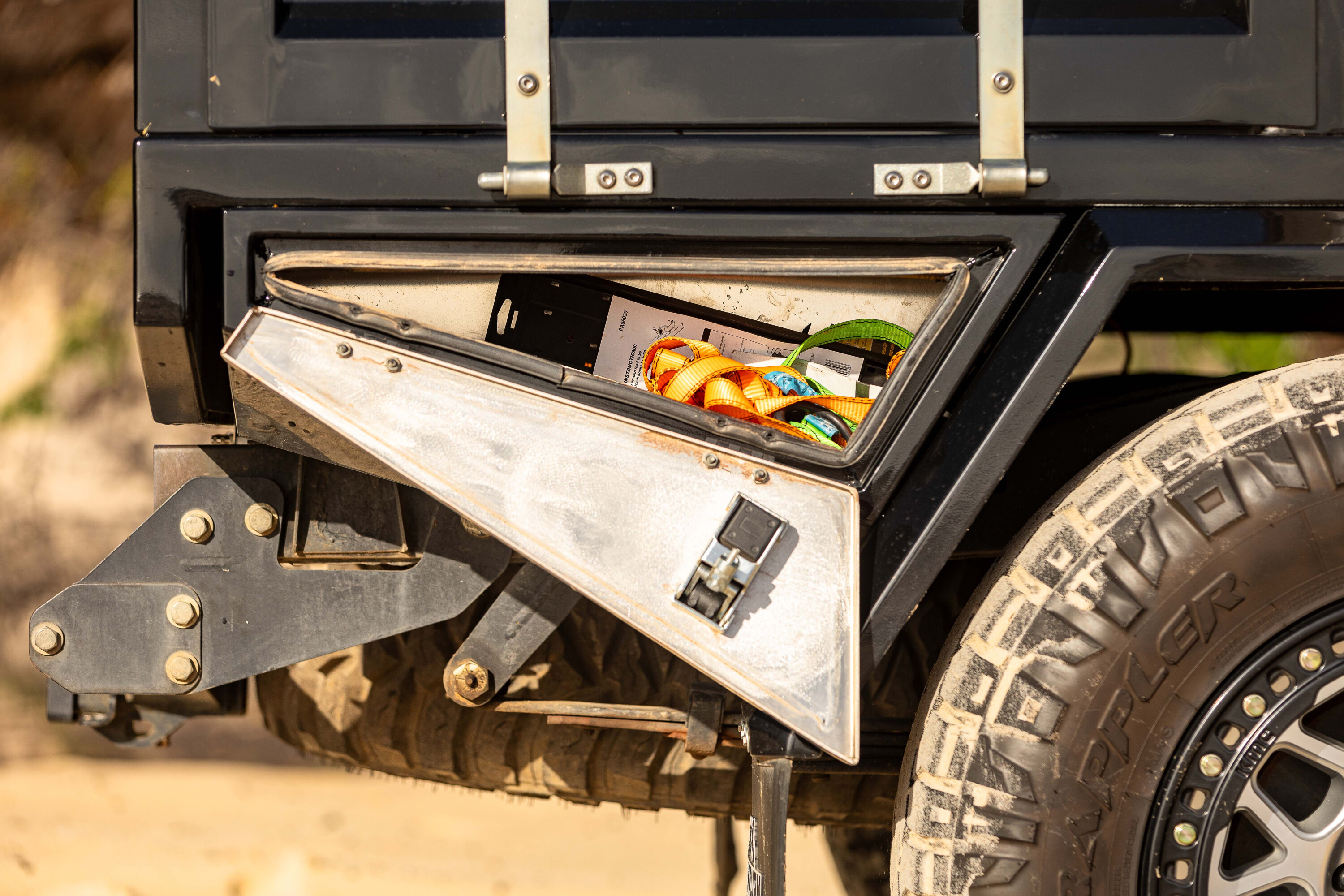
As anyone who has done a paint job before knows, the actual painting is only about 5 per cent of the job; the rest is all in the prep. So Dylan got busy with the block sander and high-fill and painter’s tape, before his mates came by and laid the colour down for him and the main panels were ceramic flow-coated to get it all nice and glassy looking.
Like most people who do their own paintwork Dylan swears he’ll never do it again, but the hard work paid off, because it looks nothing short of spectacular.
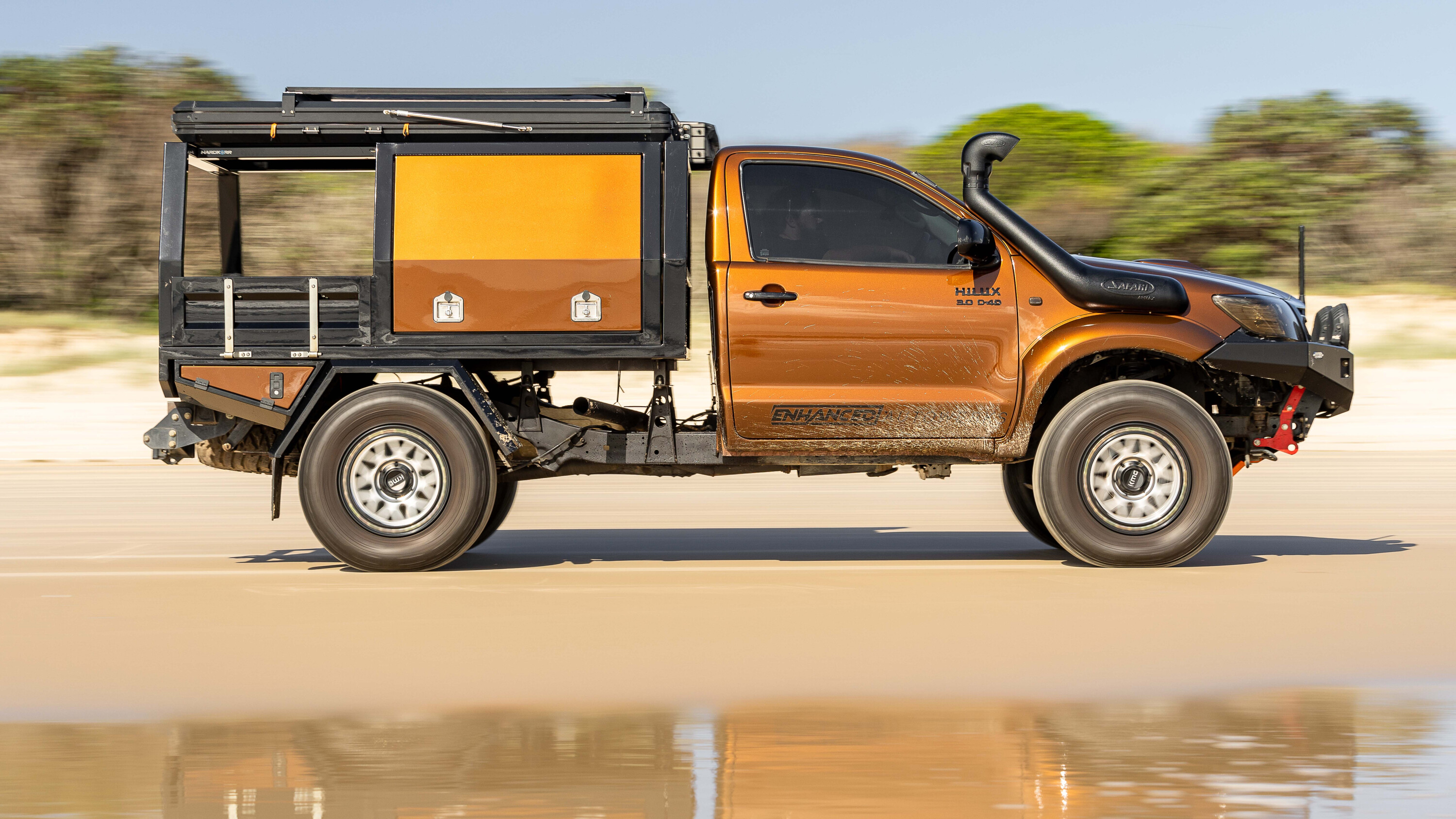
The venerable 1KD 3.0L turbo-dizzle remains stock for now, other than the three-inch PPD Performance exhaust, Safari Armax snorkel and PPD catch-can and pre-filter. Don’t be too surprised if by the time you read this Dylan has turned up the wick a little.
With the heavy steel tray gone, the suspension was all out of whack, so Dylan threw in a set of Holden Colorado RG leaf springs with 190mm shackles out back – which are longer and allow for more flex – as well as a set of PSR long-travel shocks designed for an N80, and a set of helper bags for the heavier loads.
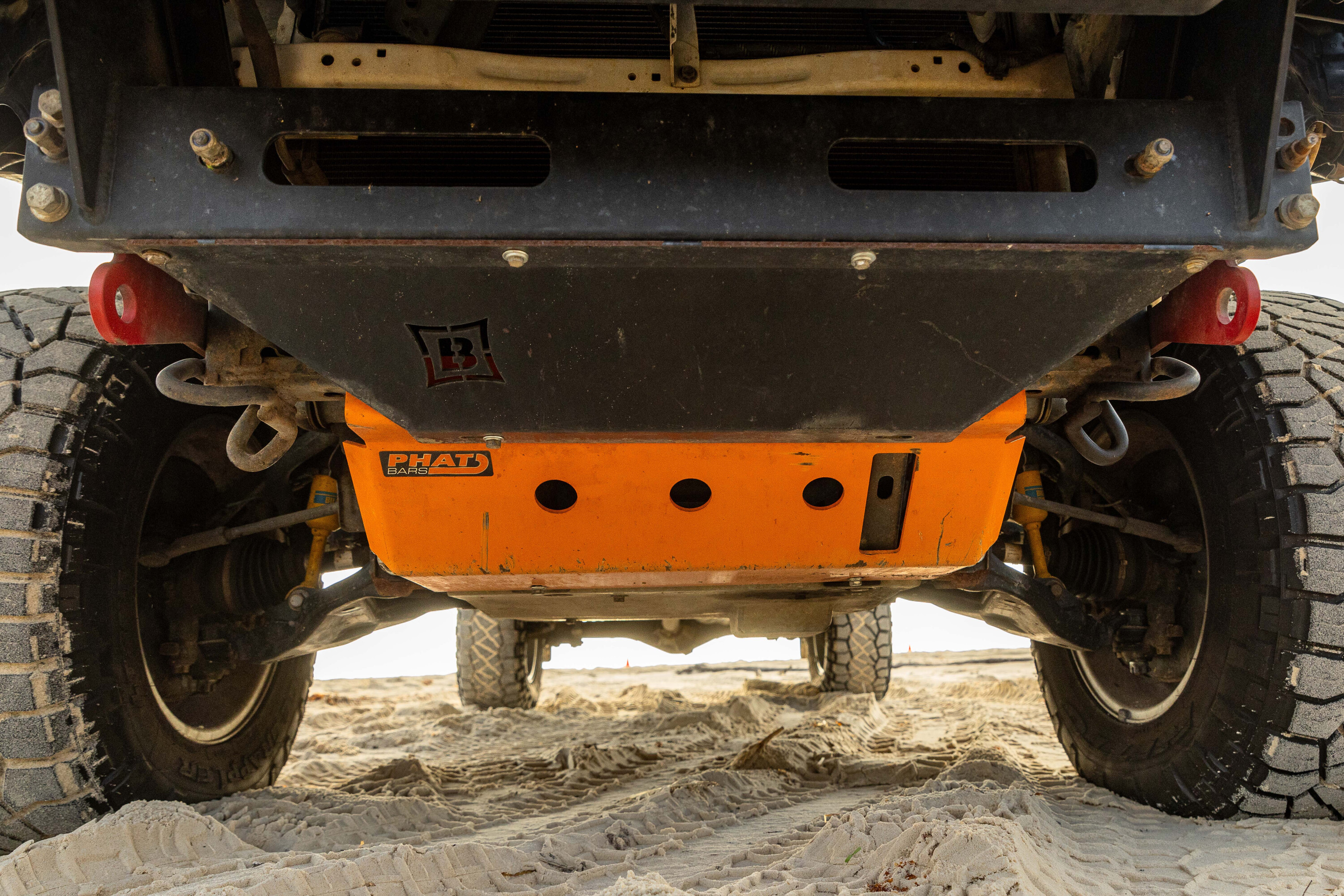
The standard skinny rubber and steelies were introduced to the bin and replaced with some slick 17×9 KMC-machined alloys with a satin black outer ring, surrounded by 285/70R17 Nitto Ridge Grapplers.
The underbody is also landmine-proofed via Phat Bars 5mm steel bash plates that are sturdier than Taylor Swift’s bank balance. Should Dylan’s world suddenly become inadvertently inverted, there’s a half-cab steel roll bar fitted courtesy of the good folks at Coca-Cola.
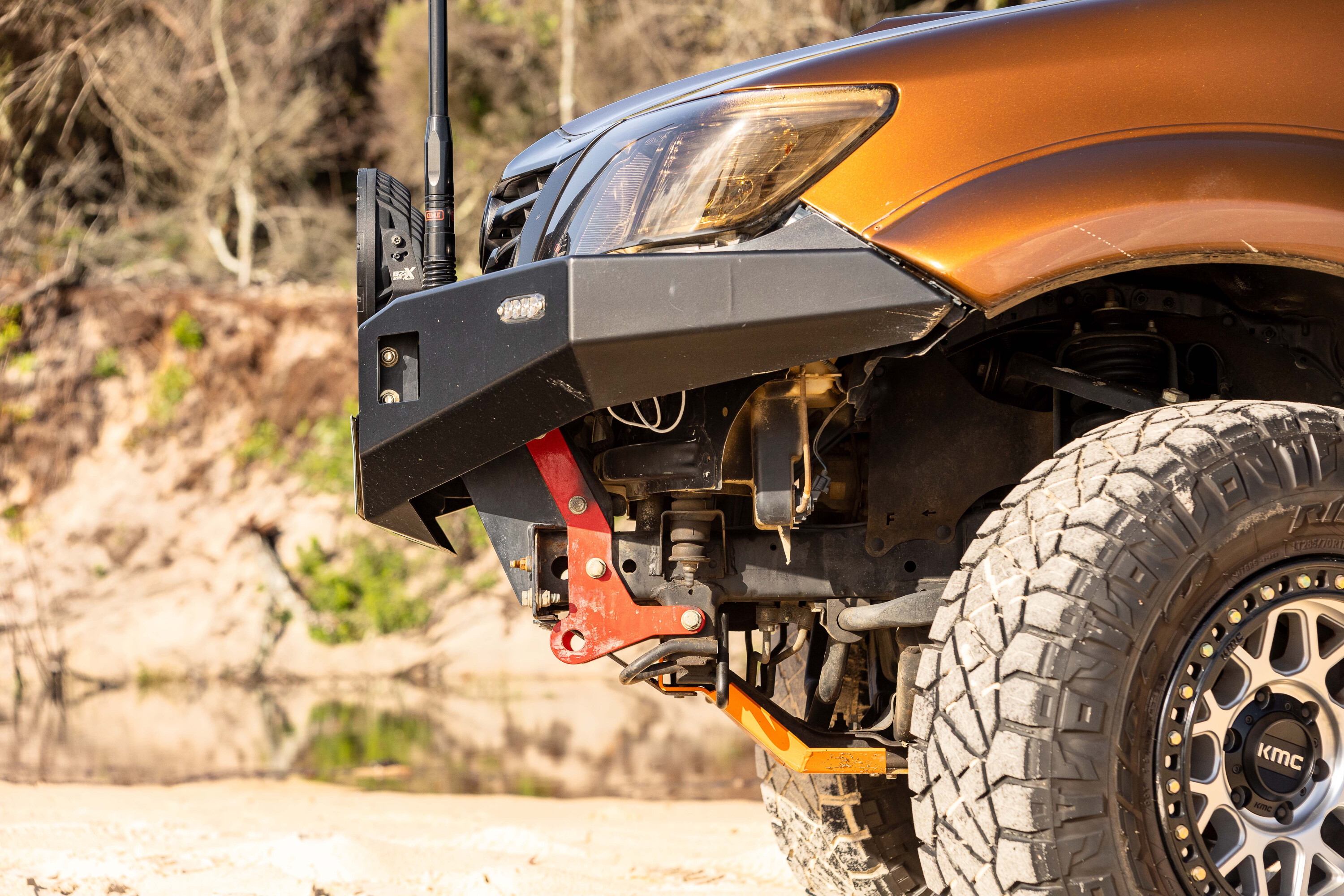
Custom made from aluminium to keep the weight down, the whole show was shortened down to 2200mm, with a 1200mm-long Magnum canopy keeping the 150Ah second battery and Bushman upright fridge out of the elements. The whole thing has been braced and strengthened to take the VTX Offroad roof-topper and hang the HardKorr 270° wraparound awning.
Drop-down sides at the rear make loading heavier items a bunch easier, and the under-tray toolboxes on either side have been built with matching angles to make everything look seamless.
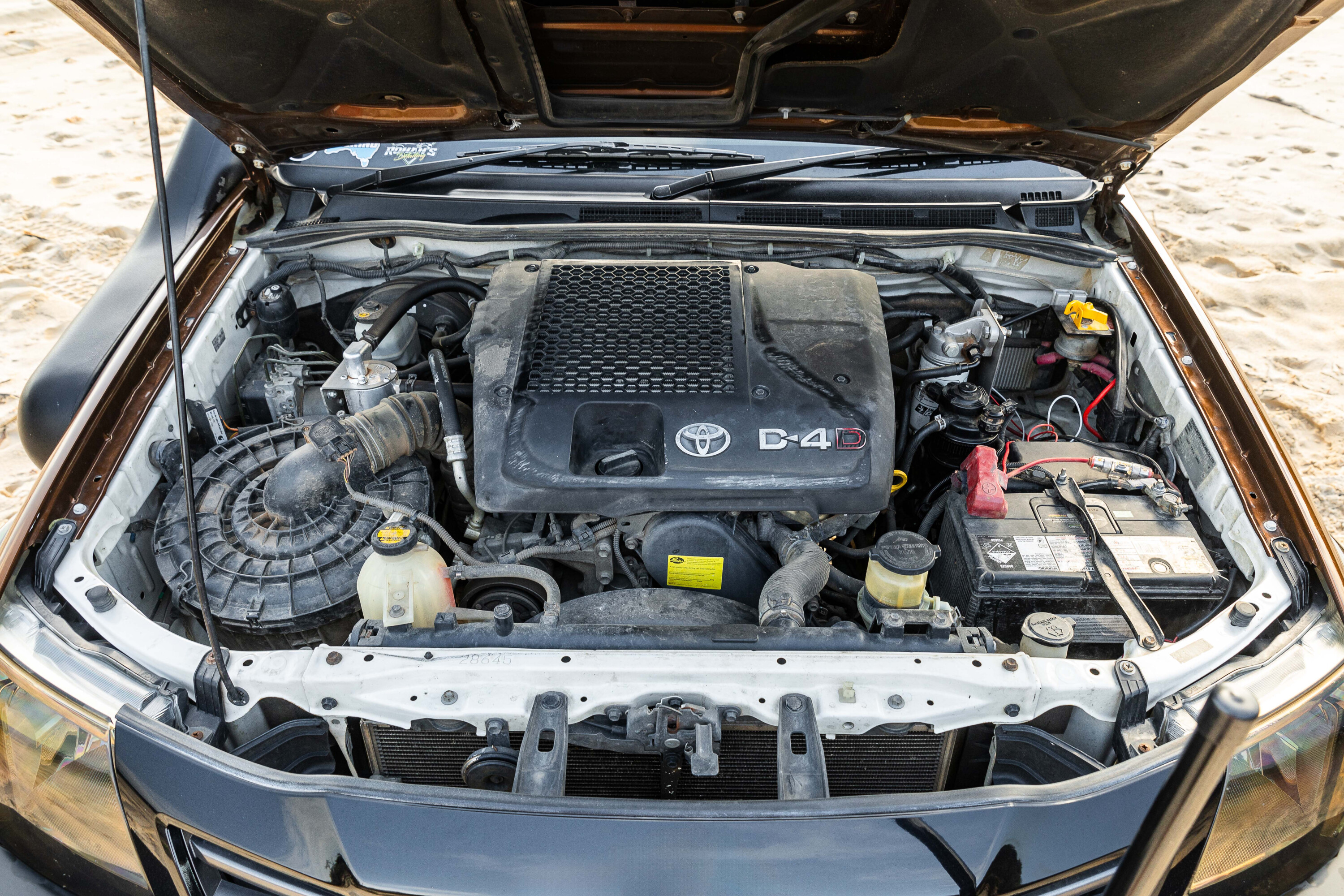
Dylan, being a chippie, built his own two-drawer set-up in the canopy for tools, clothes and sleeping gear, leaving enough space for bulkier items to be stored on top. The passenger side is in the process of having a slide-out pantry and drop-down table built (again by Dylan), which will make camp food-prep that much easier.
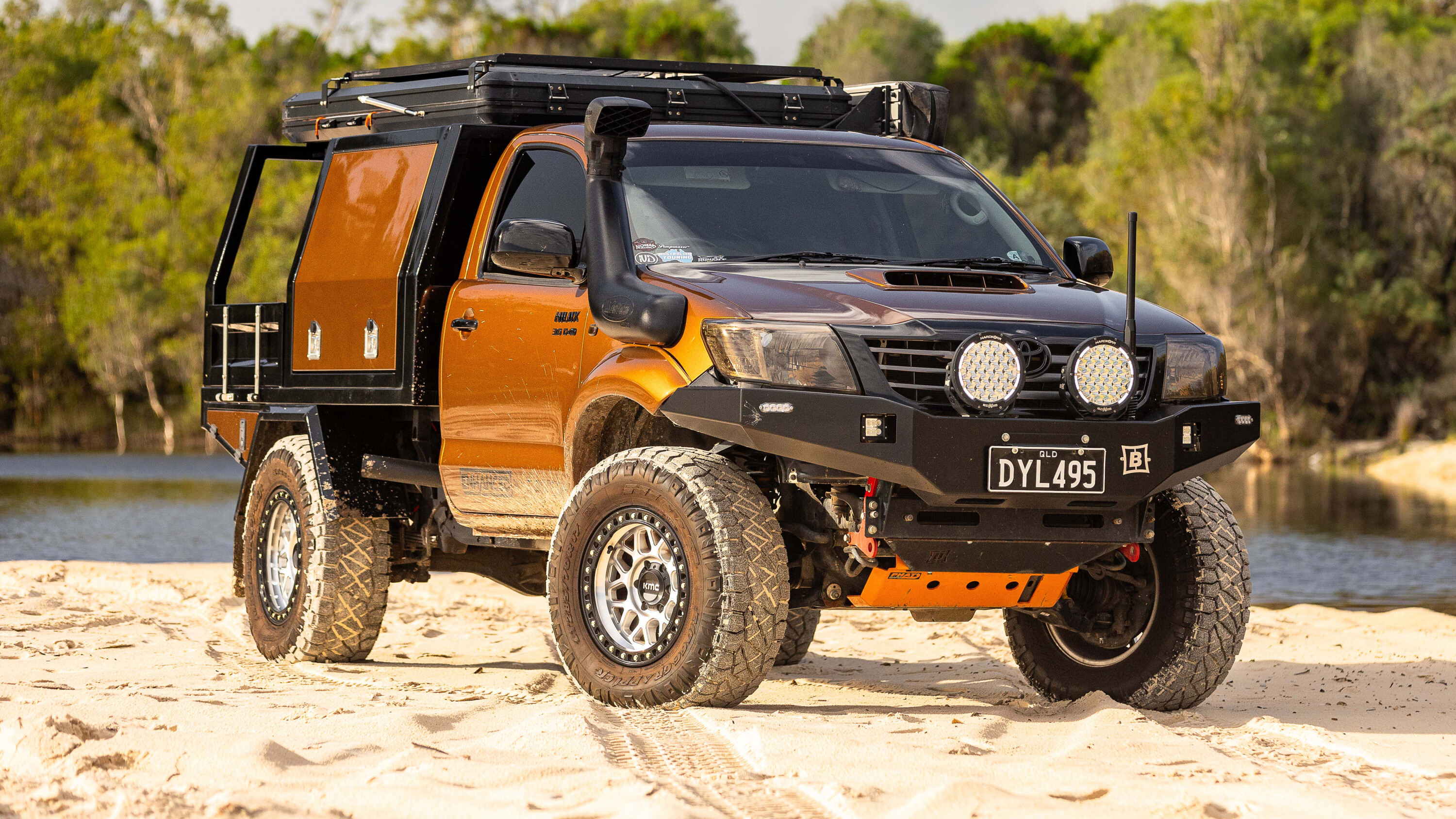
Water tanks, long-range fuel tank, a pair of Recaro butt-huggers, a locker or two, and maybe even a rear coil conversion for increased comfort.
Oh, and maybe a 12V upgrade and a nicer rooftop tent while he’s at it. But as we said, he’s not the type of bloke to rush these things. He’s too busy being out on adventures and enjoying his rig. The way it should be.
Dylan wanted to thank Nomad Welding for the tray build, CJ Fabrication for the under-tray boxes, Roam Gear for his 12V set-up, HardKorr for the awning and lights, as well as a couple of good mates for their help with the painting and suspension install.
That timing will make the Cannon Alpha the first hybrid ute in Australia, beating the new Ford Ranger PHEV to market by a few months at least, along with others like the hybrid HiLux and the recently teased BYD plug-in hybrid ute.
As a big brother to the Cannon already sold in Australia, the Cannon Alpha measures 5440mm long (+30mm over the Cannon), 1991mm wide (+57mm) and 1924mm tall (+38mm), rolling on a 3350mm wheelbase (+120mm).
Ford’s F-150 remains a bigger unit, with a 3694mm wheelbase in its SWB form, but the Cannon could prove a welcome ‘in between’ option.
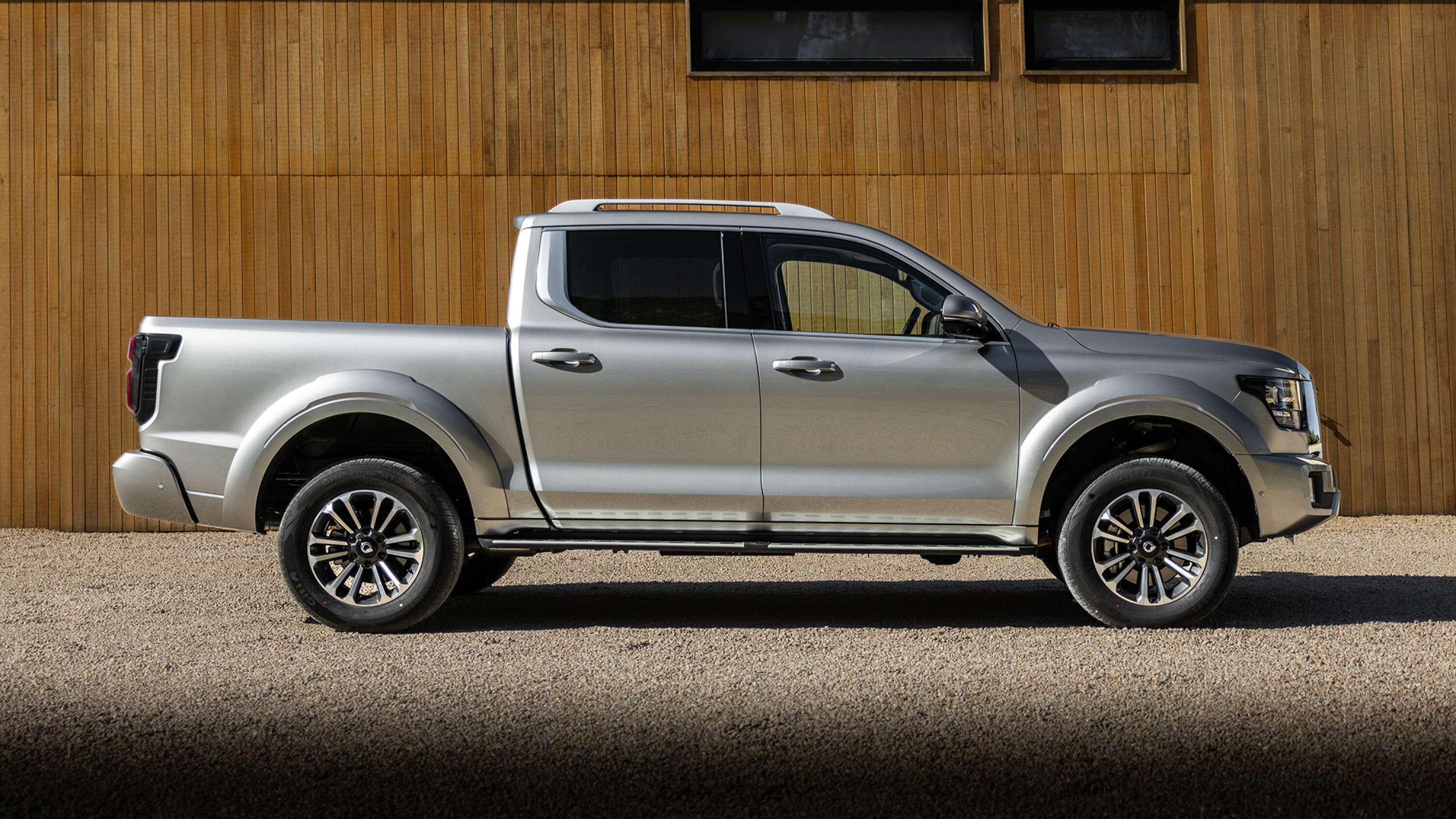
Of more interest to some buyers, however, might be the other option we’ll be offered: a 2.0-litre turbo petrol hybrid engine, its combustion and electric motors combining to deliver 255kW and a huge 648Nm. On their own, the motors produce 180kW/380Nm and 78kW/269Nm respectively.
Keen readers will recognise this as the same mill that powers the related GWM Tank 500, which made its Australian debut in March – which means you can read 4X4 Australia’s take on that petrol-electric hybrid system at the story linked below.
? “The hybrid system is seamless and something the driver doesn’t need to consider. It has a few modes to suit the driving you do including a Sport mode, which cuts back on the off-throttle power regeneration. In Normal/Eco mode you really feel the deceleration of system-regenerating energy.”
Both the diesel and the petrol hybrid engine are mated to a nine-speed automatic transmission developed in-house, and GWM quotes a braked towing capacity of 3500kg for both powertrains.
Like the Tank 500, the Cannon Alpha offers three driving modes, along with locking front and rear differentials with a Borg Warner full-time, dual-range transfer case.
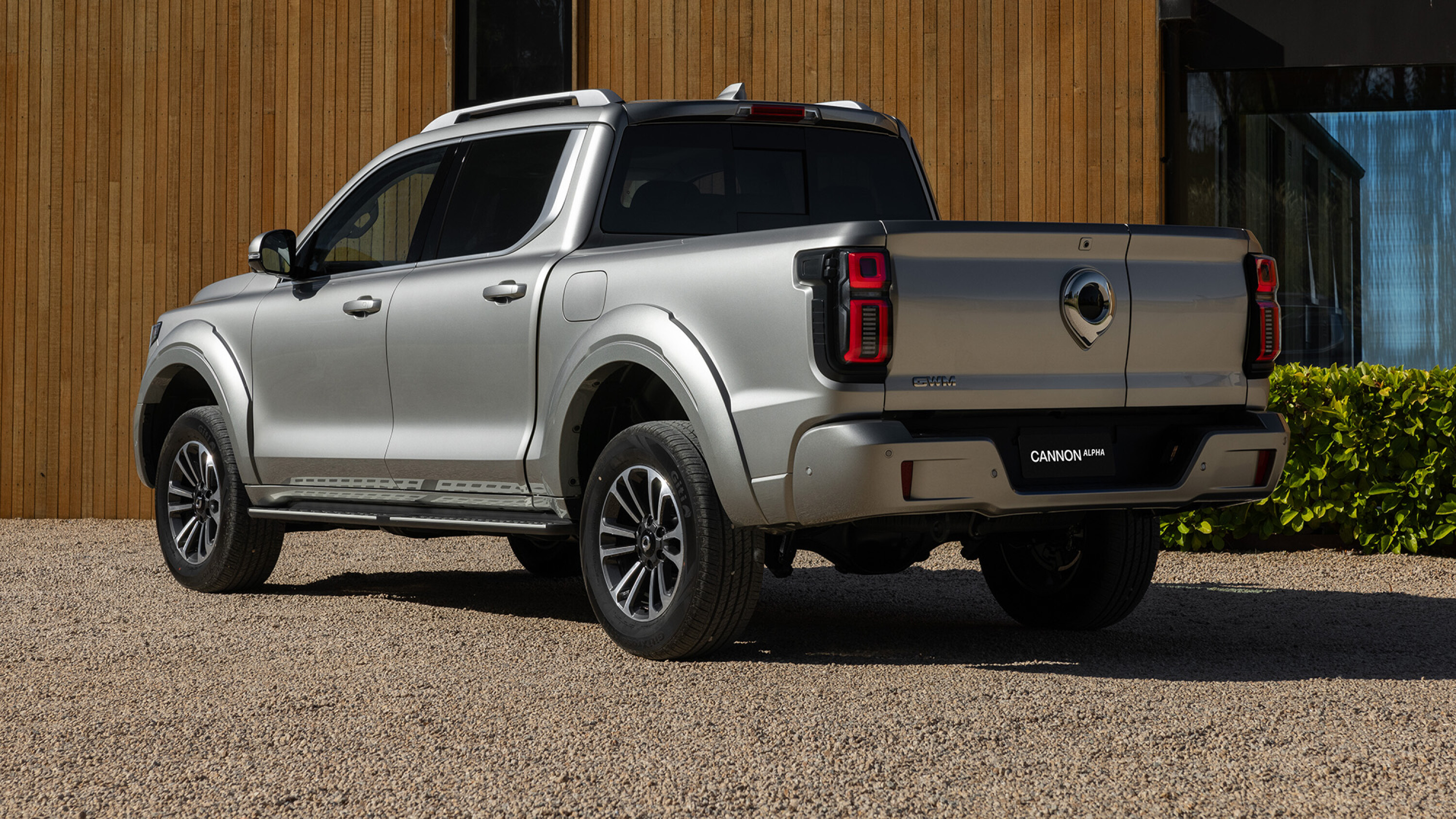
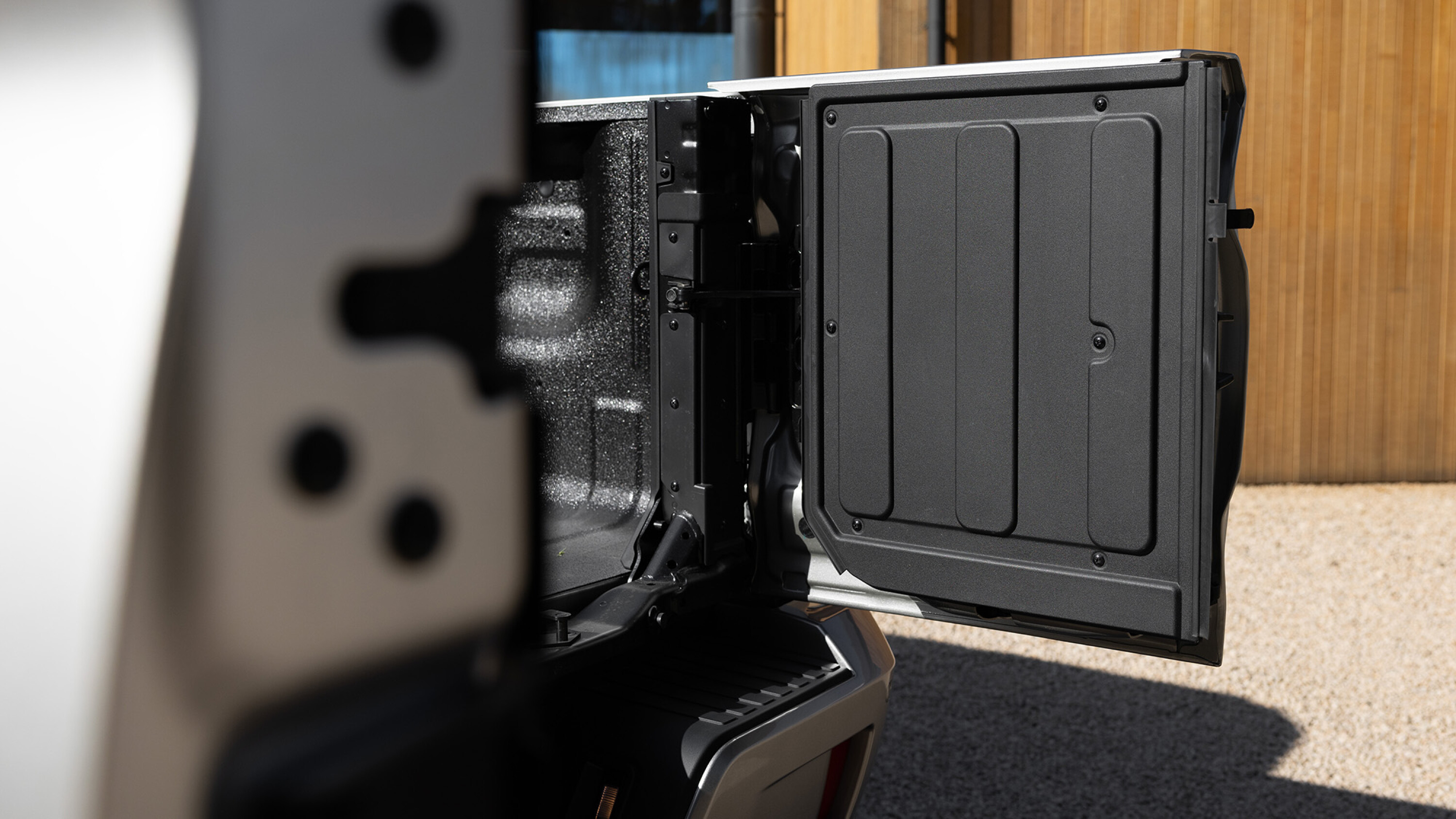
Inside, the GWM Cannon Alpha features a massive 14.6-inch main screen and a 12.3-inch driver display, along with 10-speaker Infinity audio, wireless phone charging, and heated/ventilated/massaging front seats trimmed with Nappa leather in higher-grade models.
Full details will be released in the lead-up to the Cannon Alpha’s mid-2024 Australian launch.
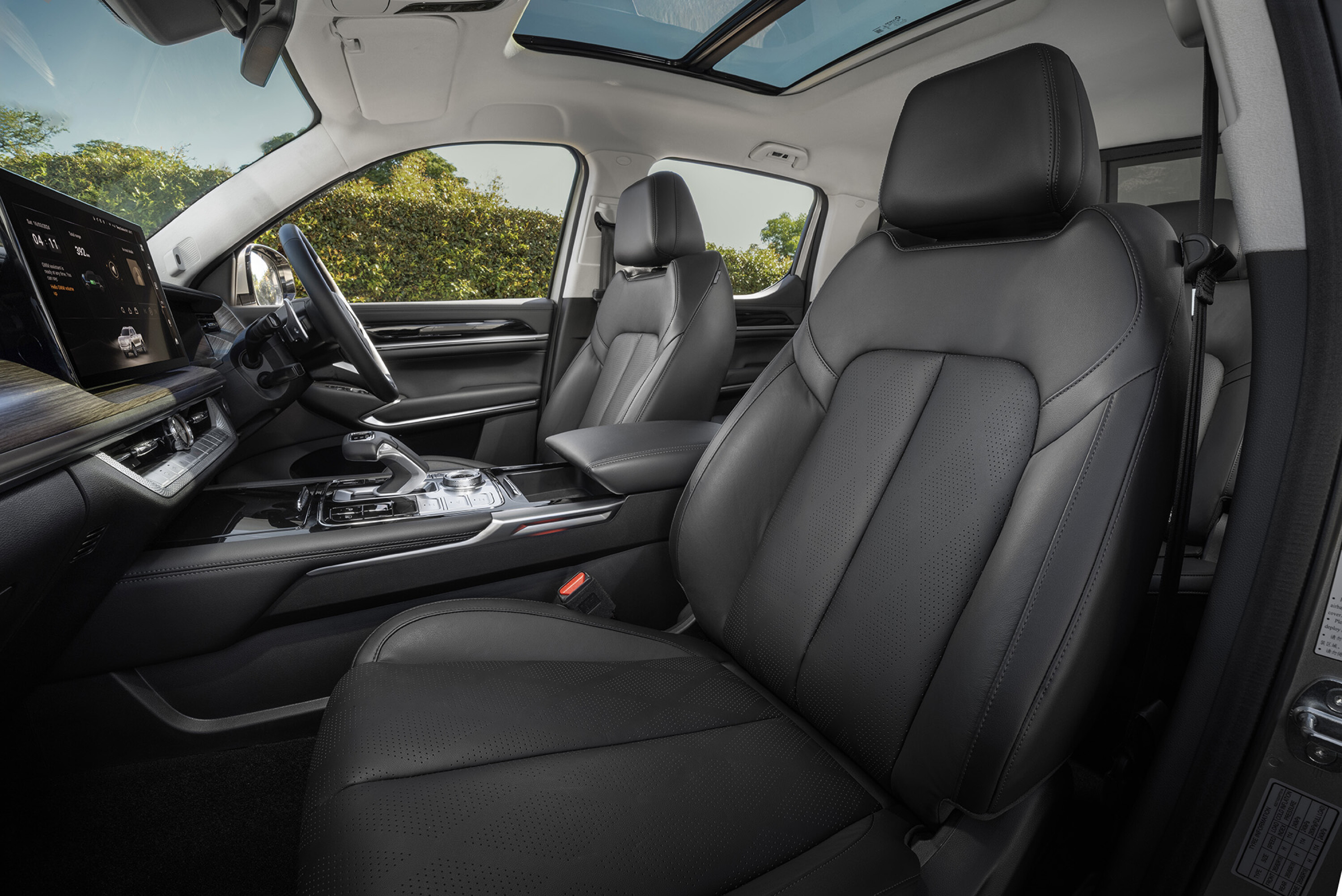
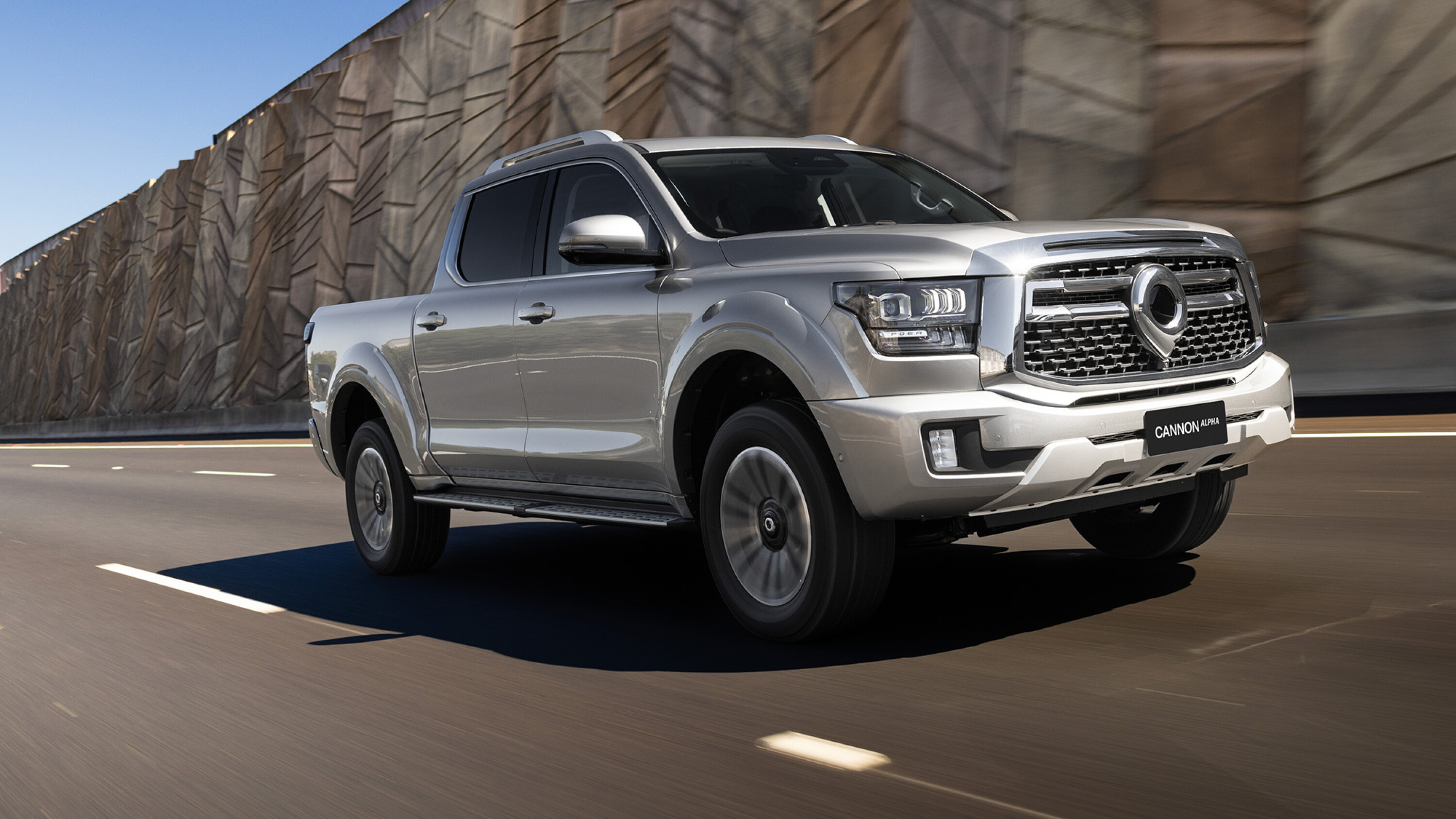
While its Isuzu D-Max donor car has received a comprehensive mid-life facelift, revisions applied to the BT-50 in its Thai domestic market are far more subtle, with no significant changes inside or out.
All versions of the BT-50 sold in Thailand are now fitted with a gloss-black grille – like the blacked-out SP flagship – and a revised lower front bumper, while four-wheel-drive models receive the same ‘rough terrain mode’ as the Isuzu D-Max and MU-X.
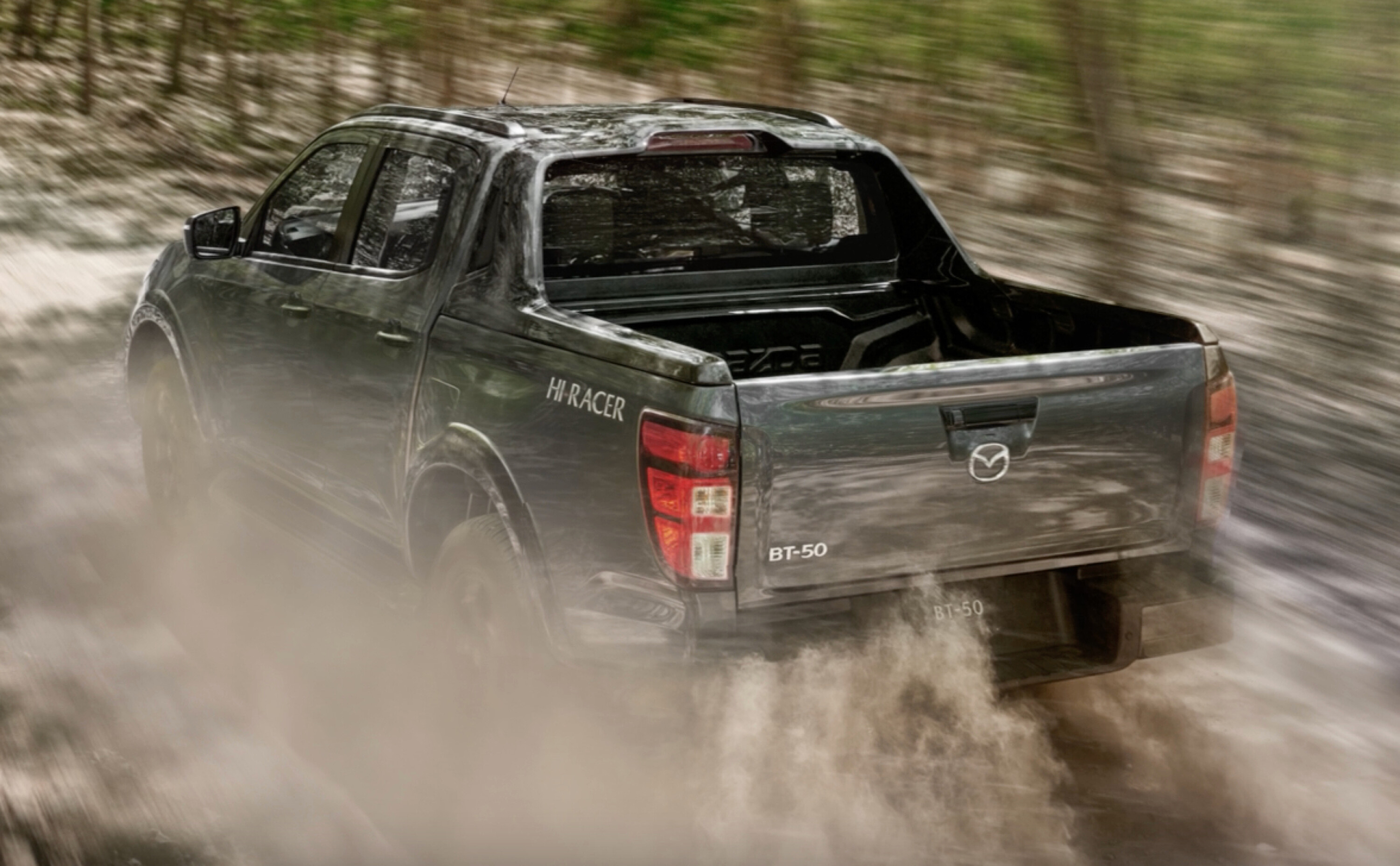
Certain variants are also now fitted with steering wheel-mounted paddle shifters and wireless Android Auto connectivity, joining wireless Apple CarPlay.
The Thai-market 2024 Mazda BT-50 does not receive any further upgrades that have been applied to the D-Max, such as a larger 7-inch semi-digital instrument cluster display, more active safety equipment, front and rear USB-C ports, volume and tuning dials replacing hard buttons, and new alloy wheel designs.
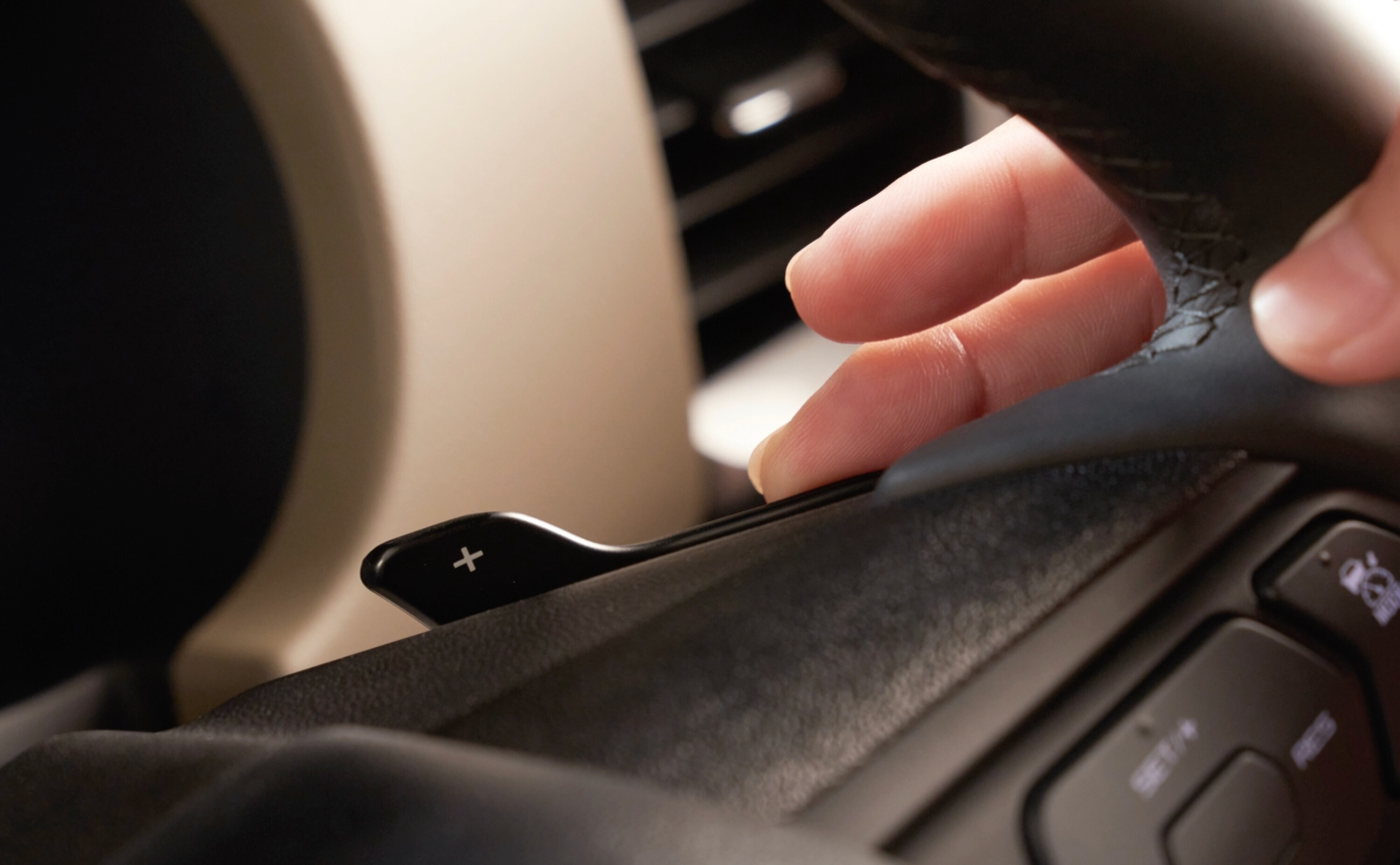
For instance, the previous-generation BT-50 – based on the ‘T6’ Ford Ranger and built on the same production line – did not receive any significant upgrades, while the Ford was treated to almost annual revisions and two separate facelifts over its 11-year lifecycle.
However, there is a possibility that Australian versions of the BT-50 could receive further upgrades to better rival the facelifted D-Max, which is due to arrive in local showrooms imminently.
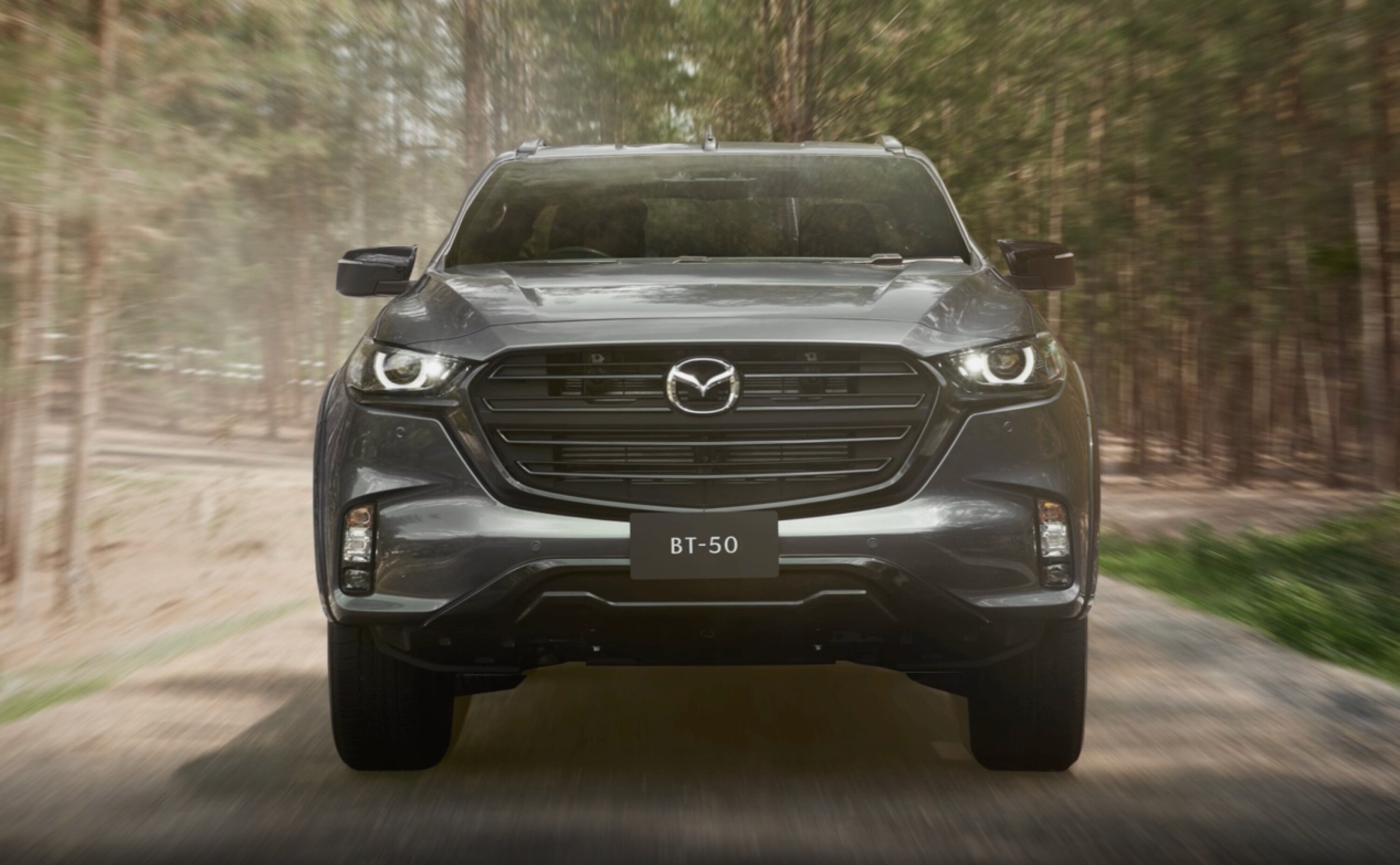
4X4 Australia reached out to Mazda Australia to ask whether the updates applied to the BT-50 in Thailand would reach local showrooms, but a spokesperson said the brand “can’t comment on future product plans”.
The BT-50 was recently axed in New Zealand and South Africa, though it will remain available in Australia, where it has a more substantial market share and importance to the Mazda brand.
“The Mazda BT-50 remains in production and on-sale in a number of global markets including Australia,” said a Mazda Australia spokesperson.
”2023 was a sales record for BT-50 in Australia of 17,526 units and its popularity continues to grow with customers across the country.”